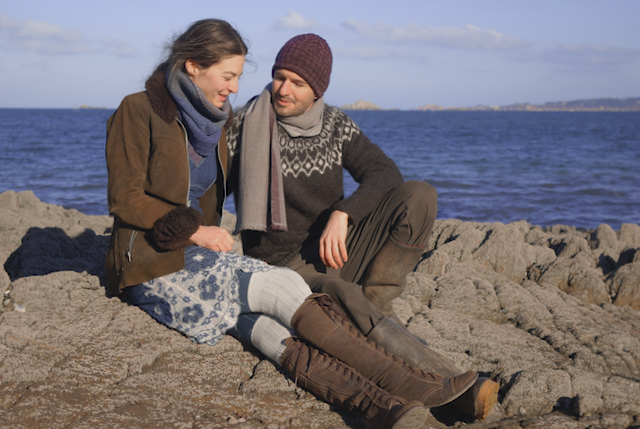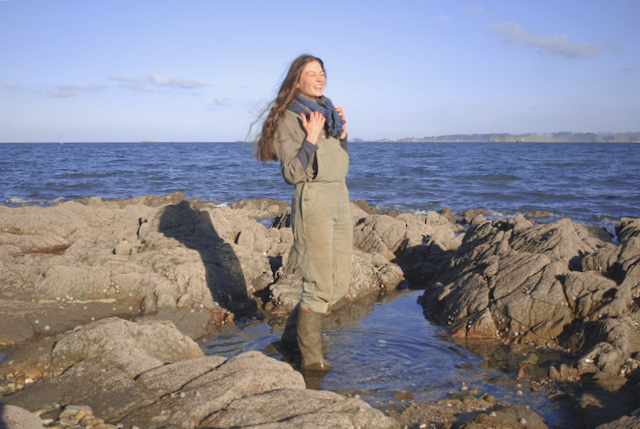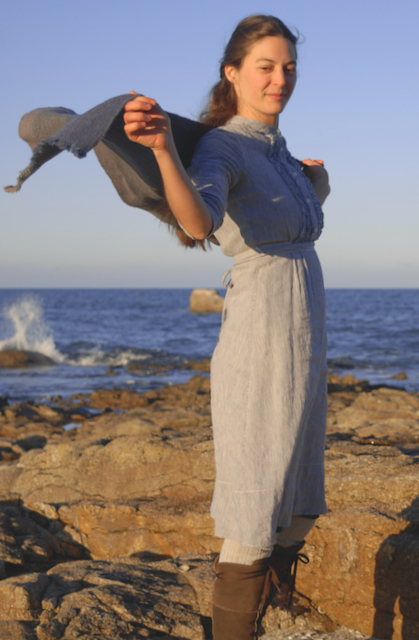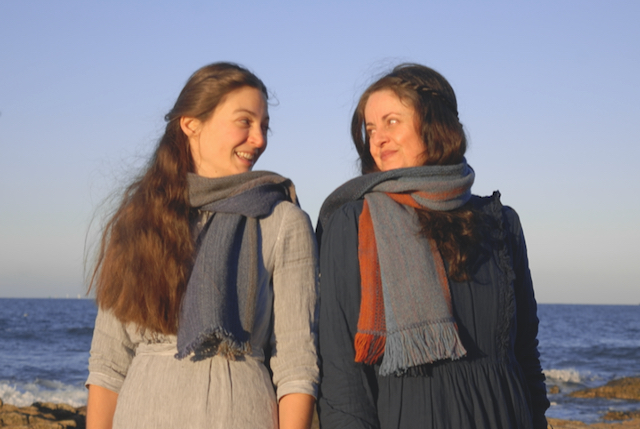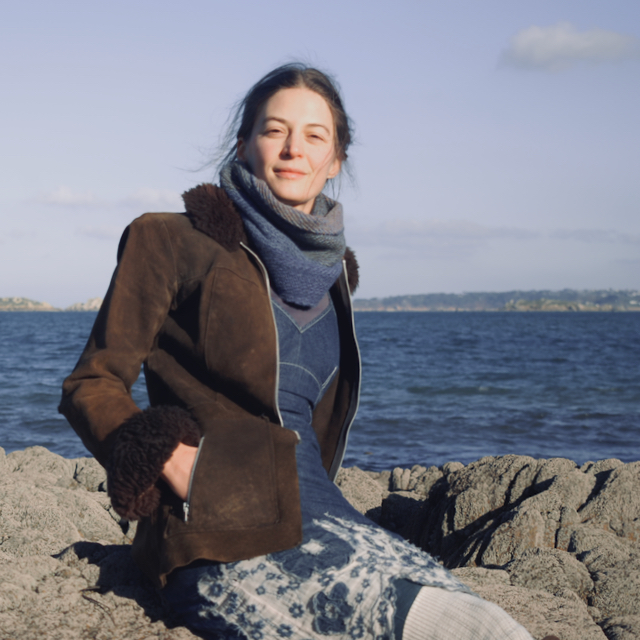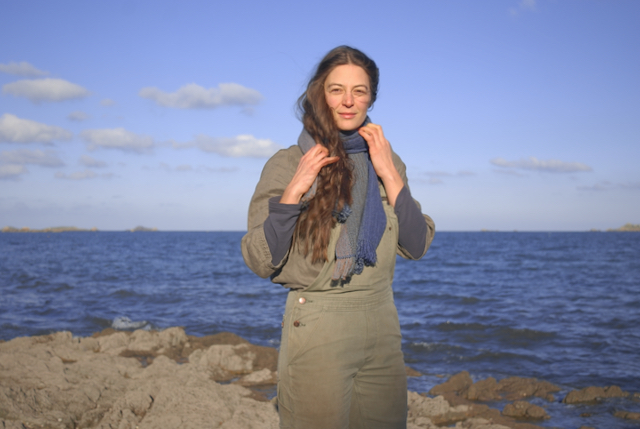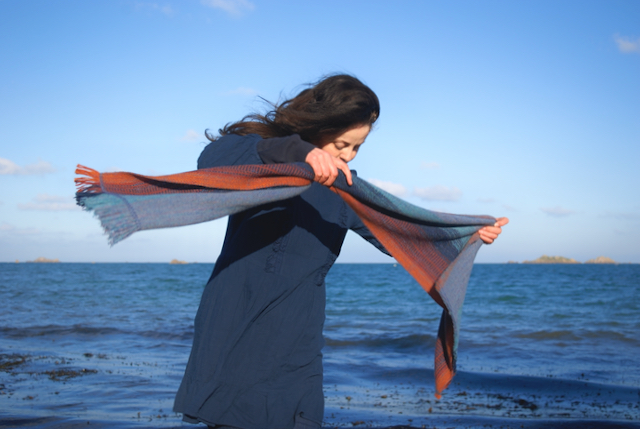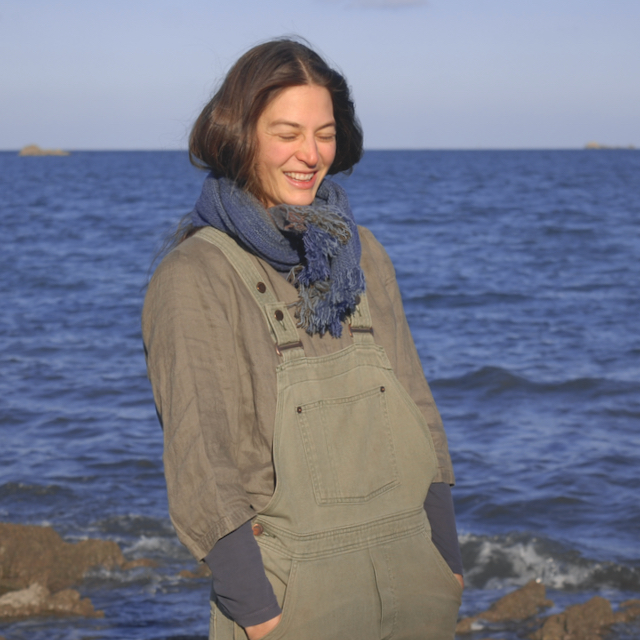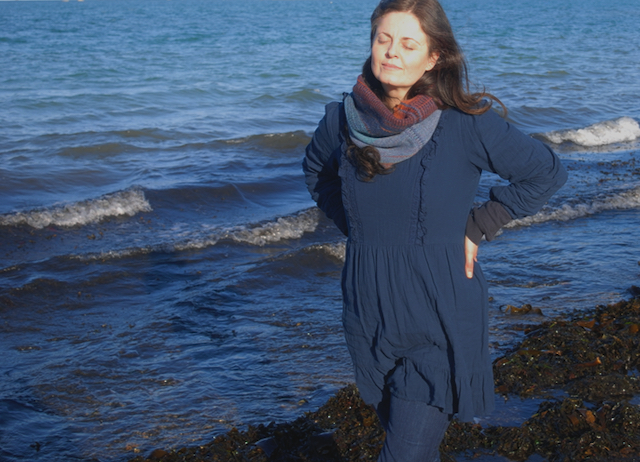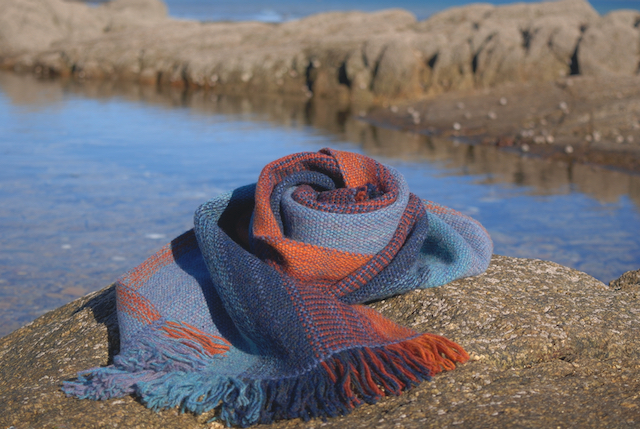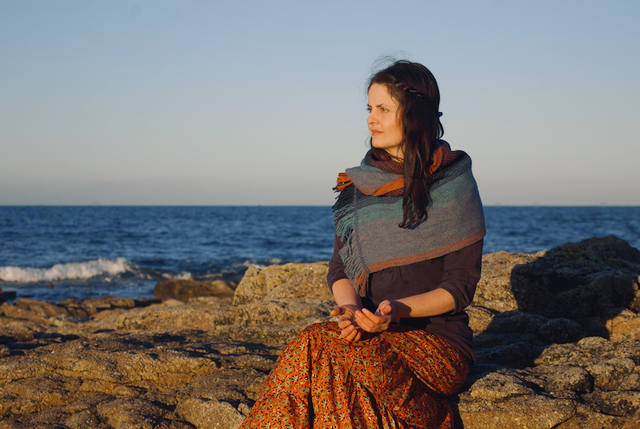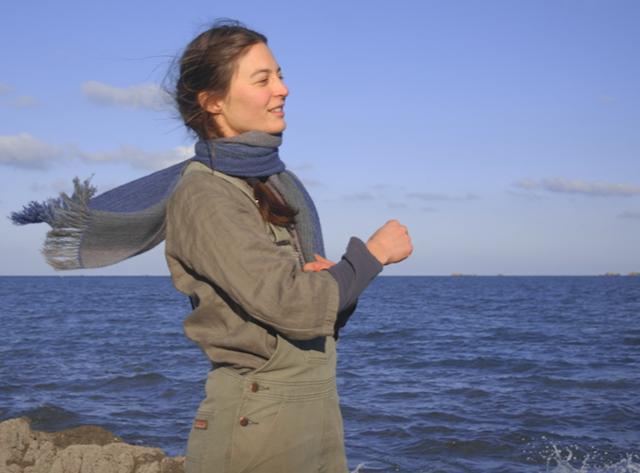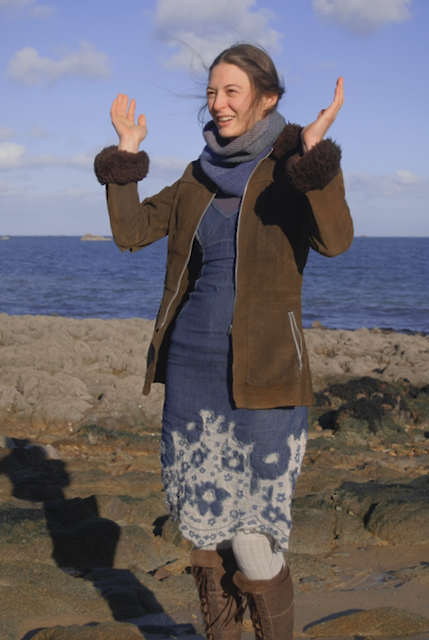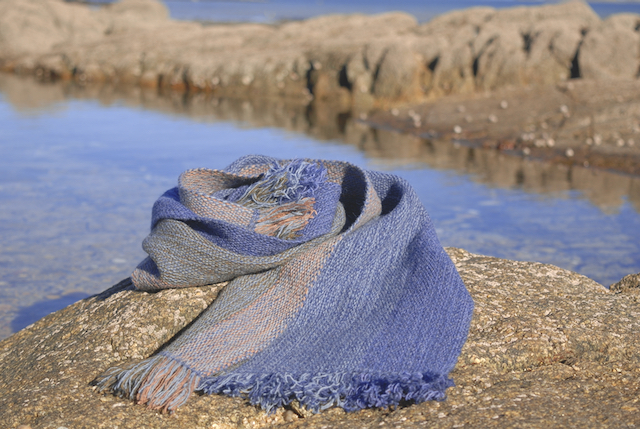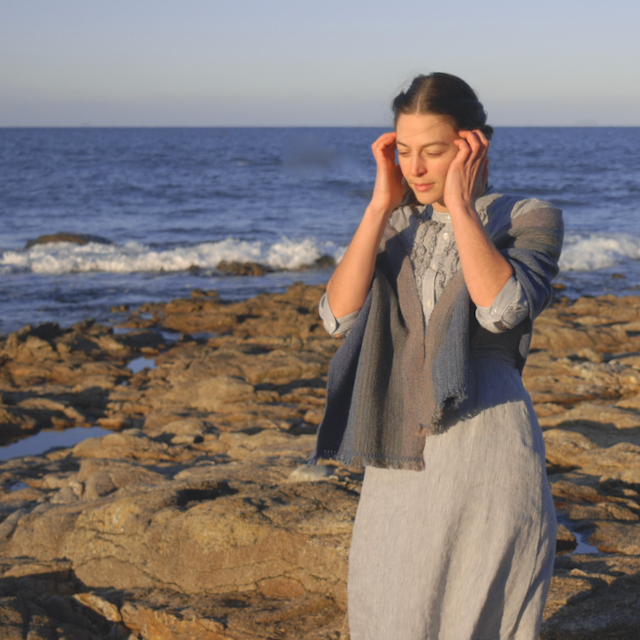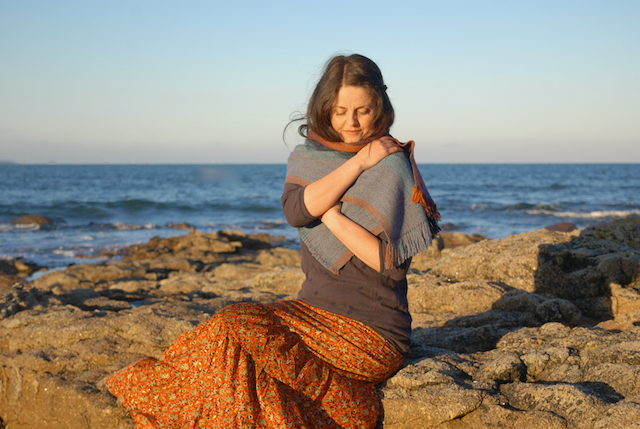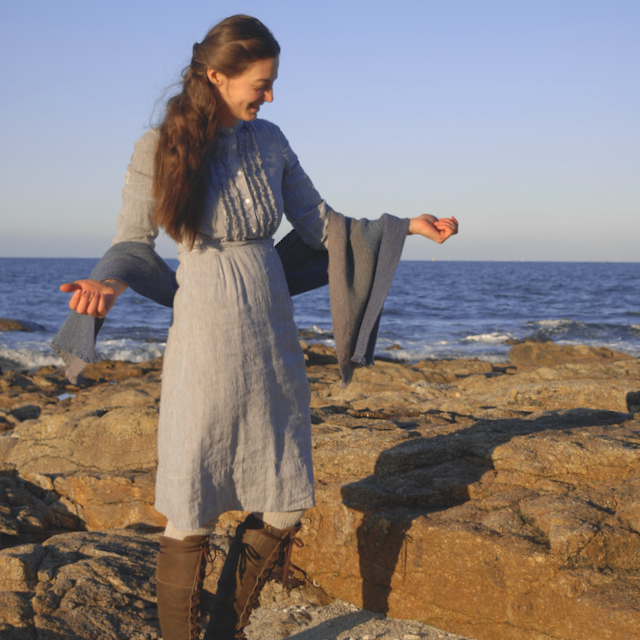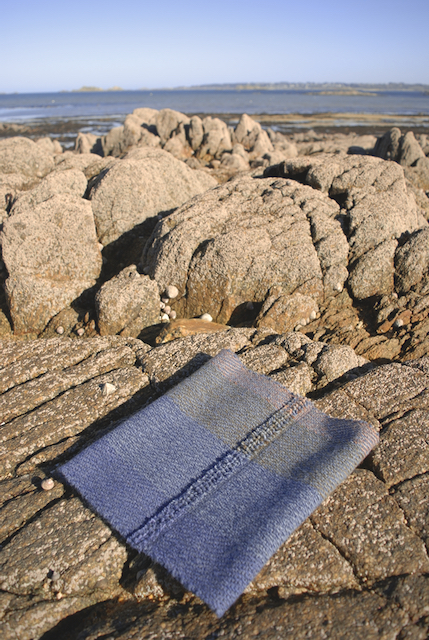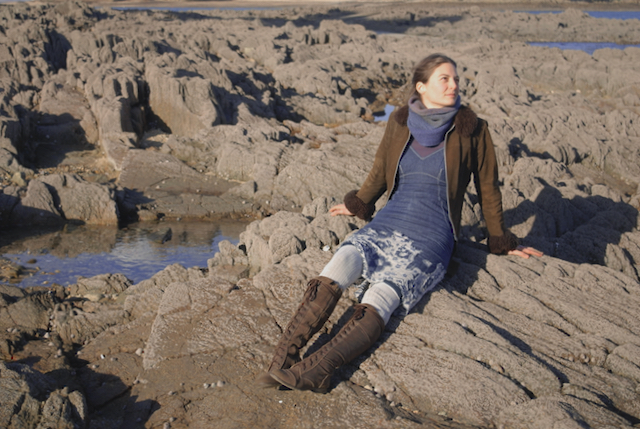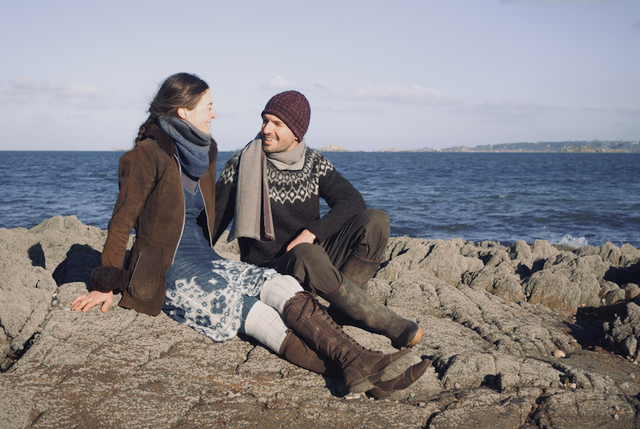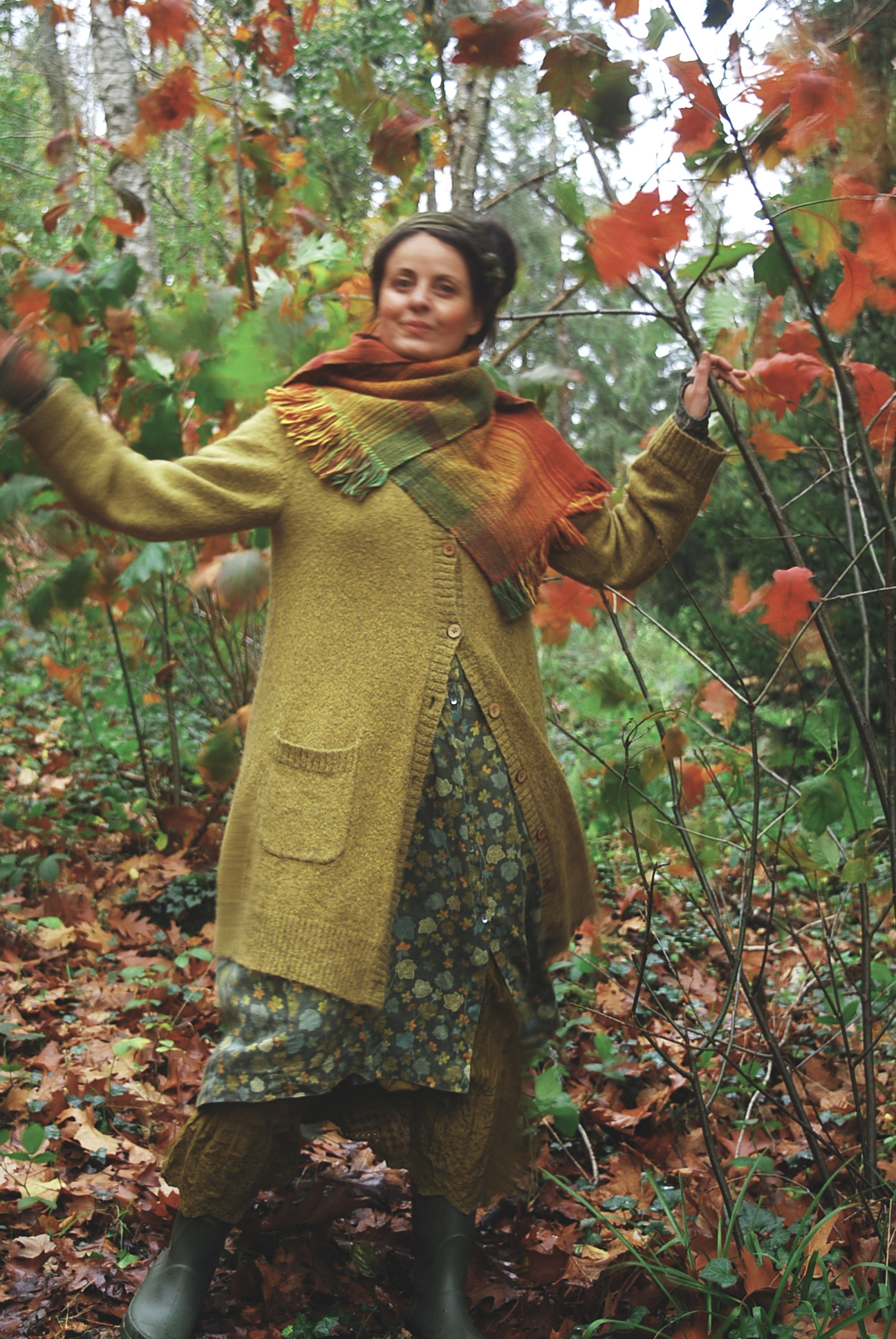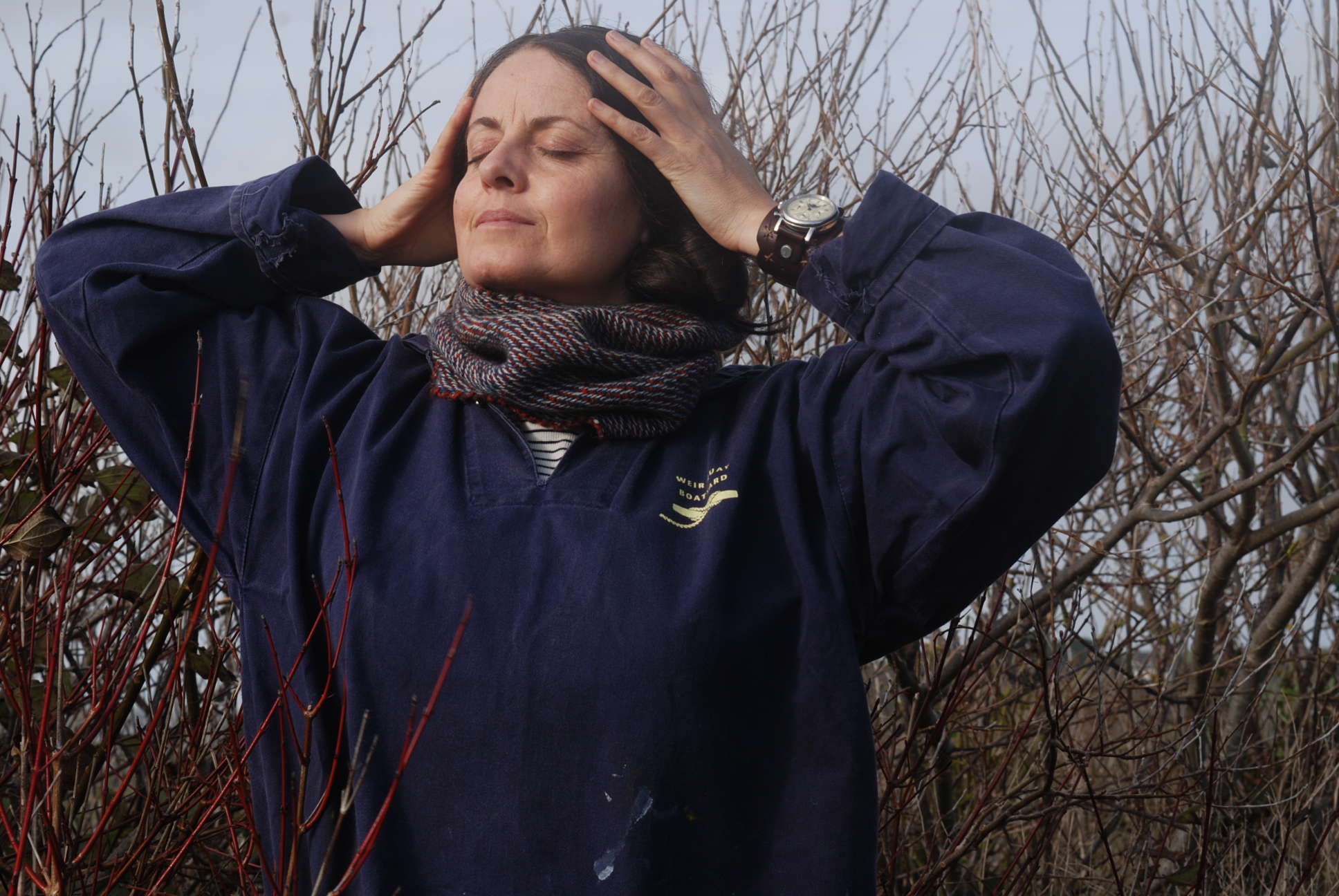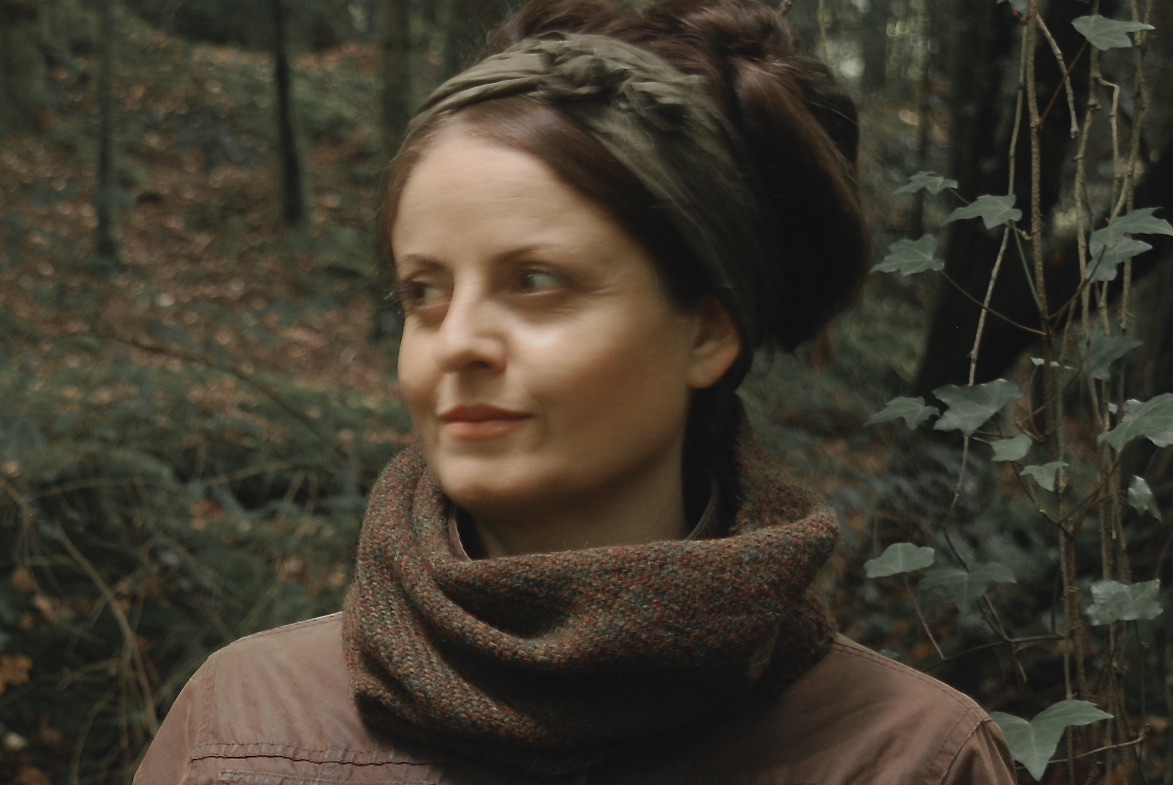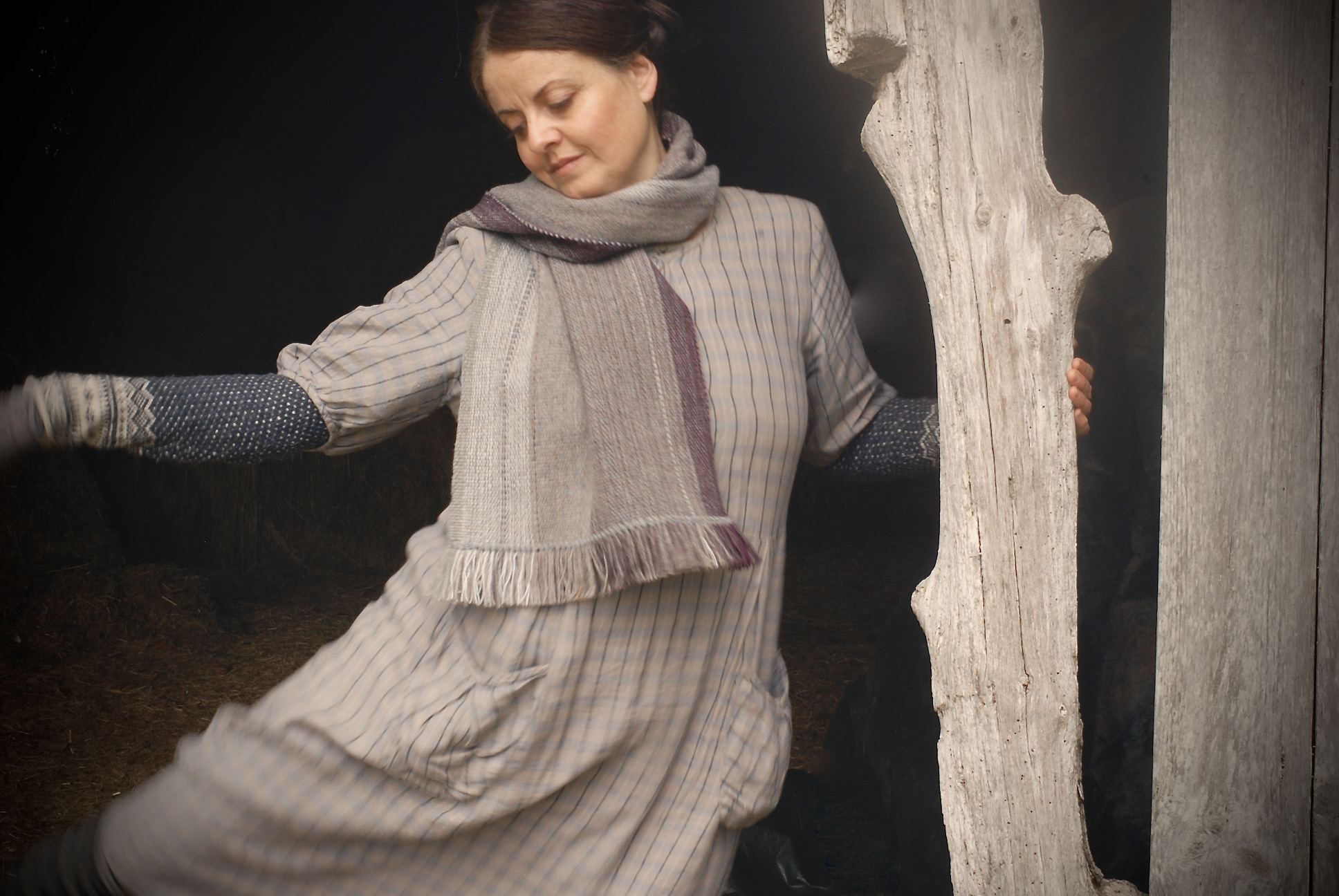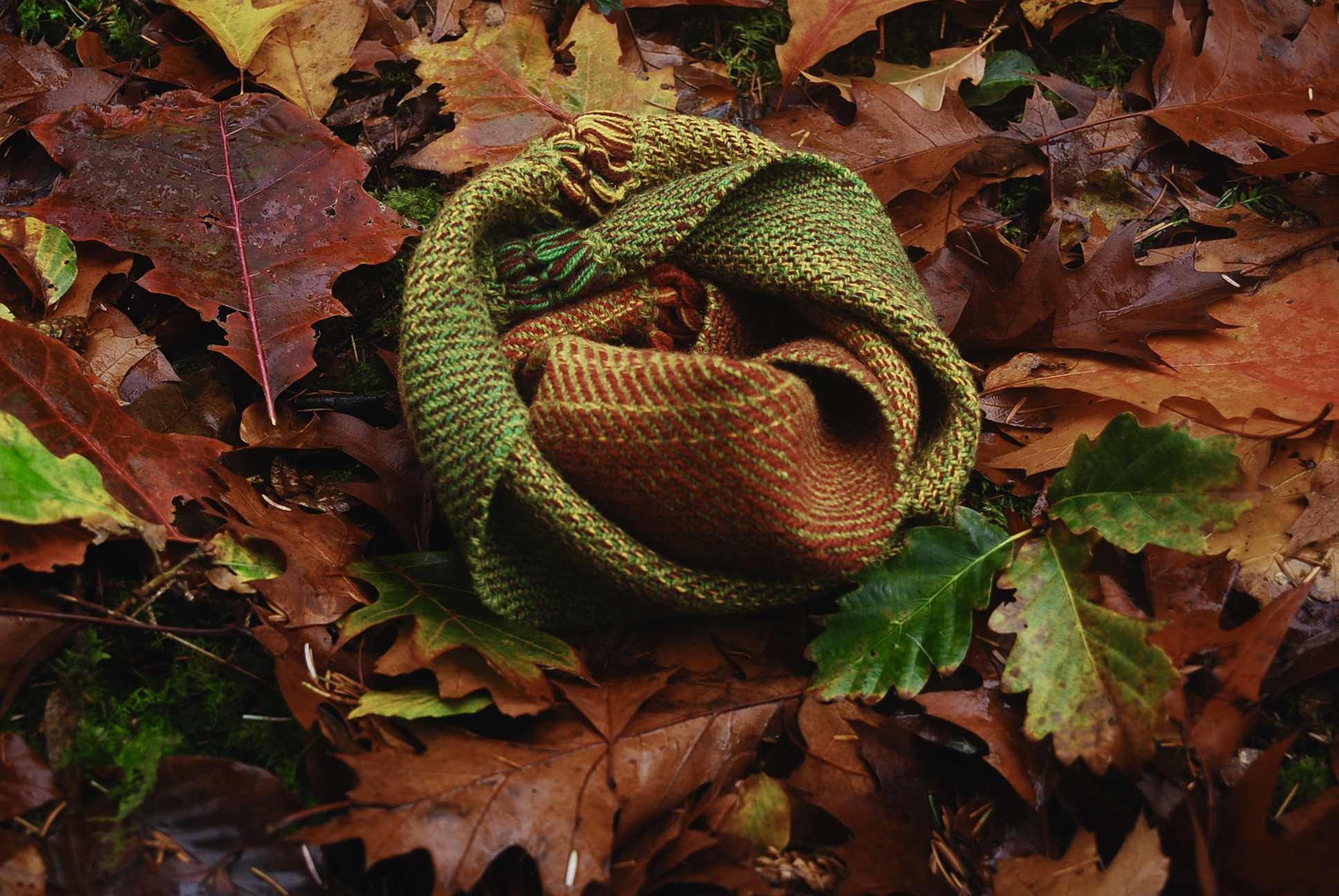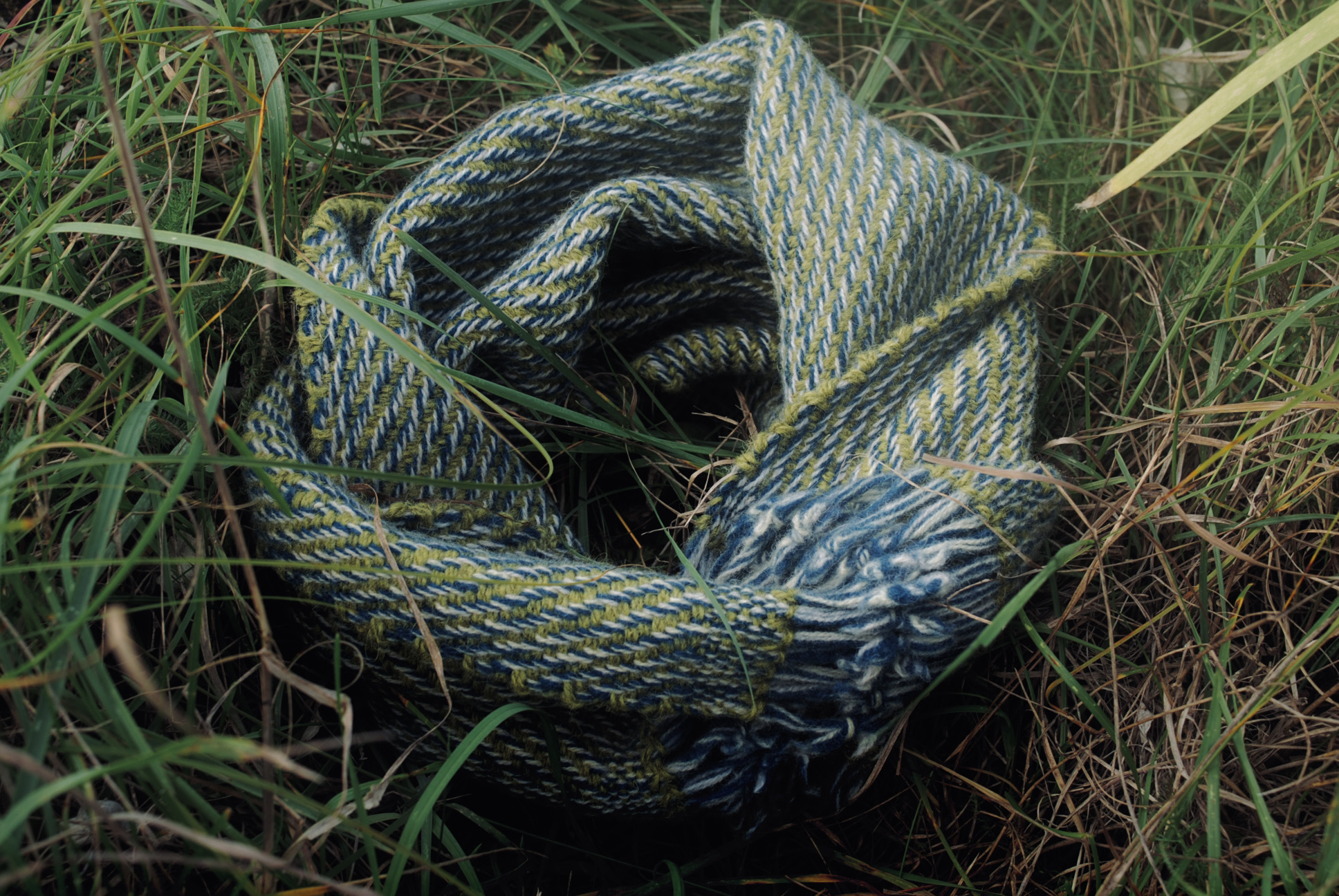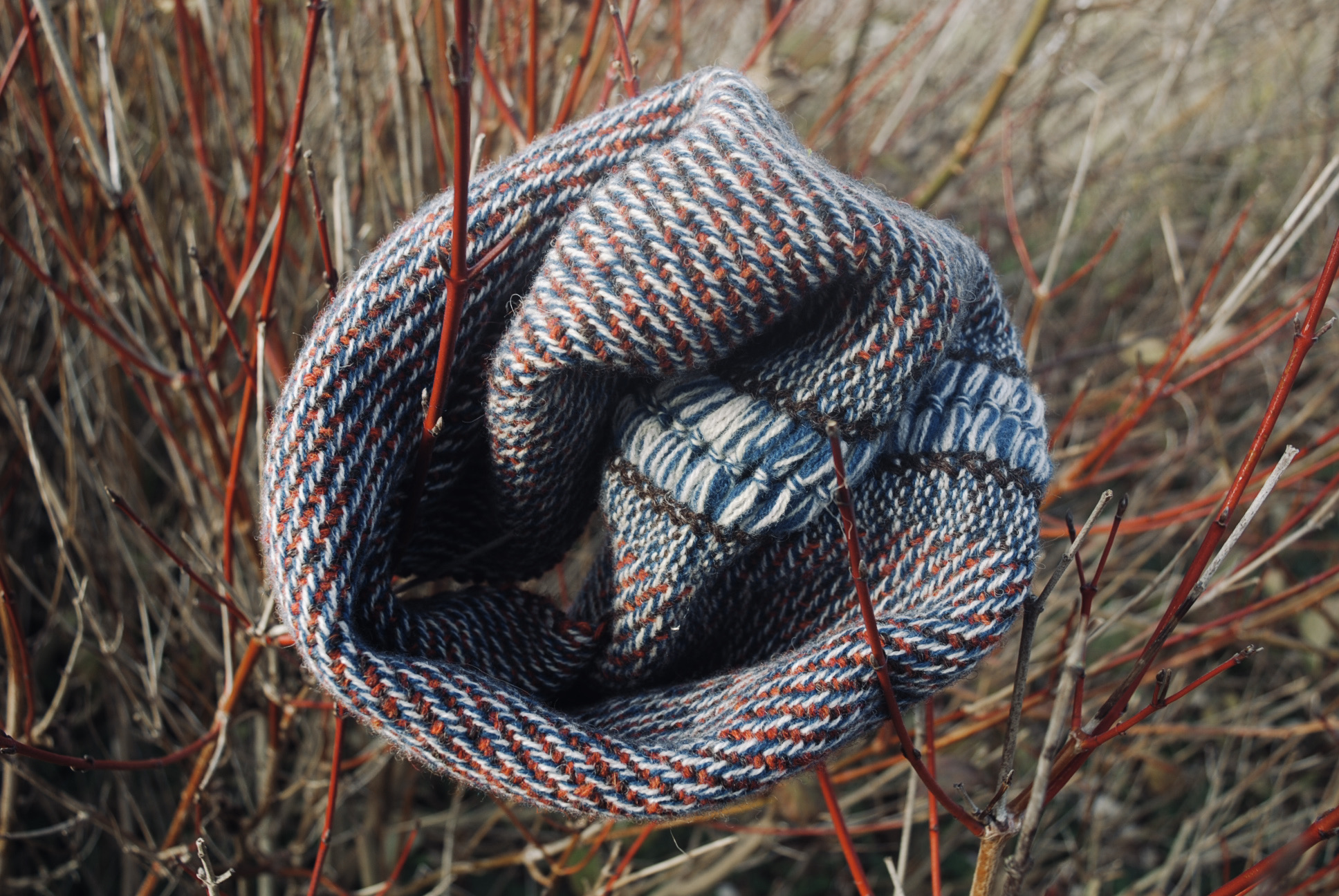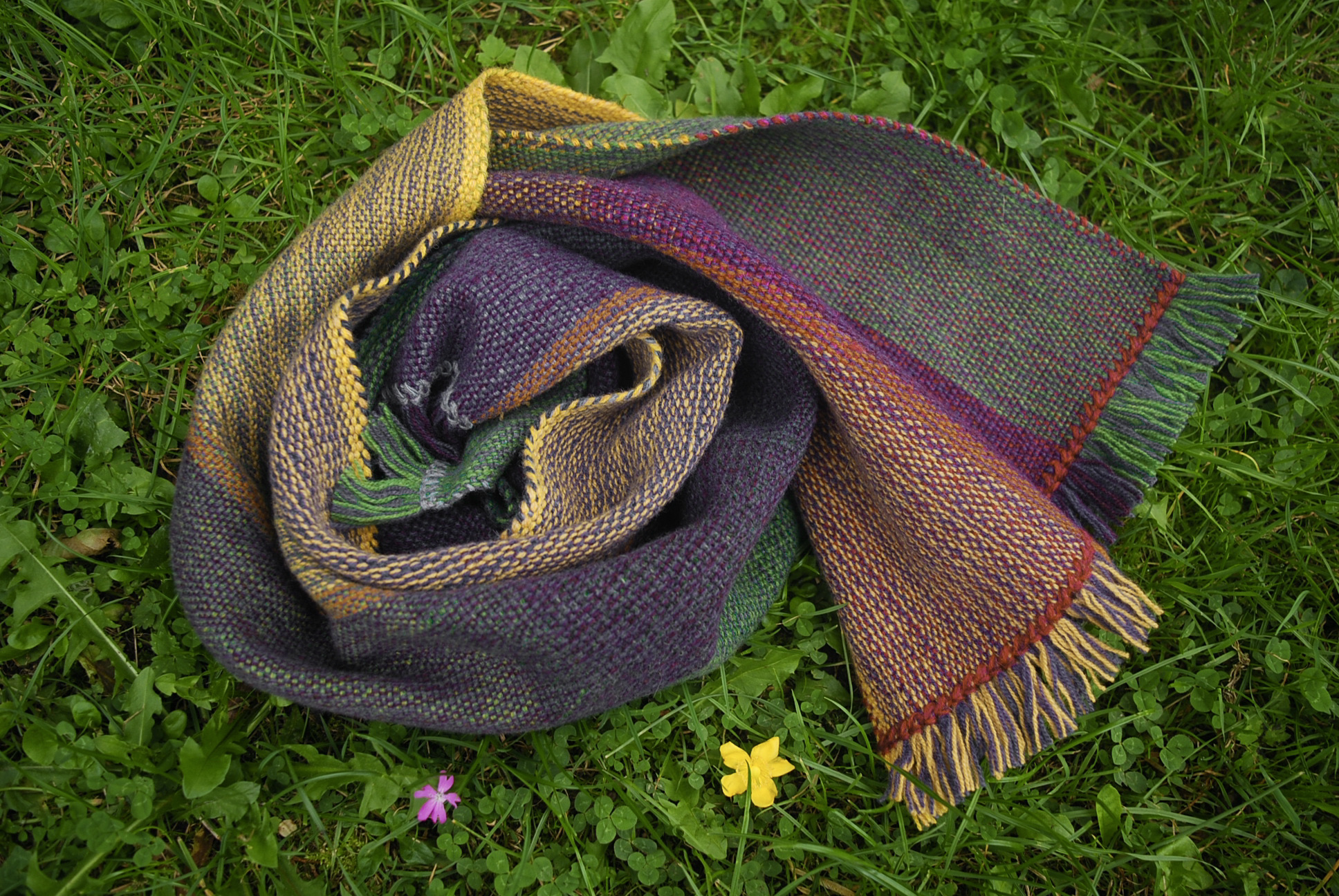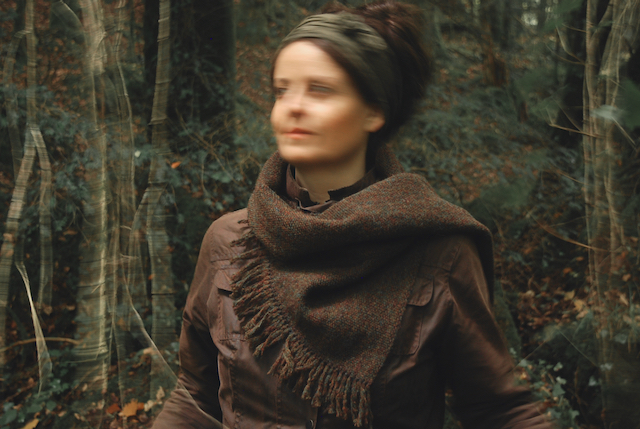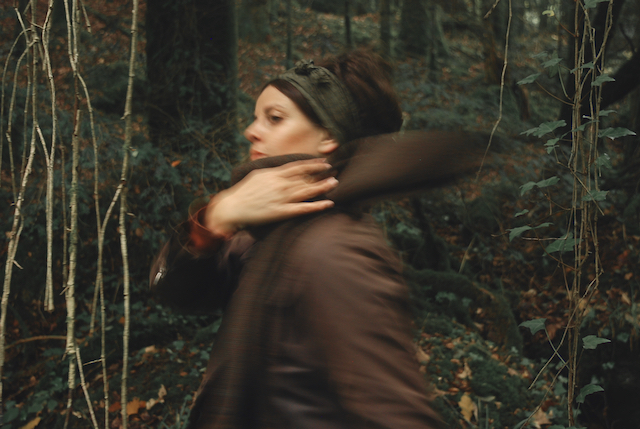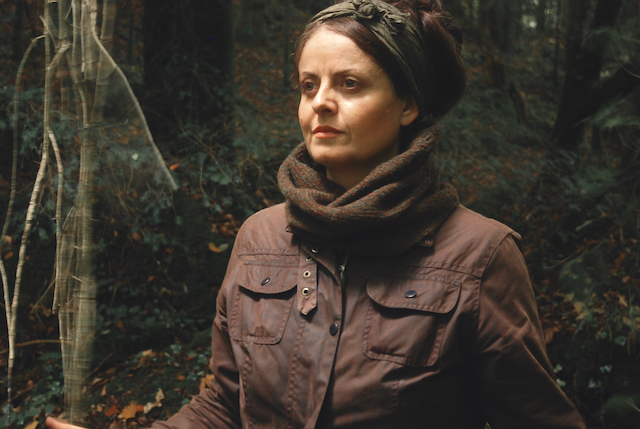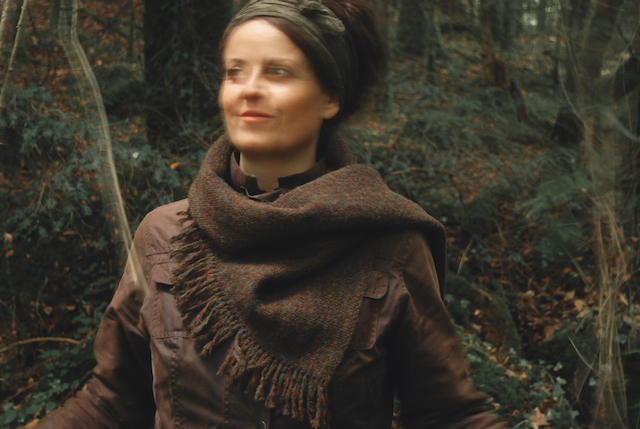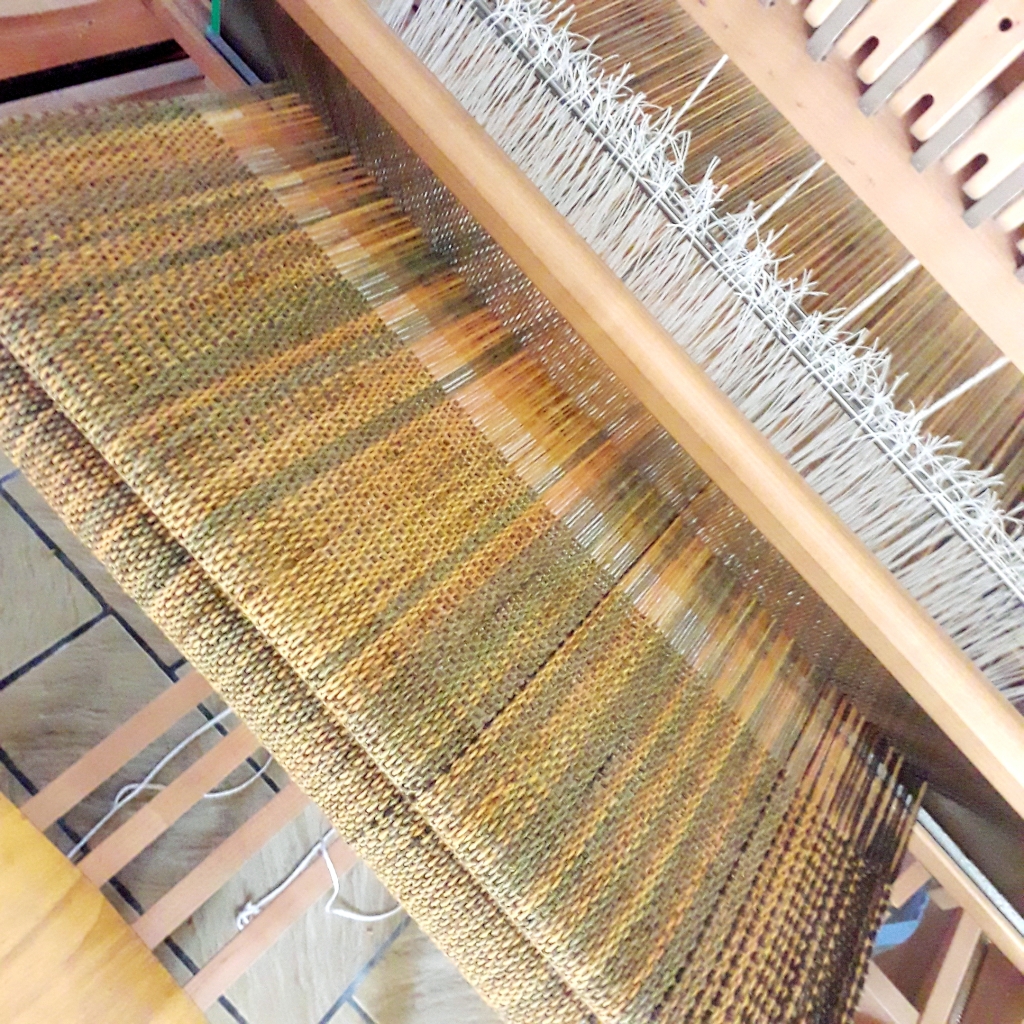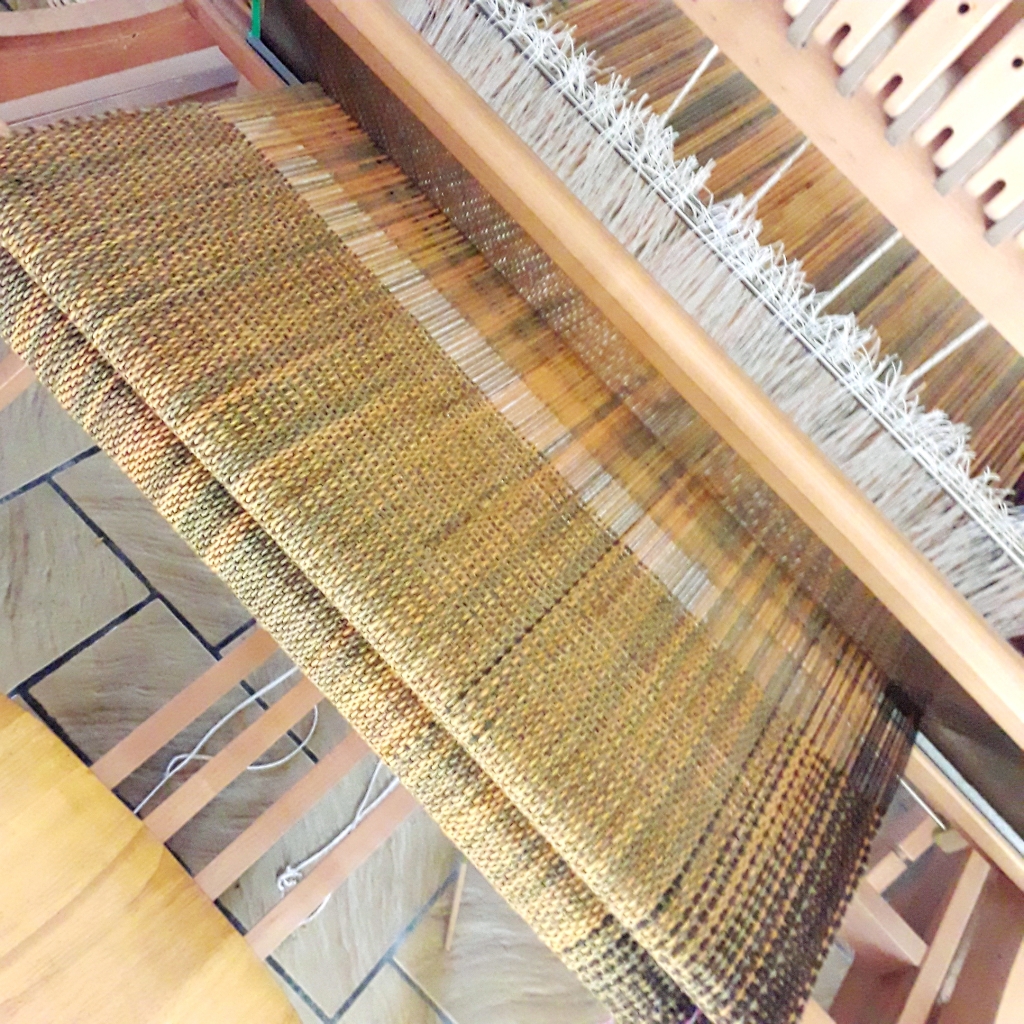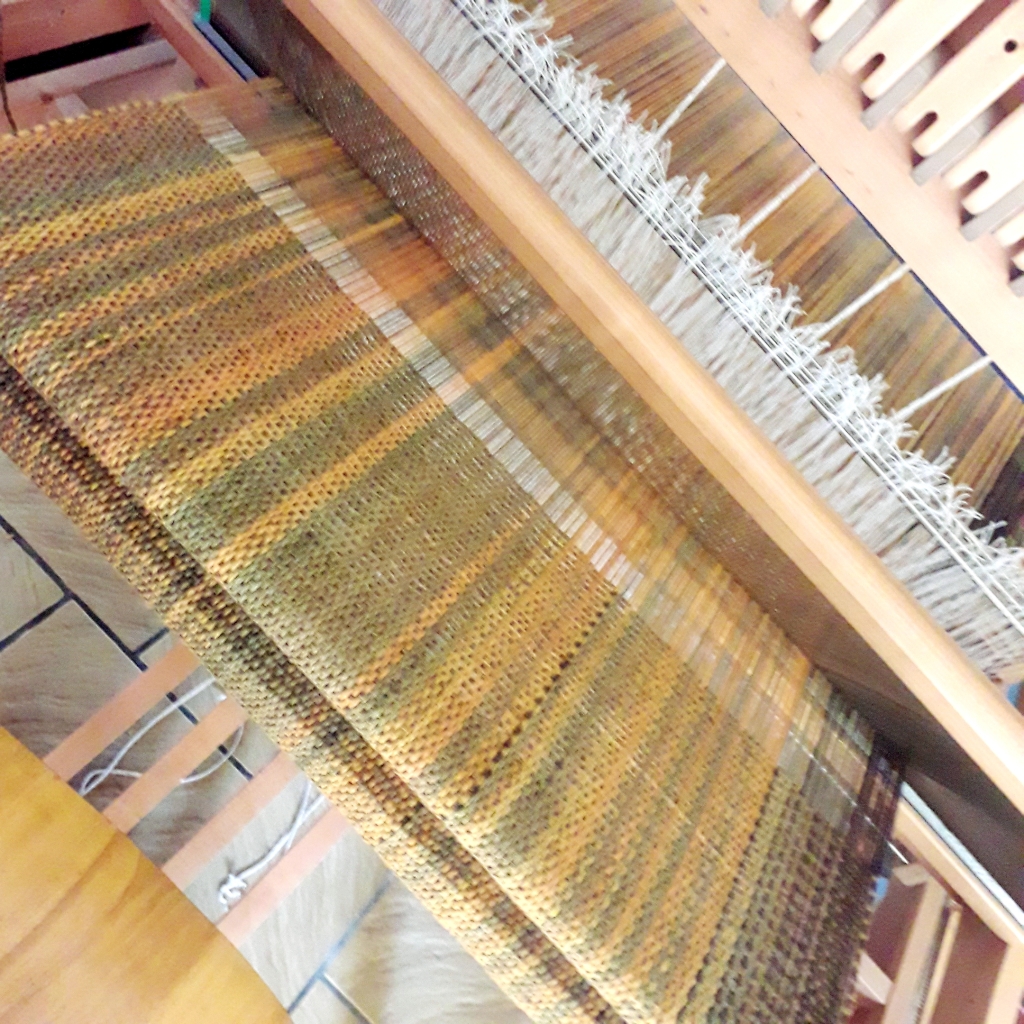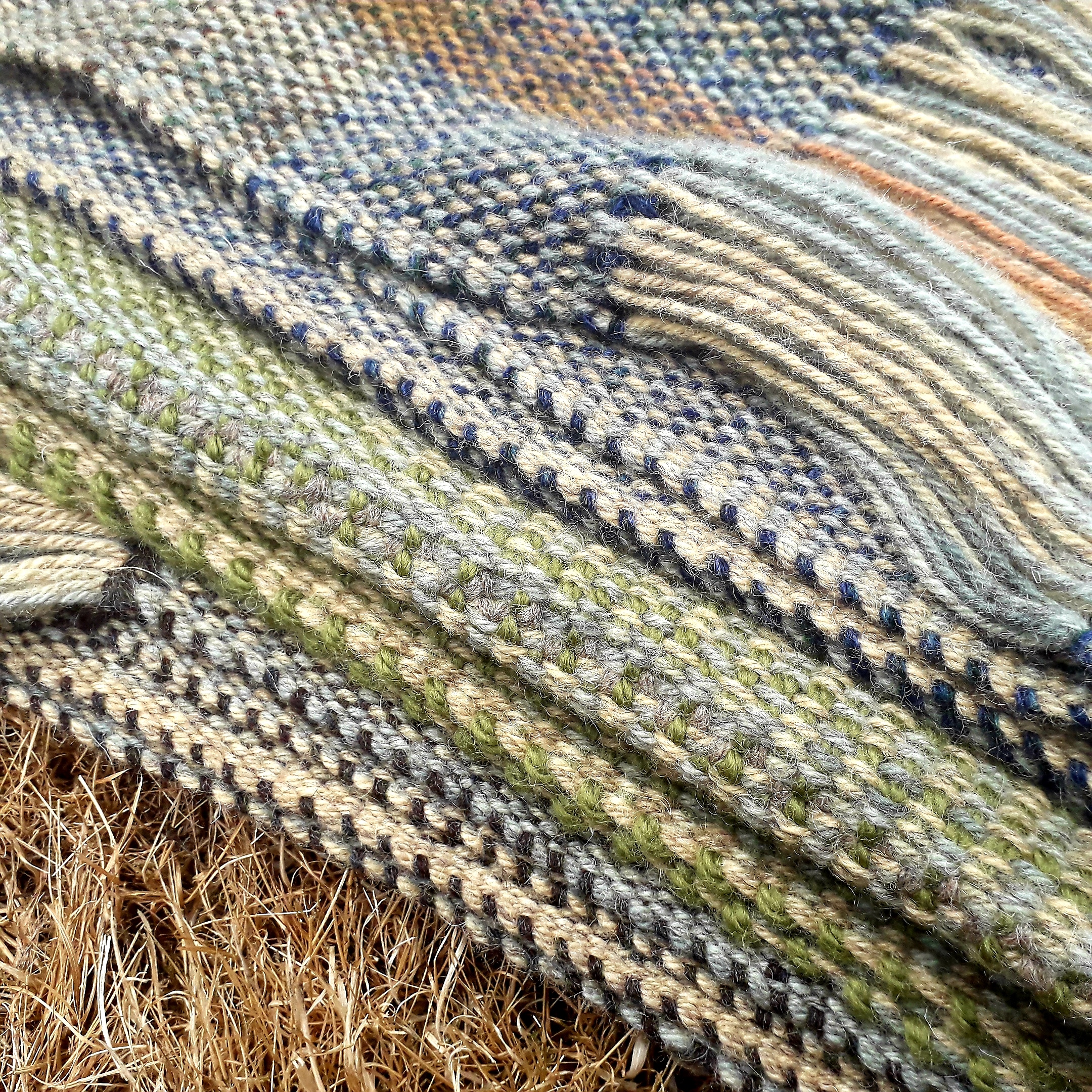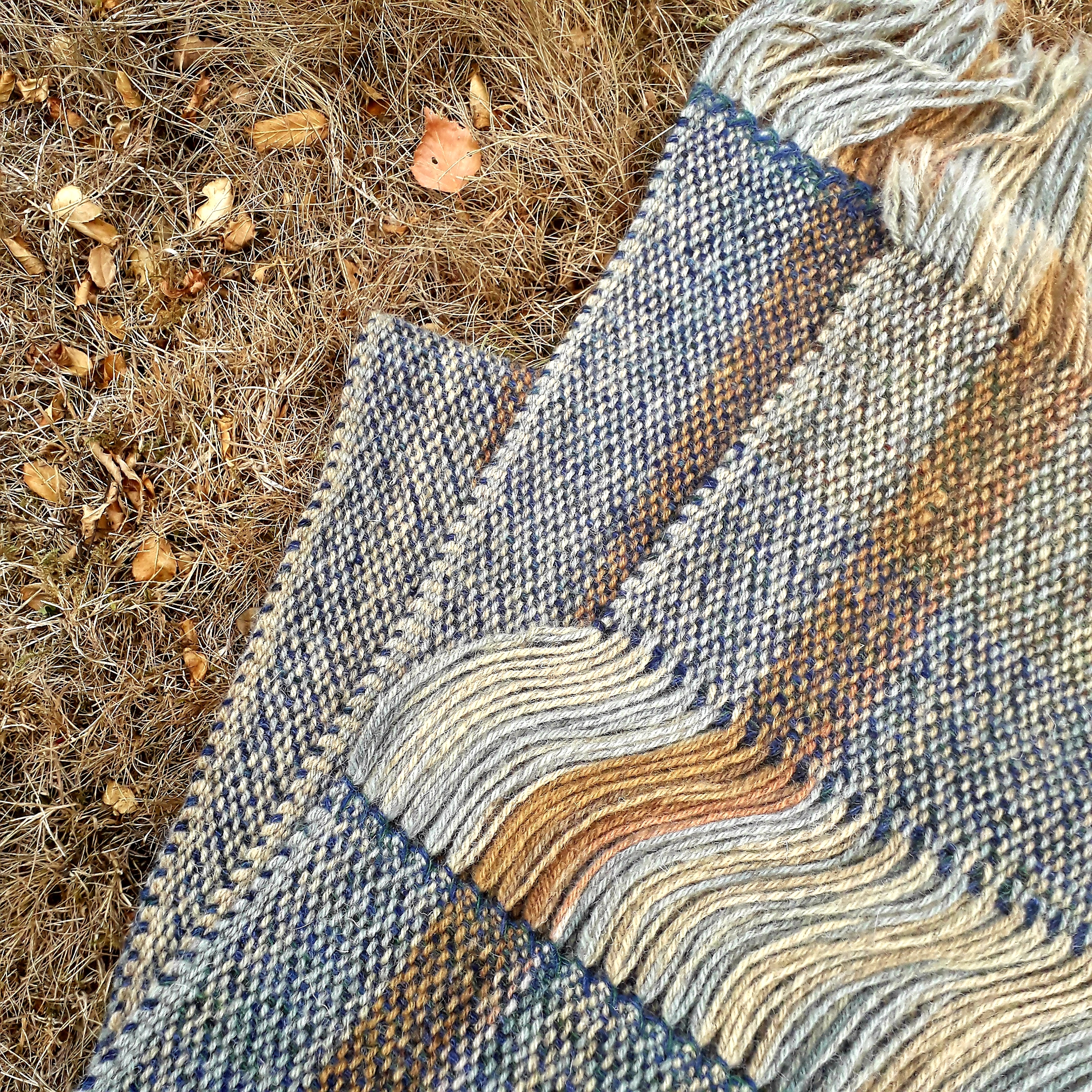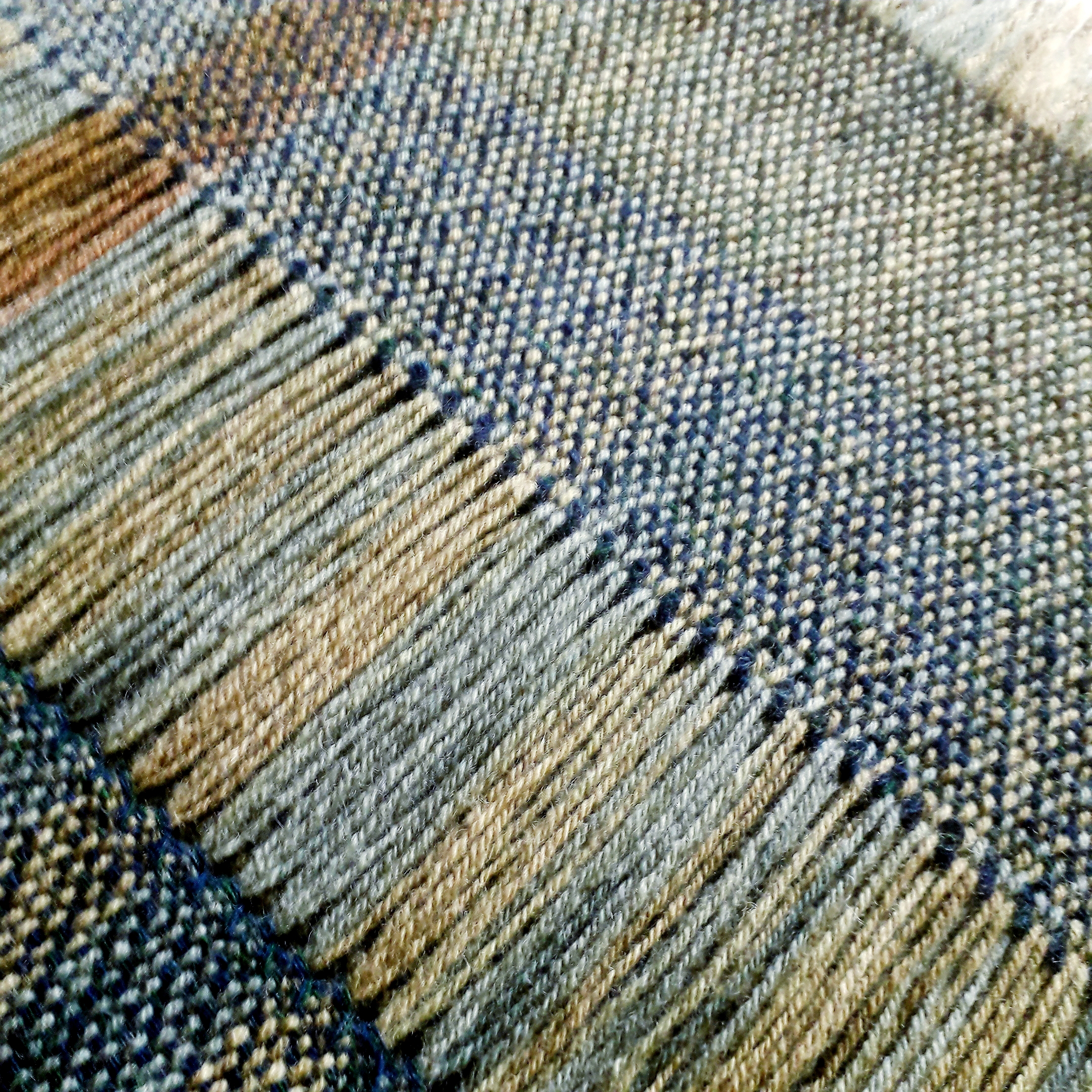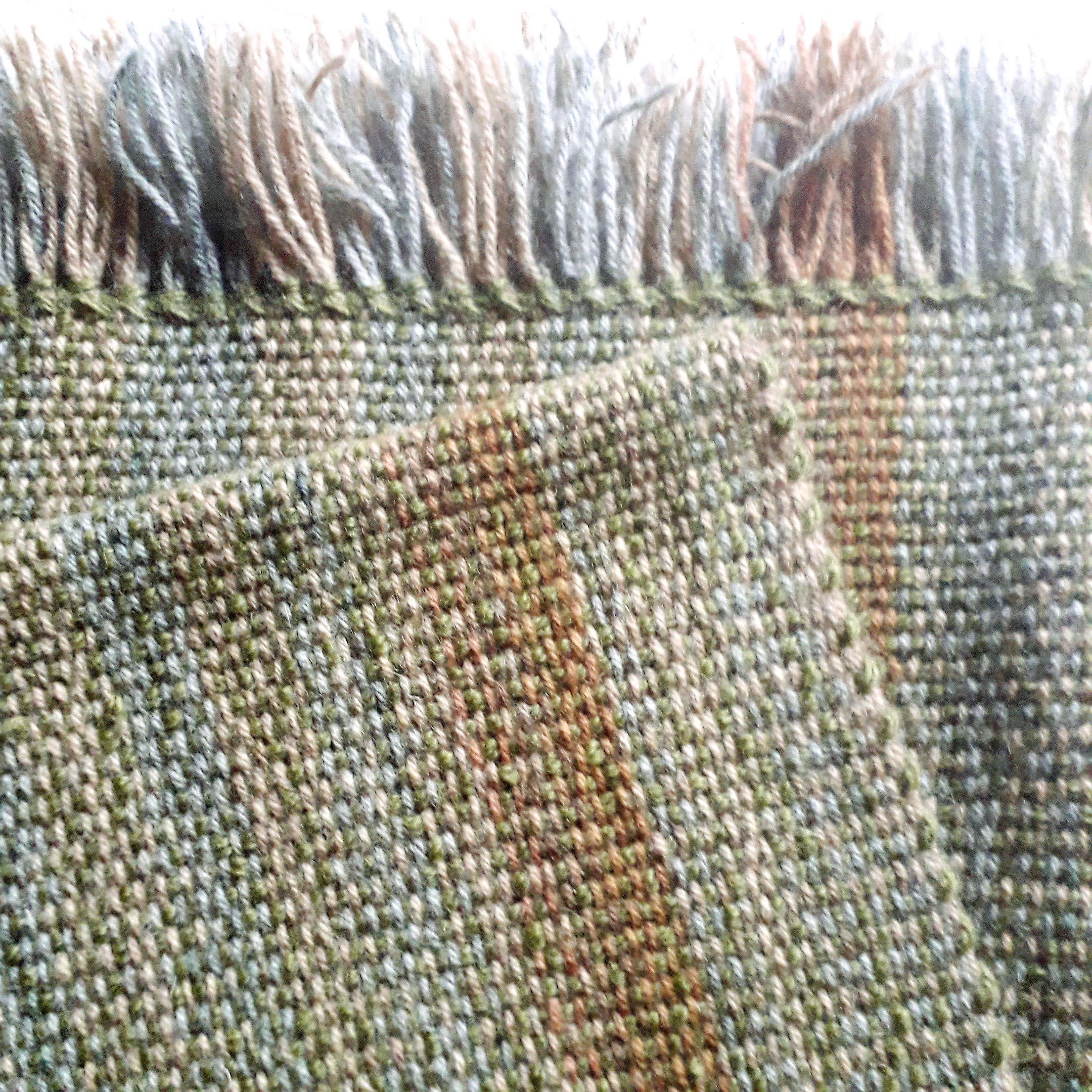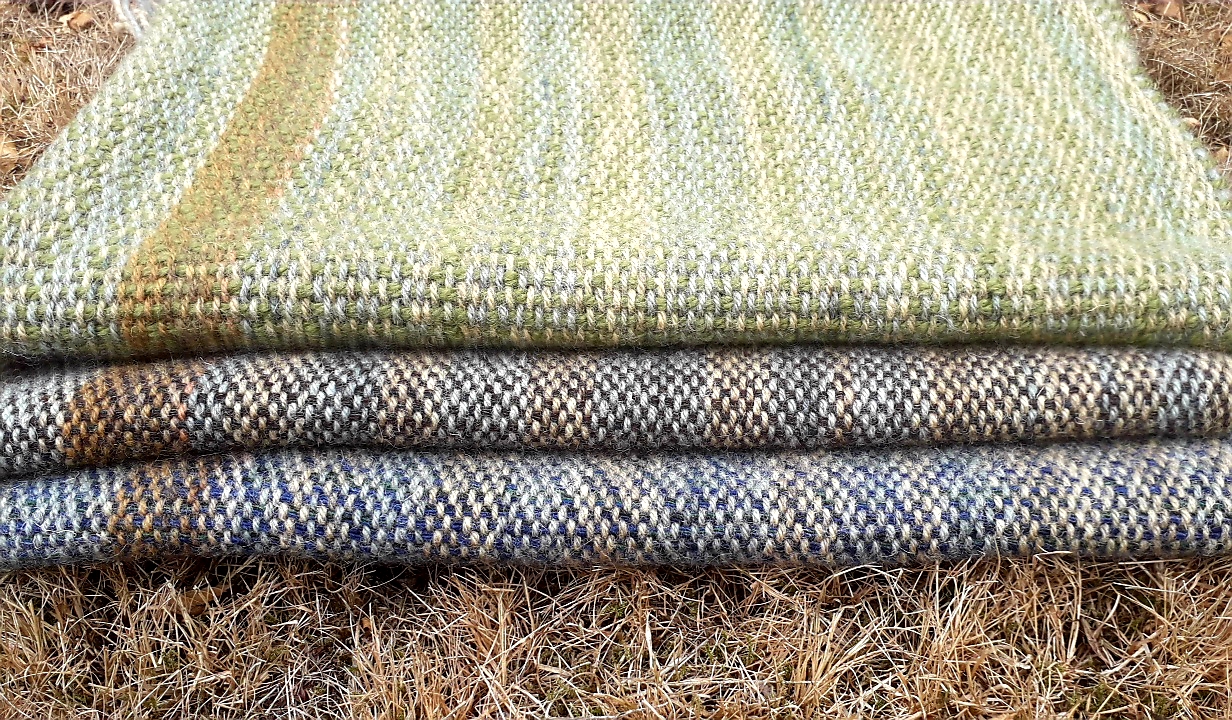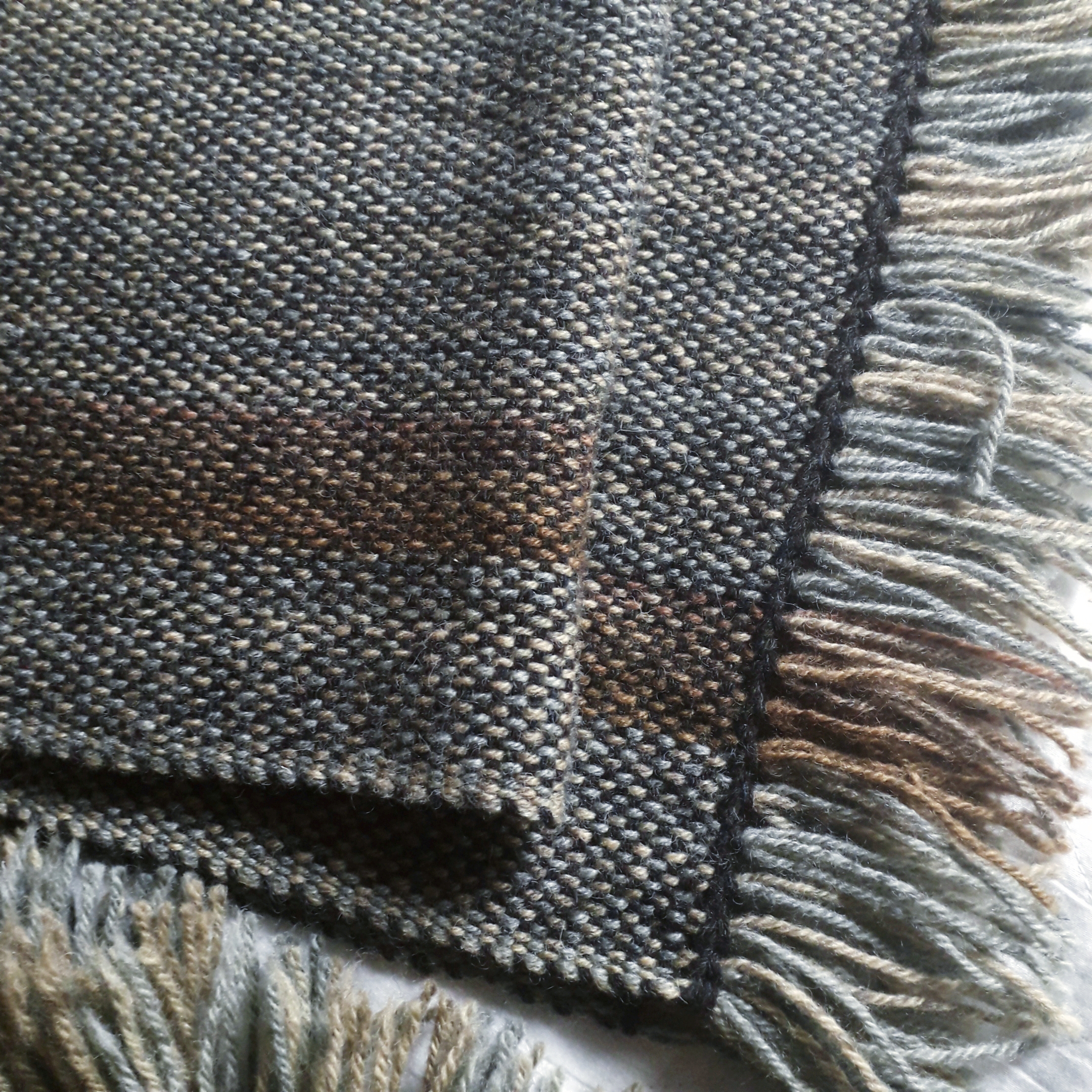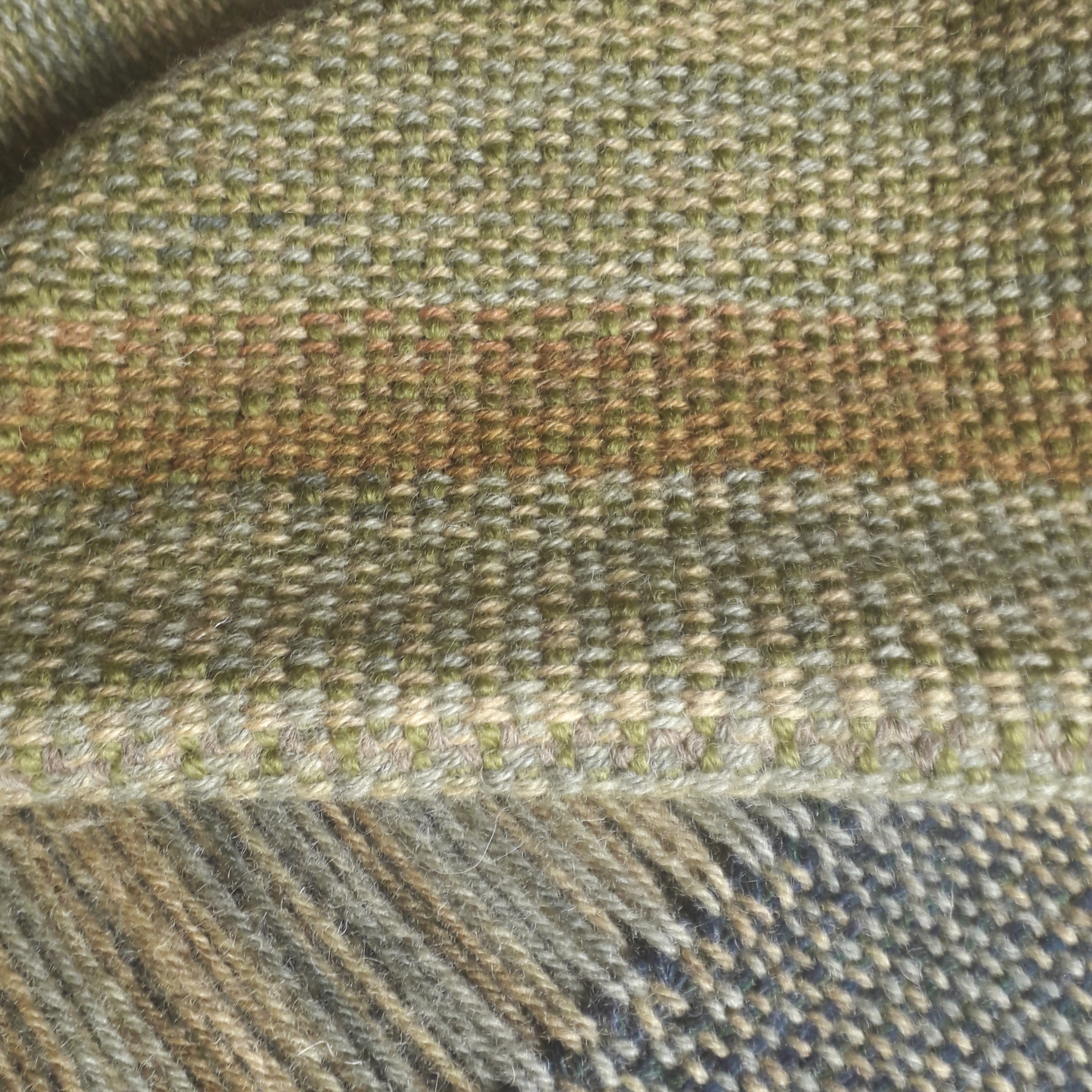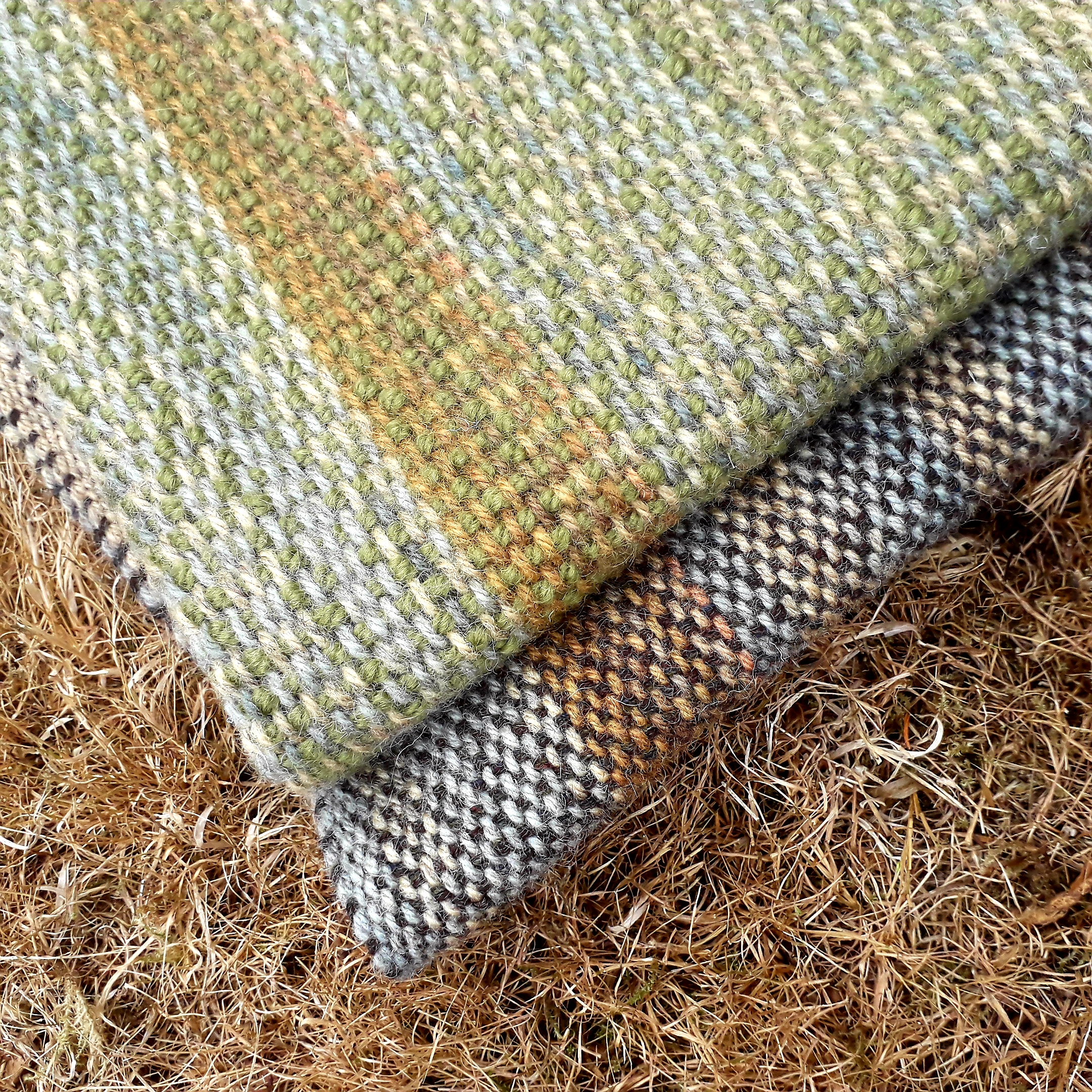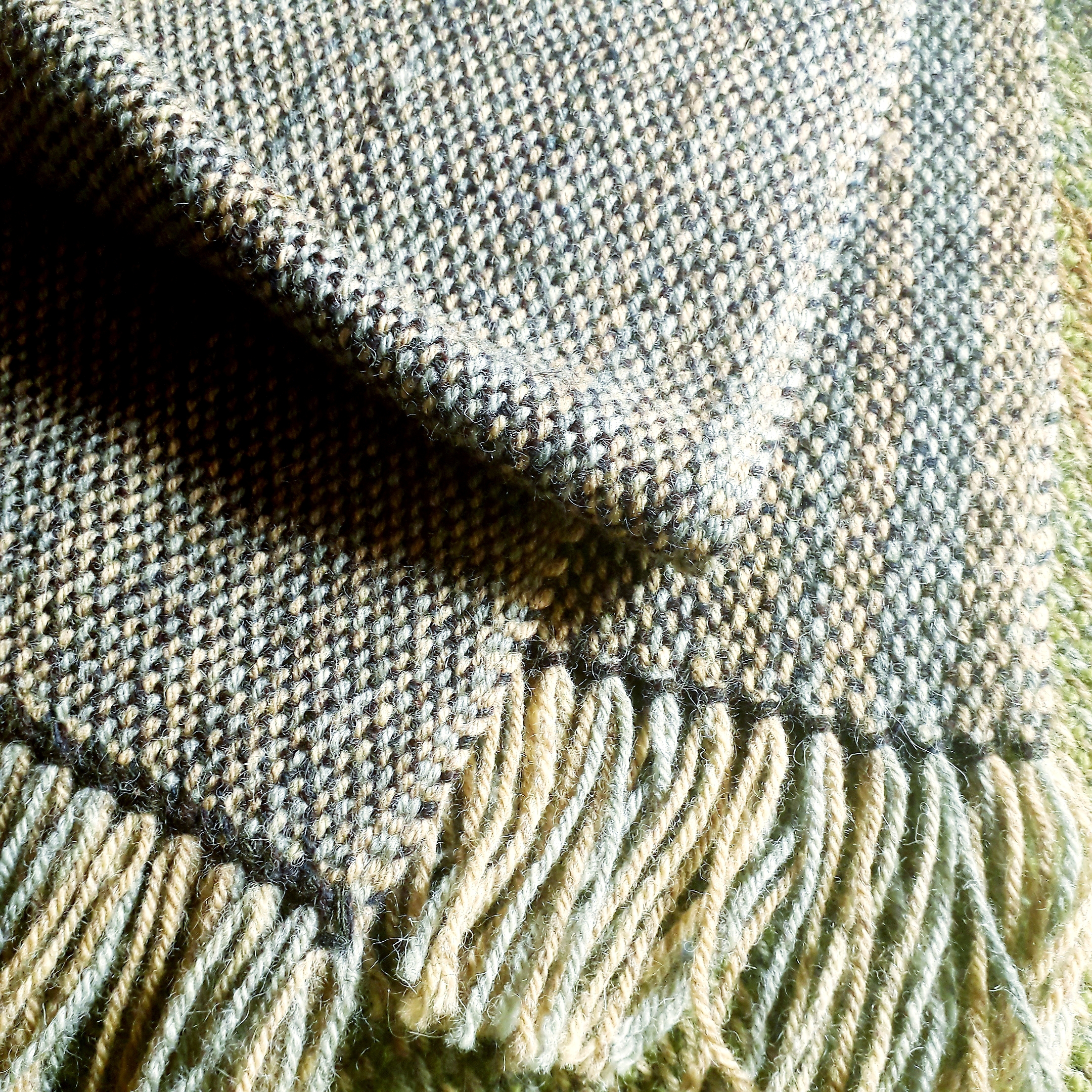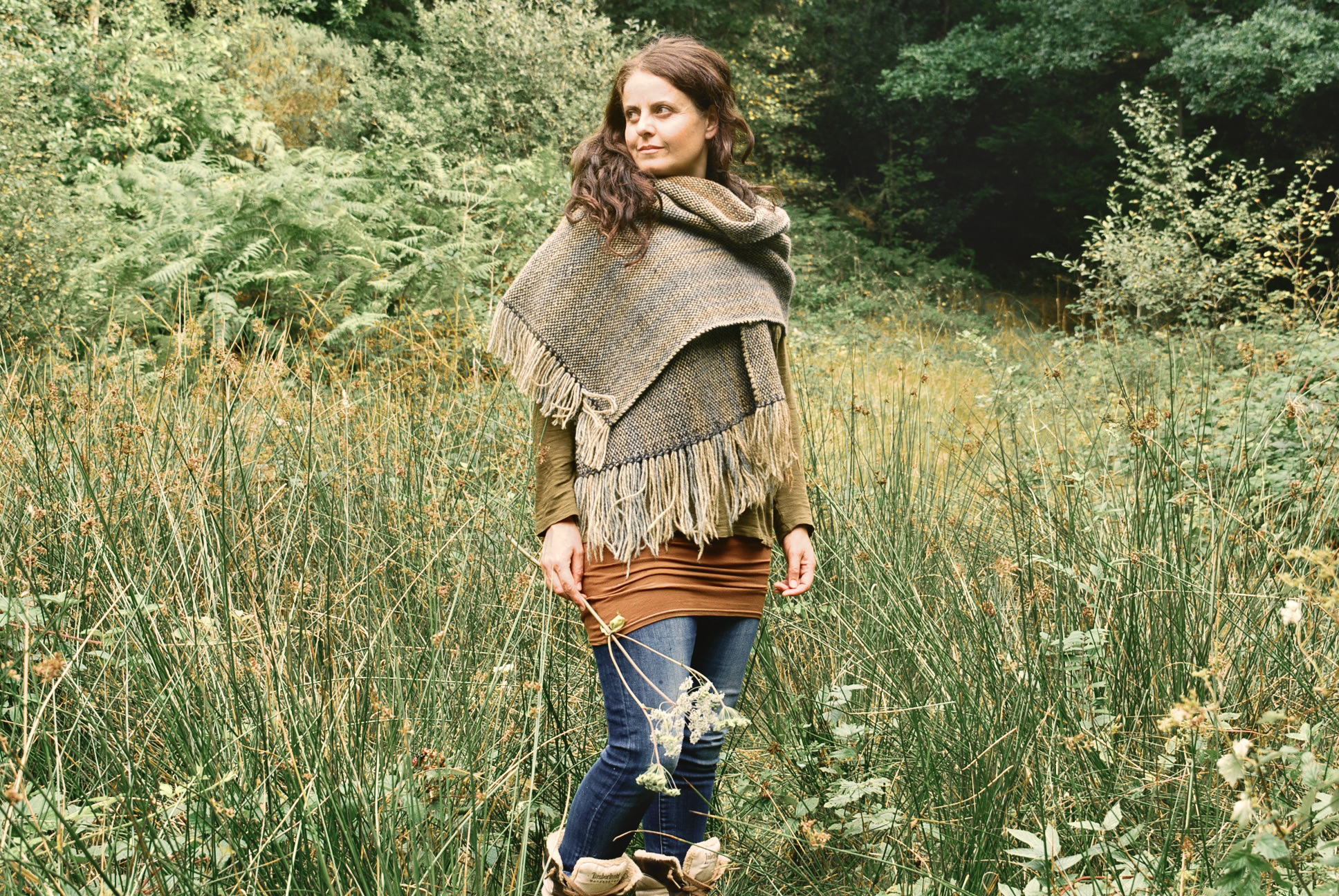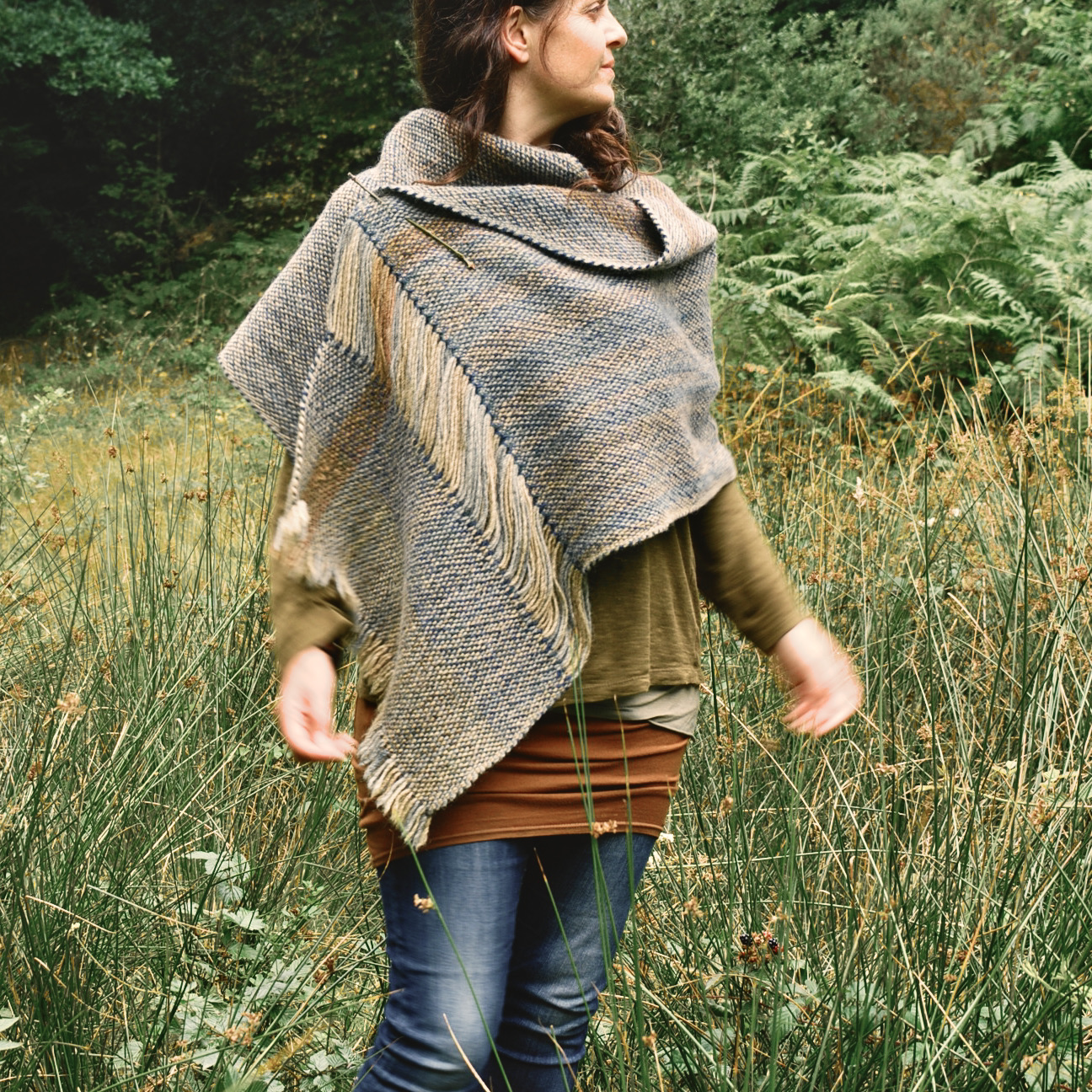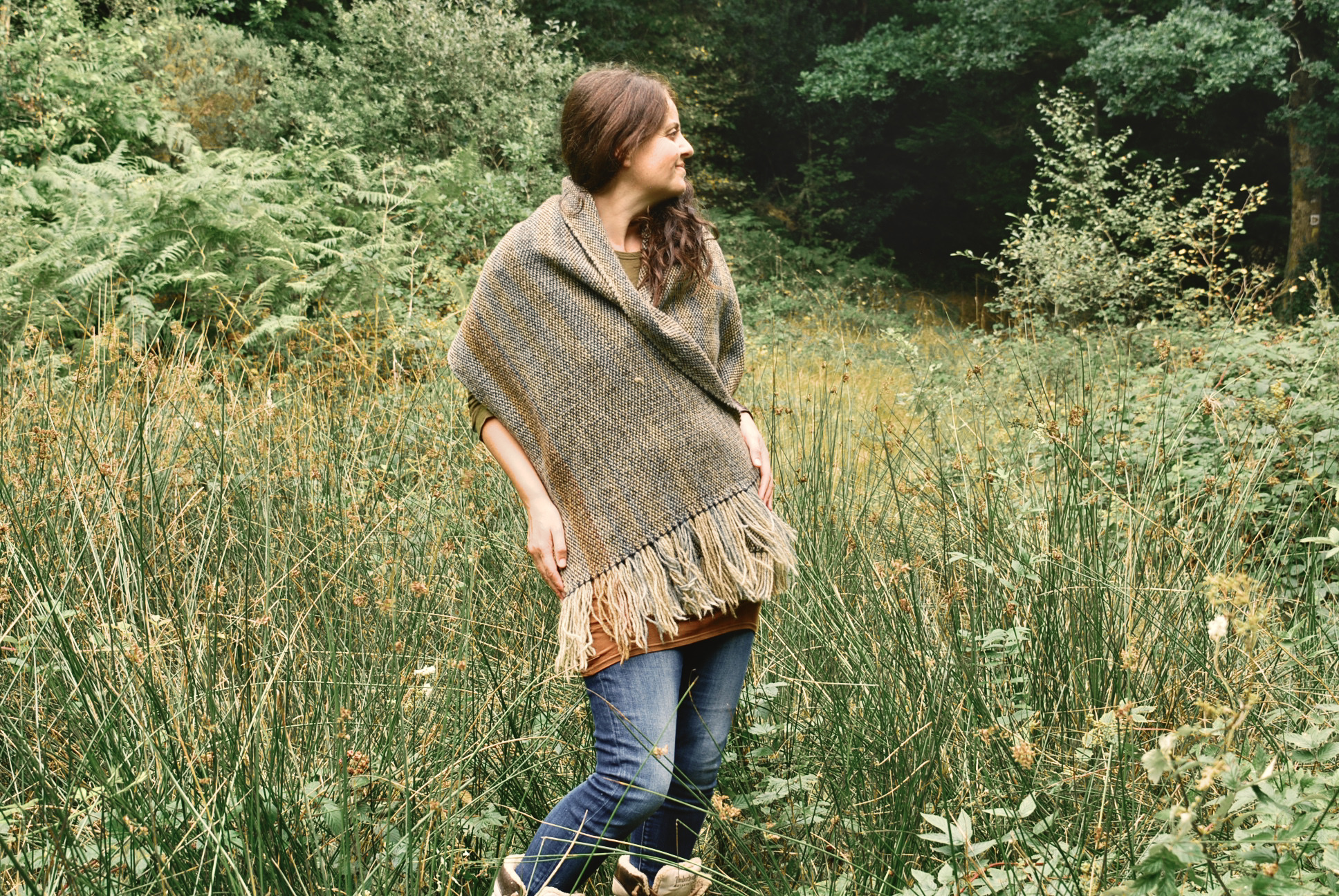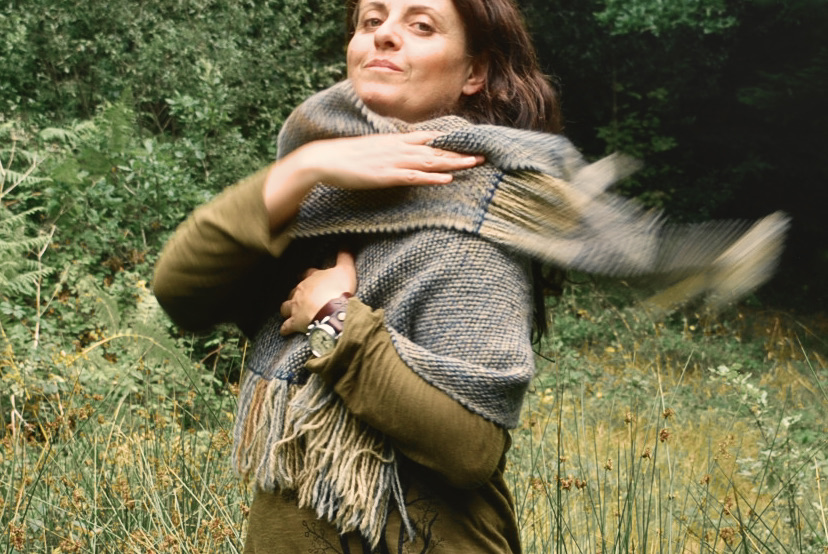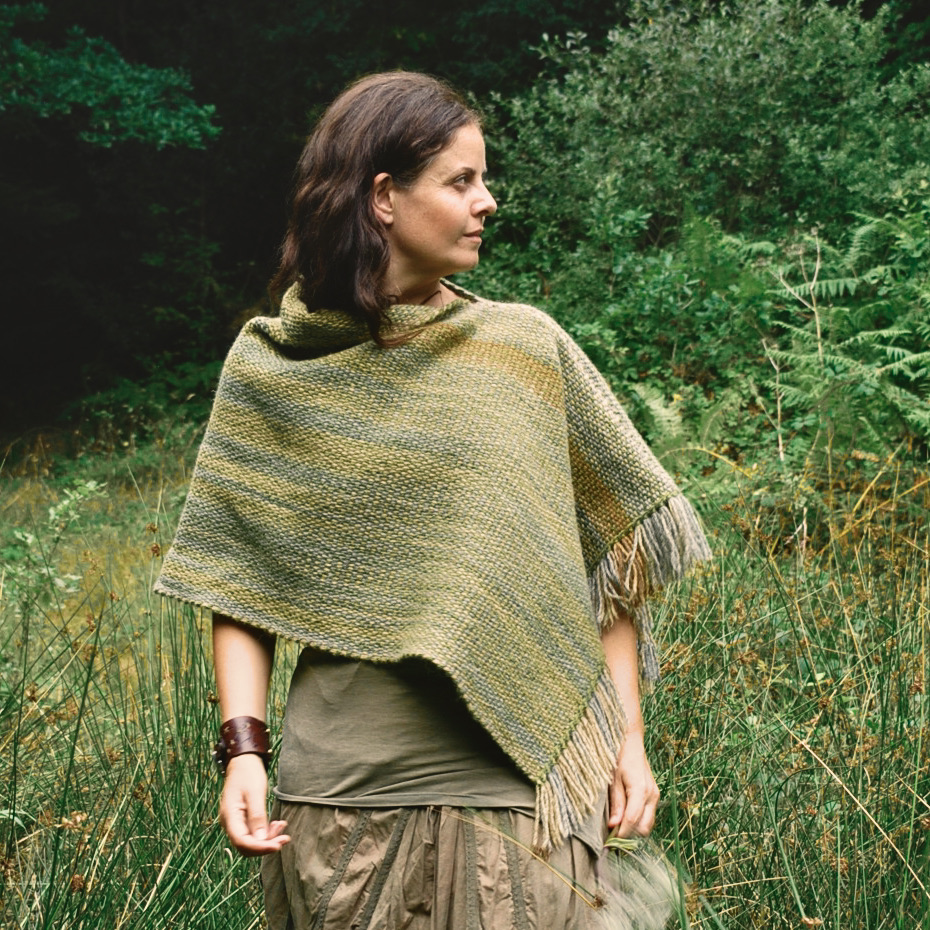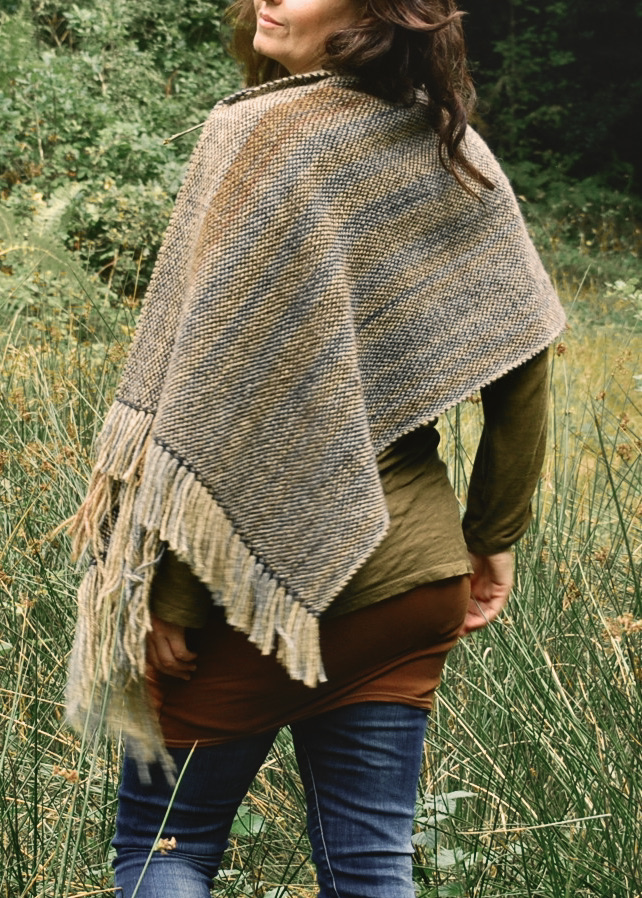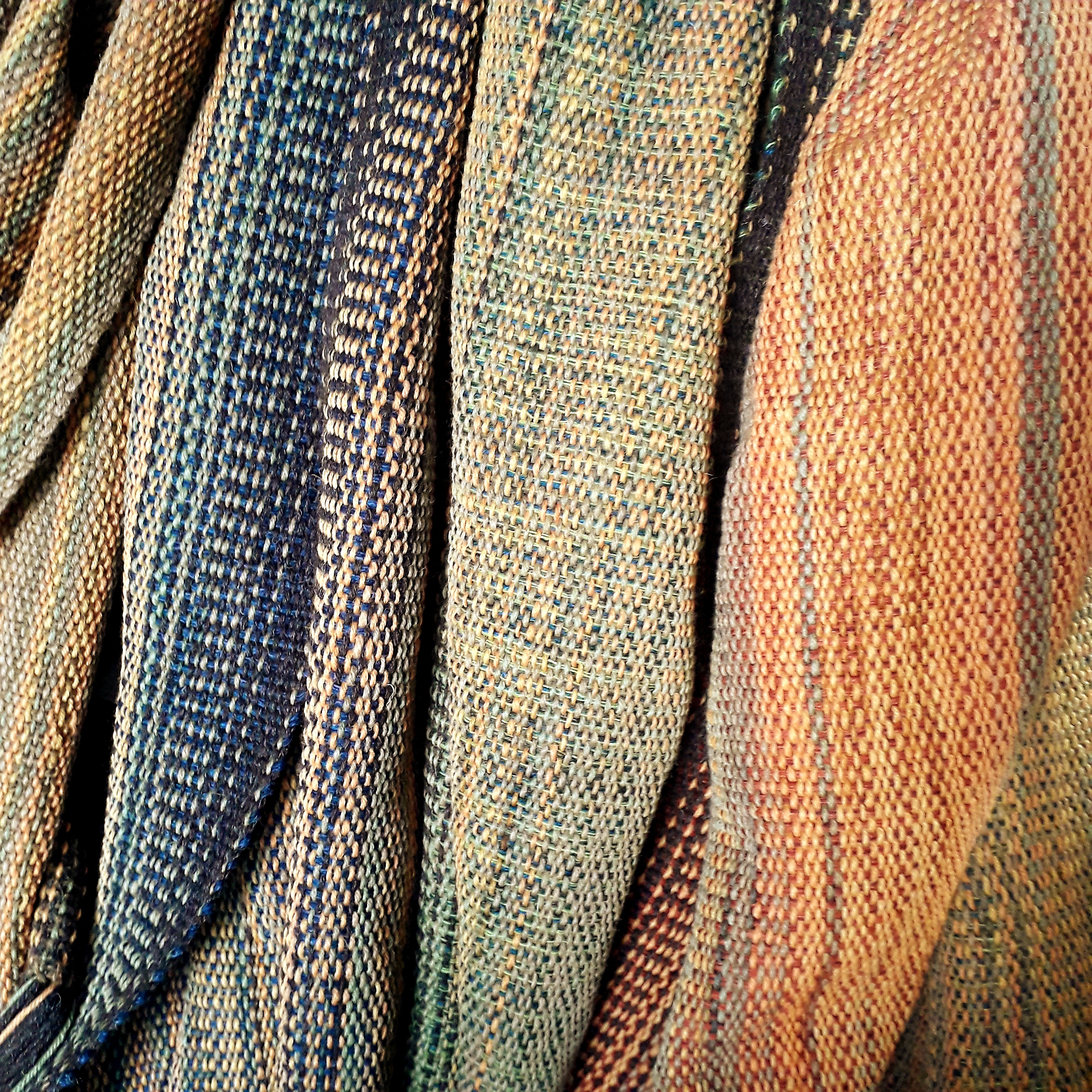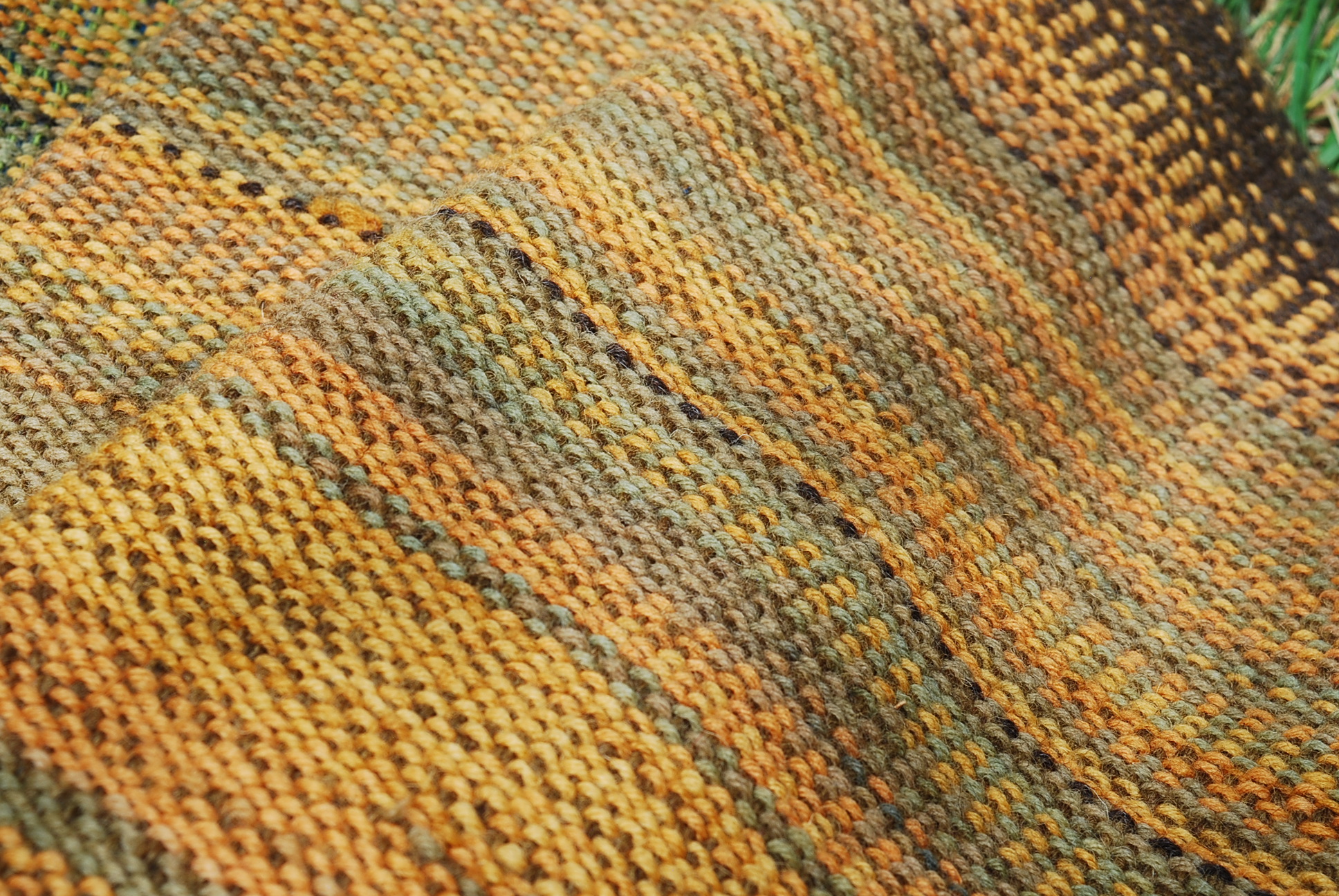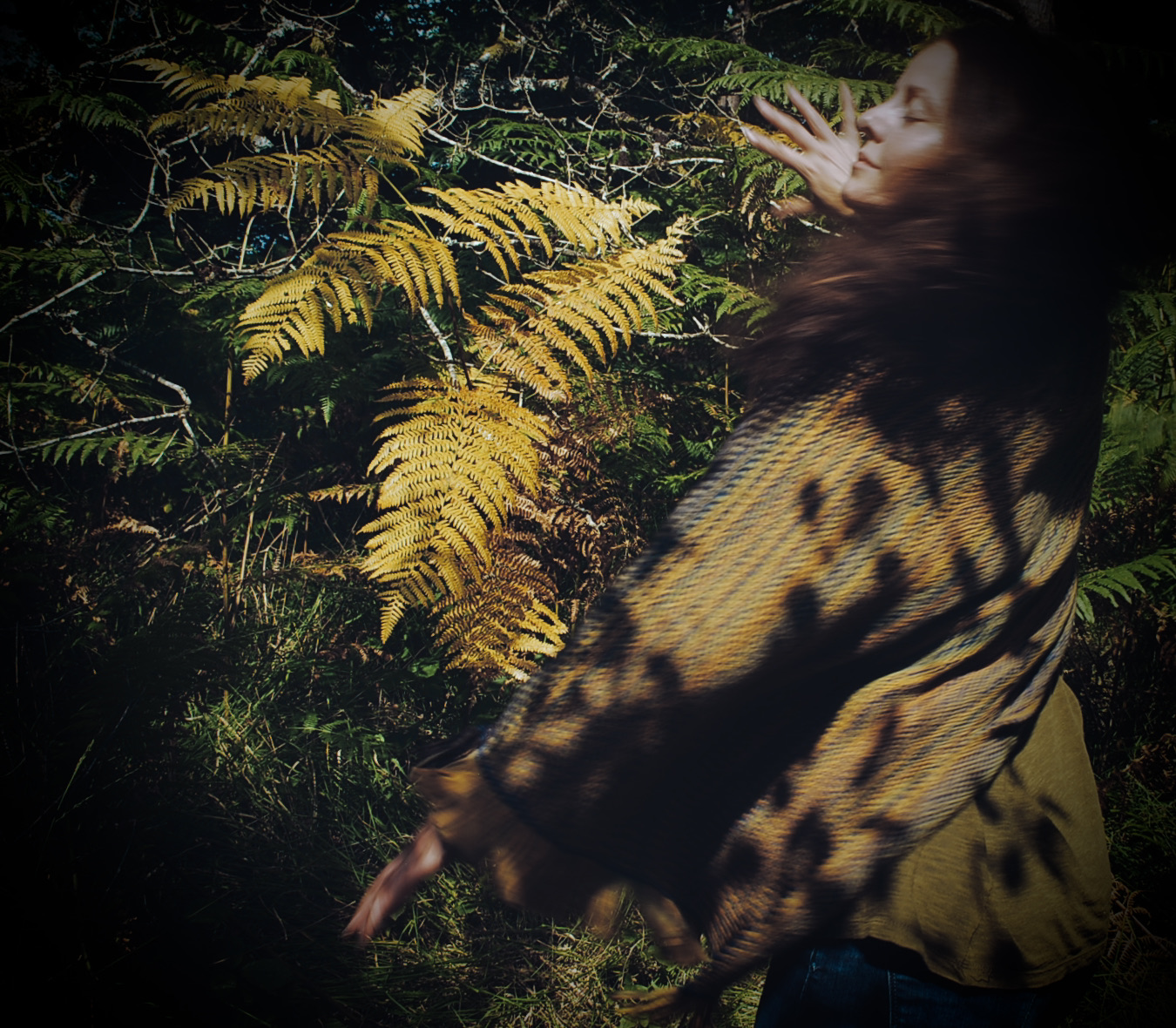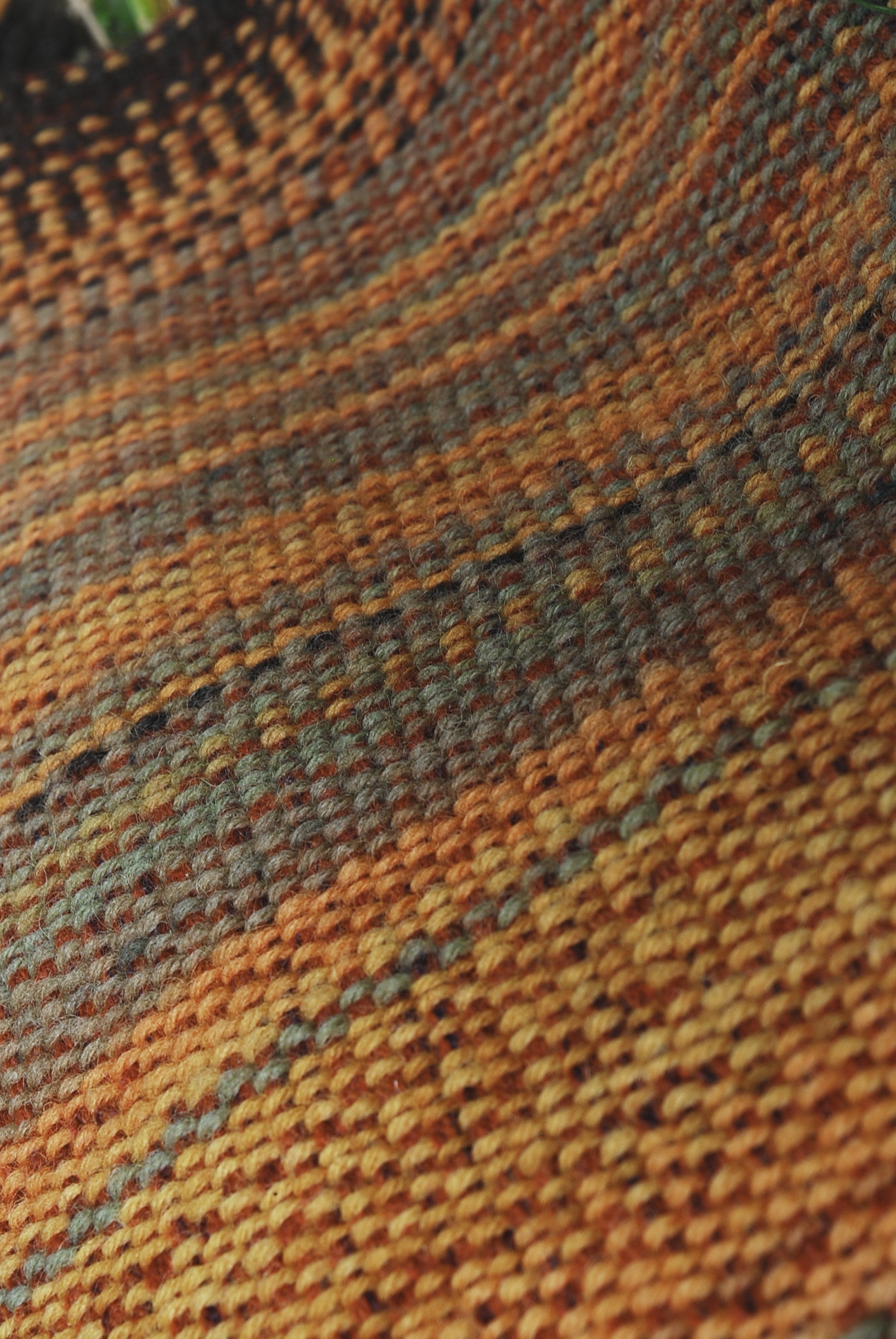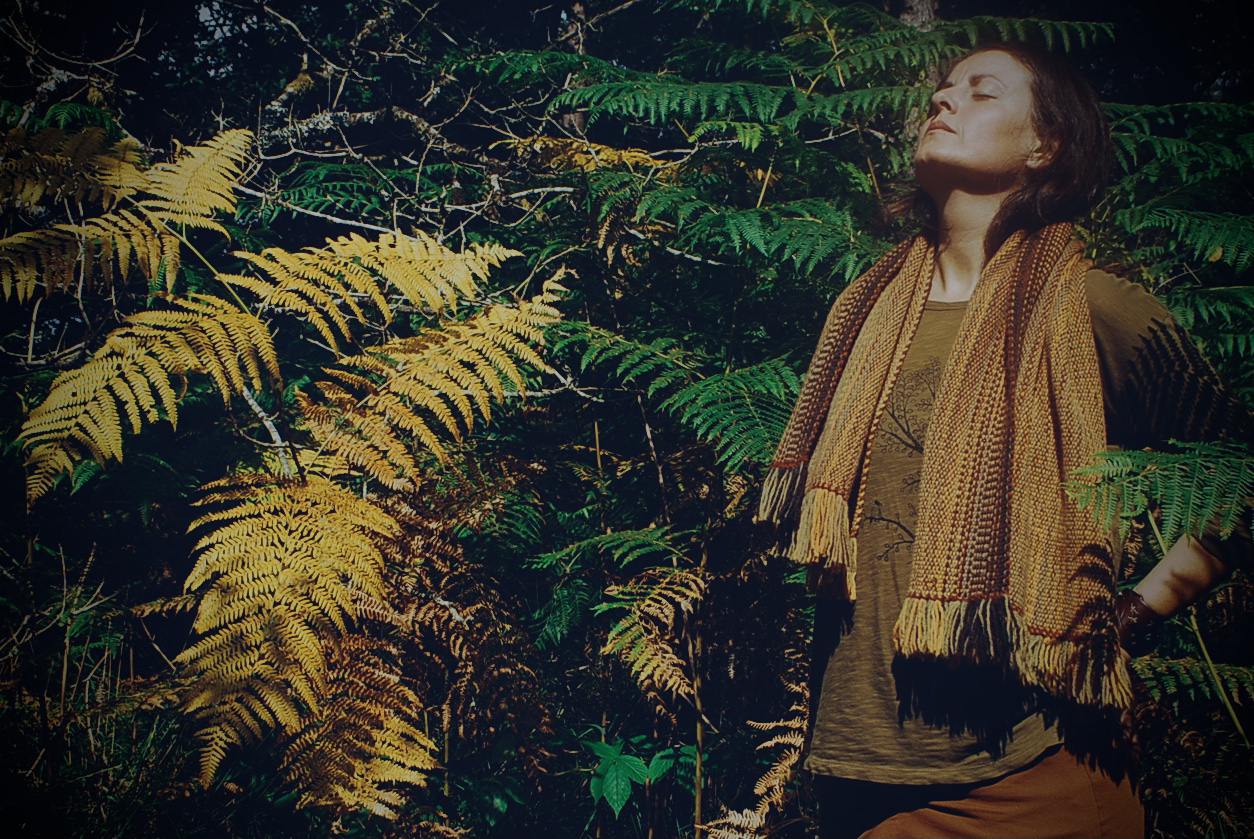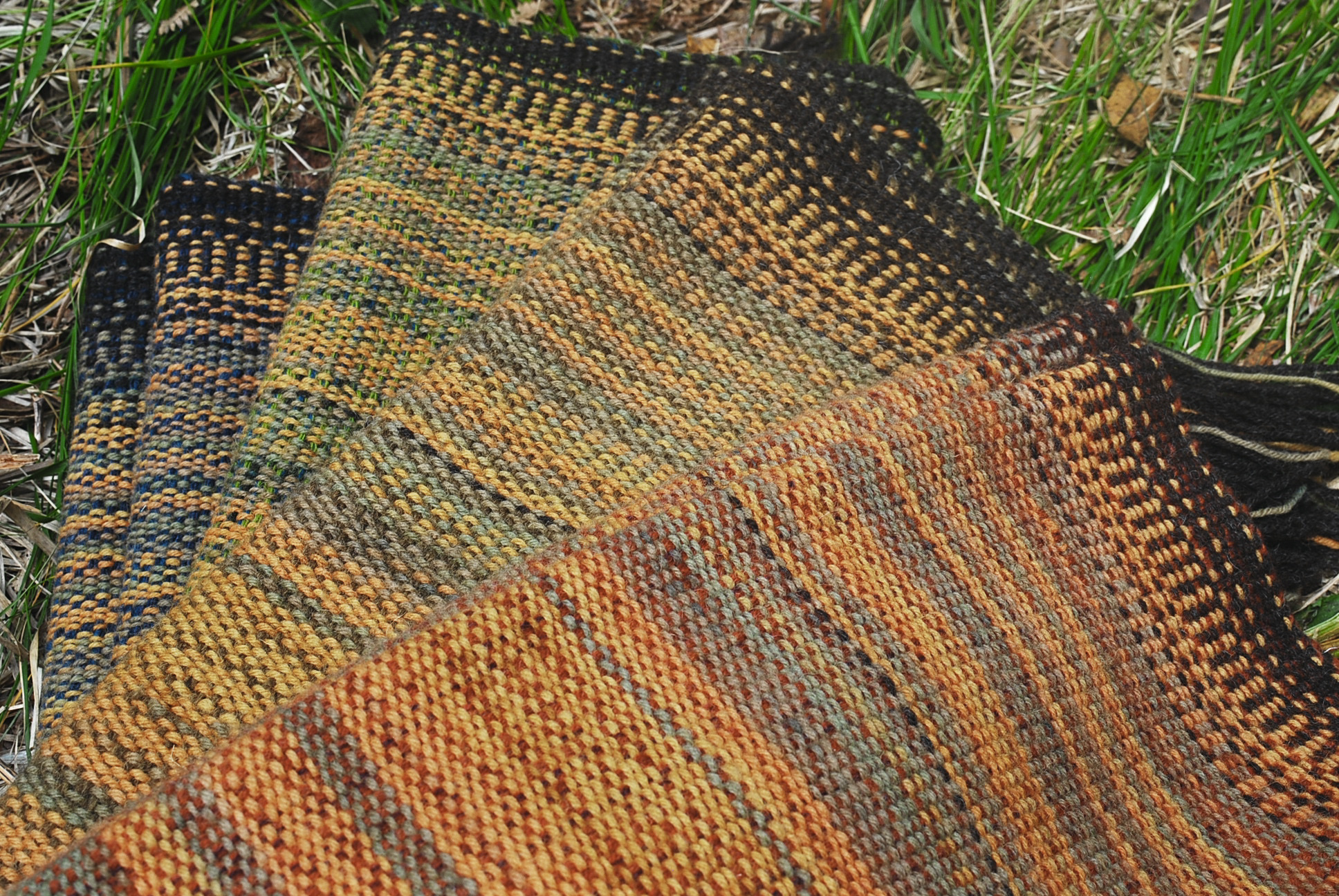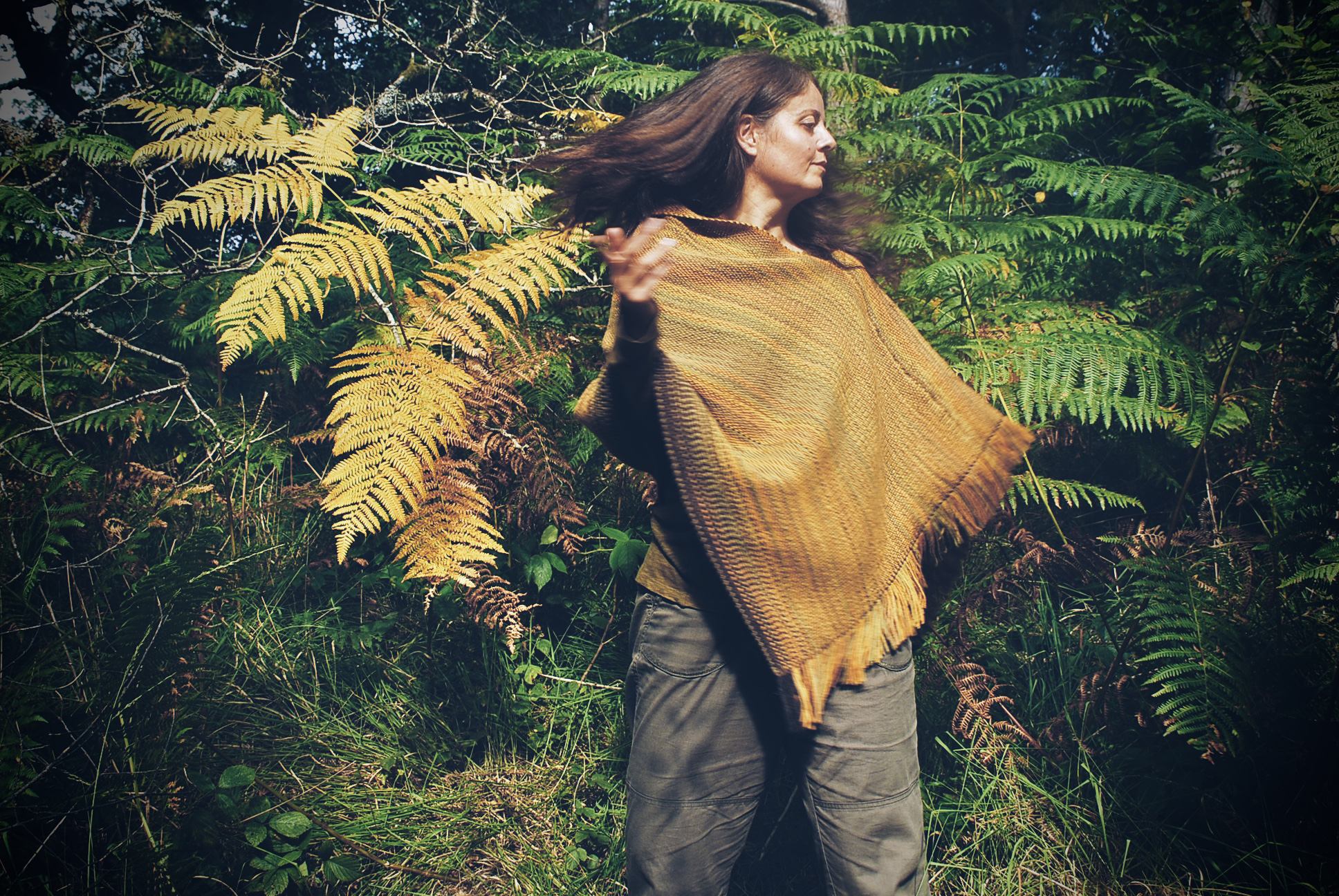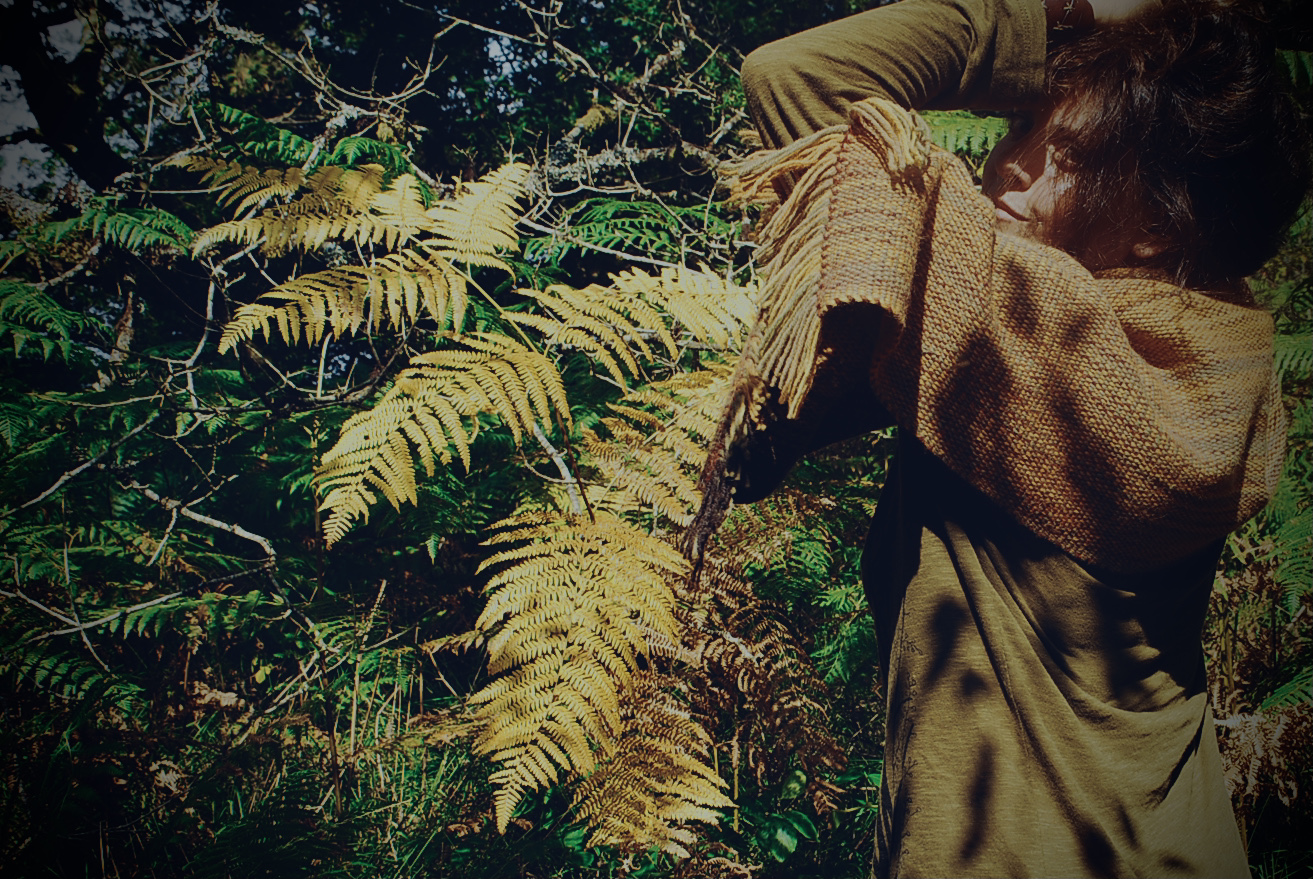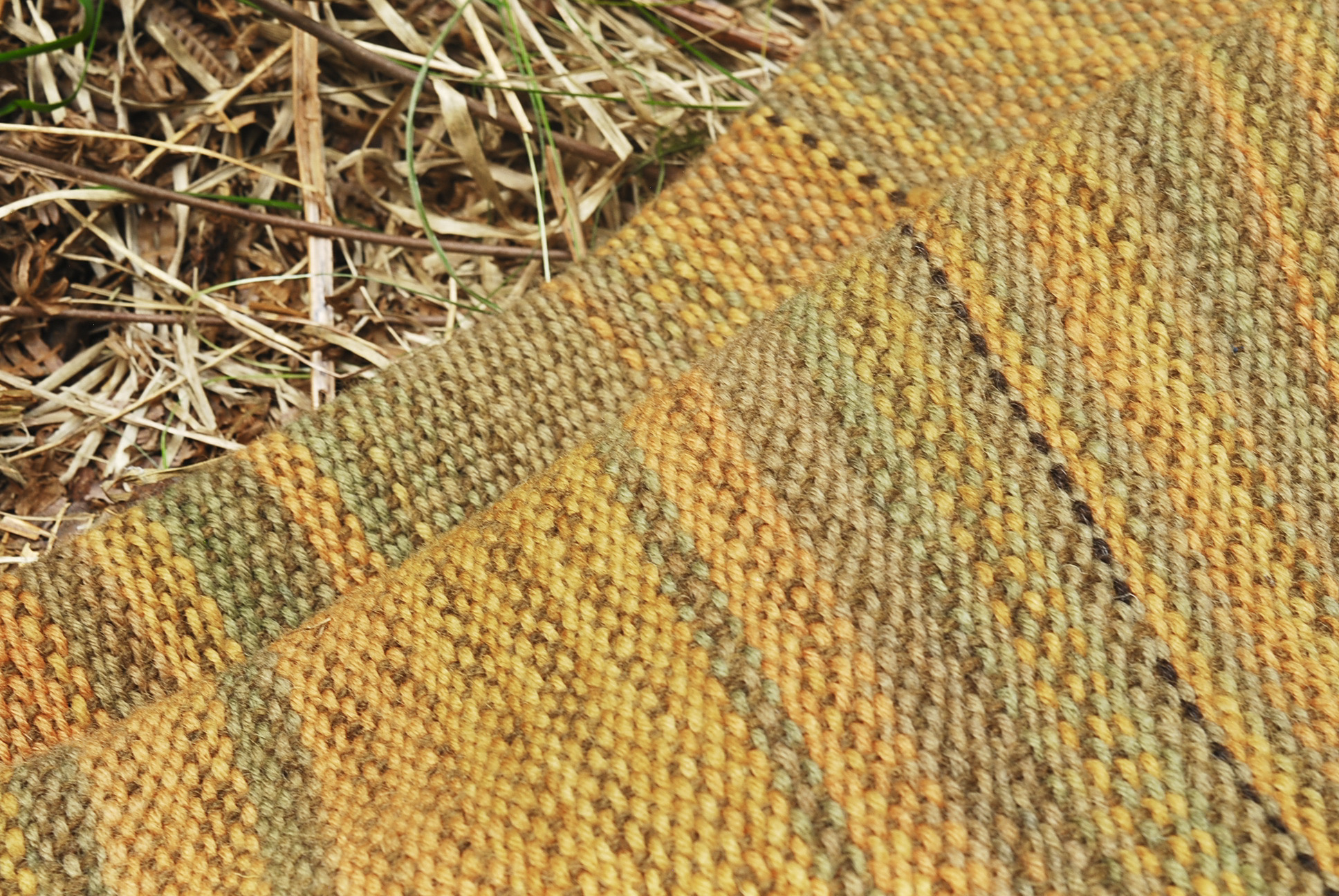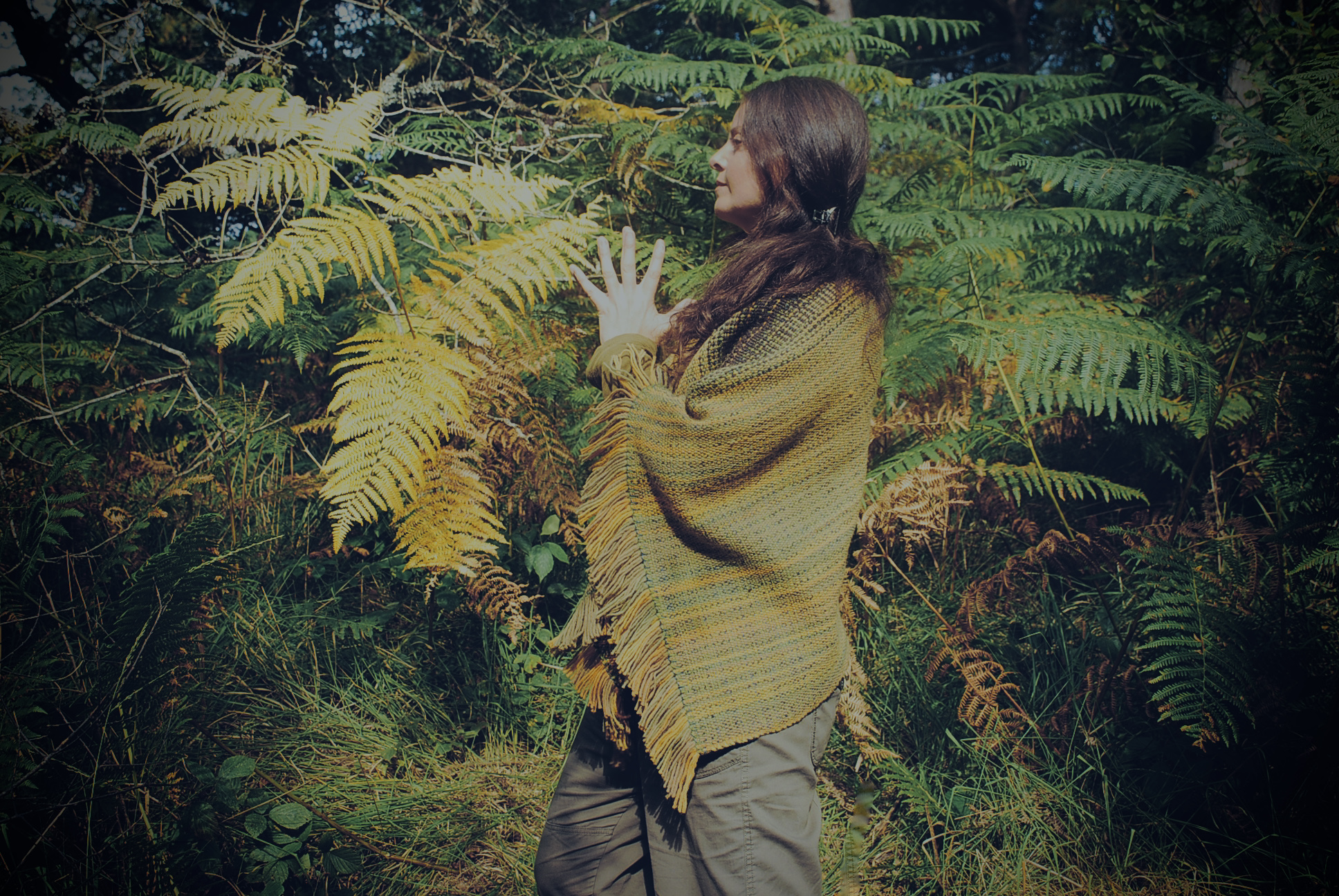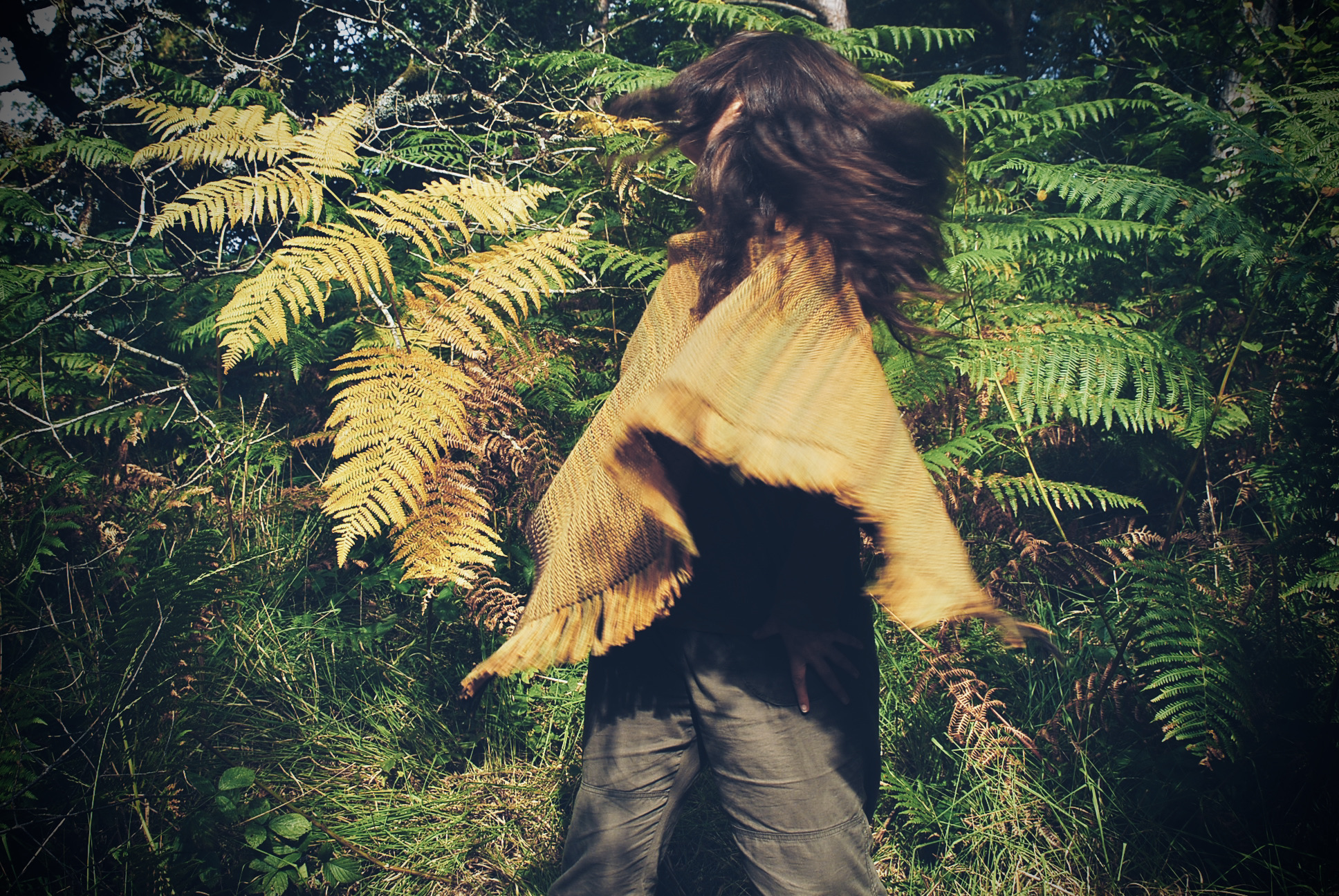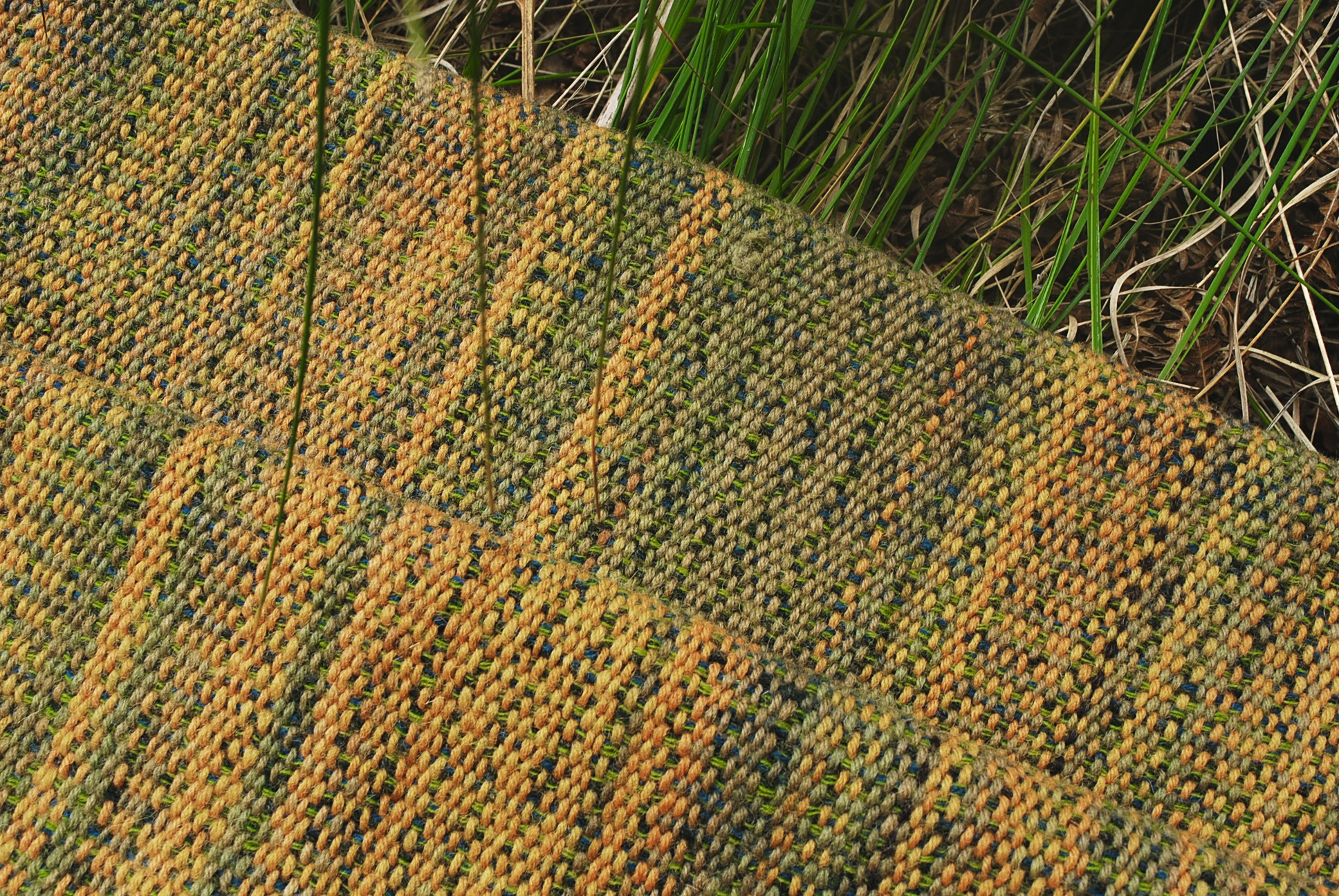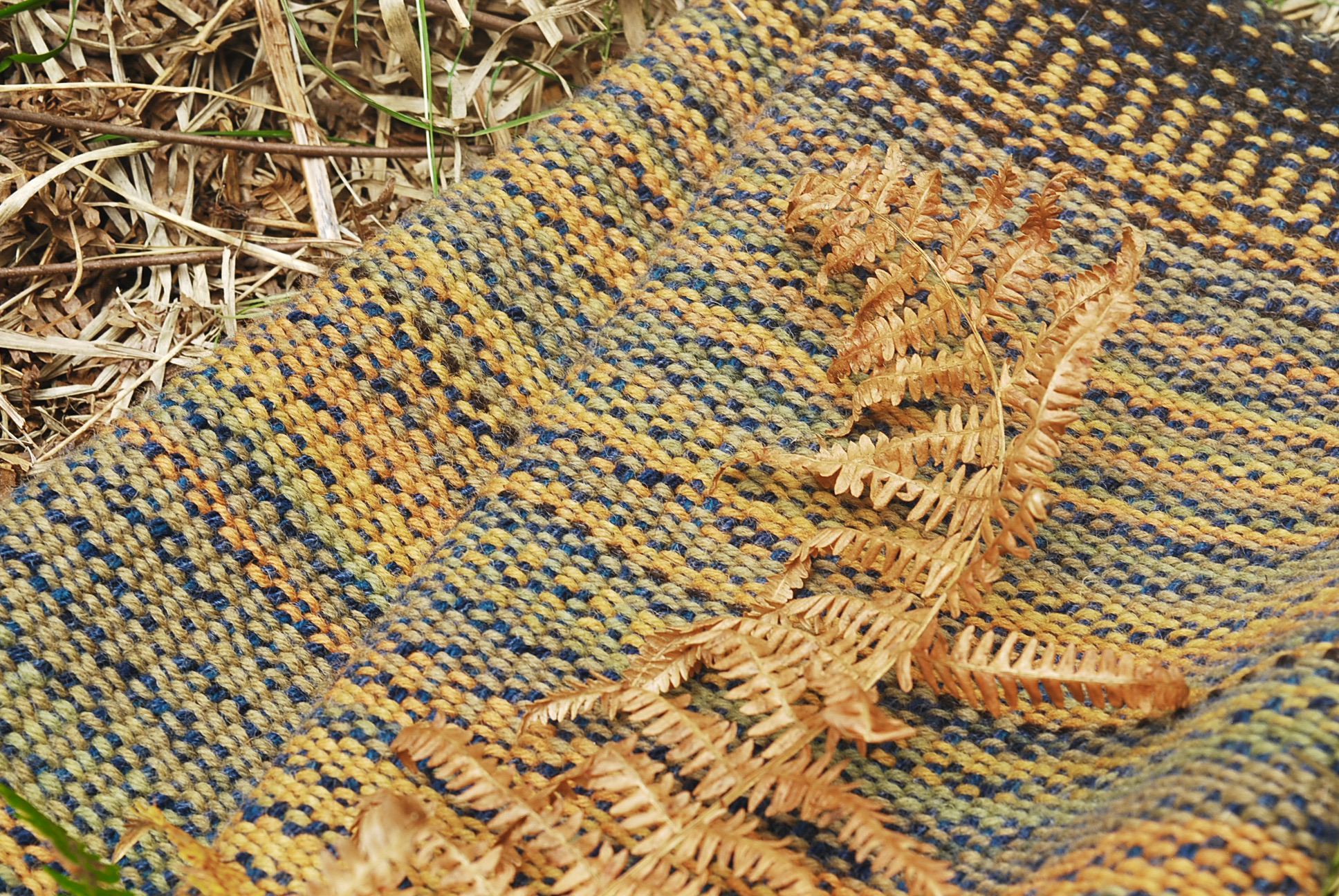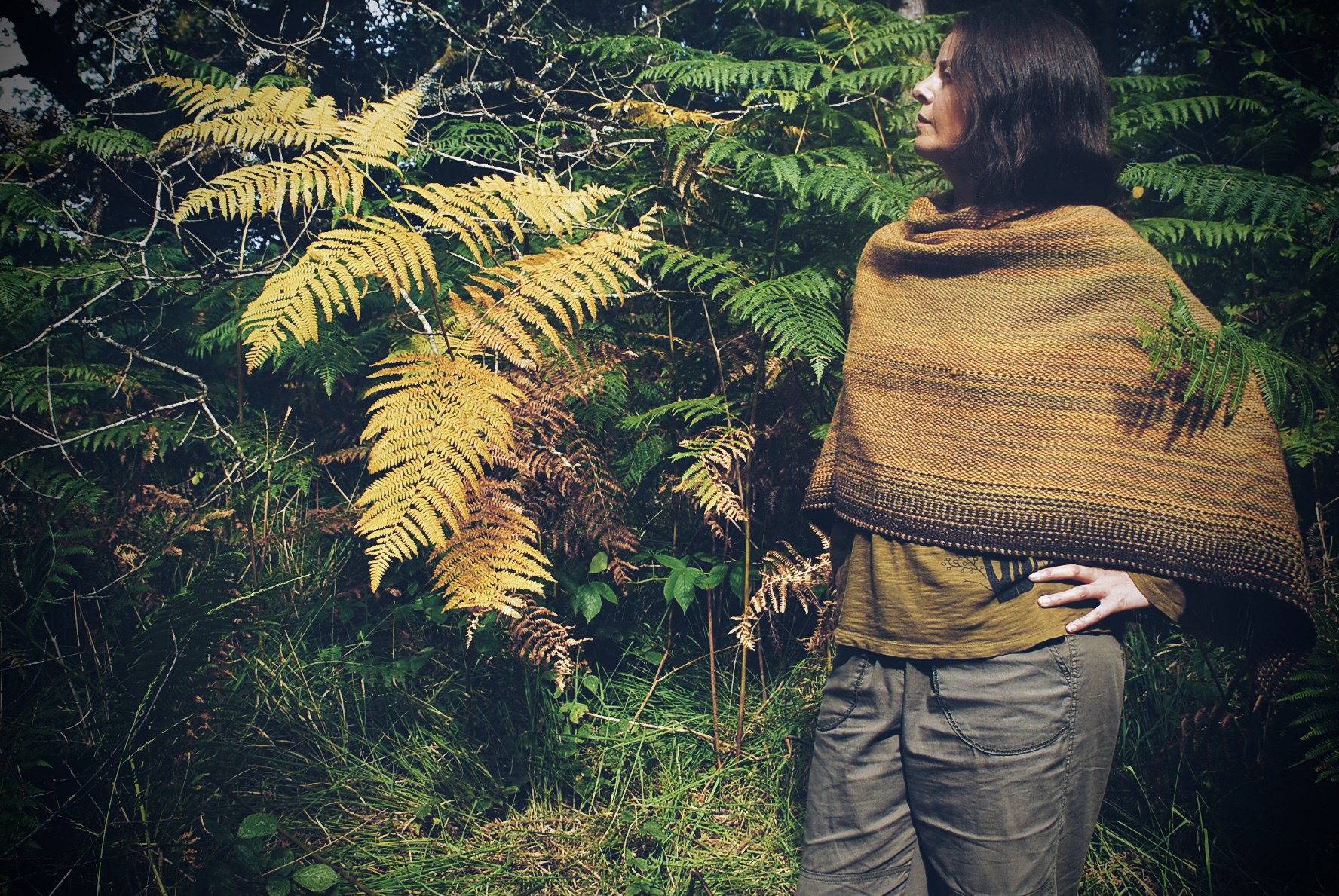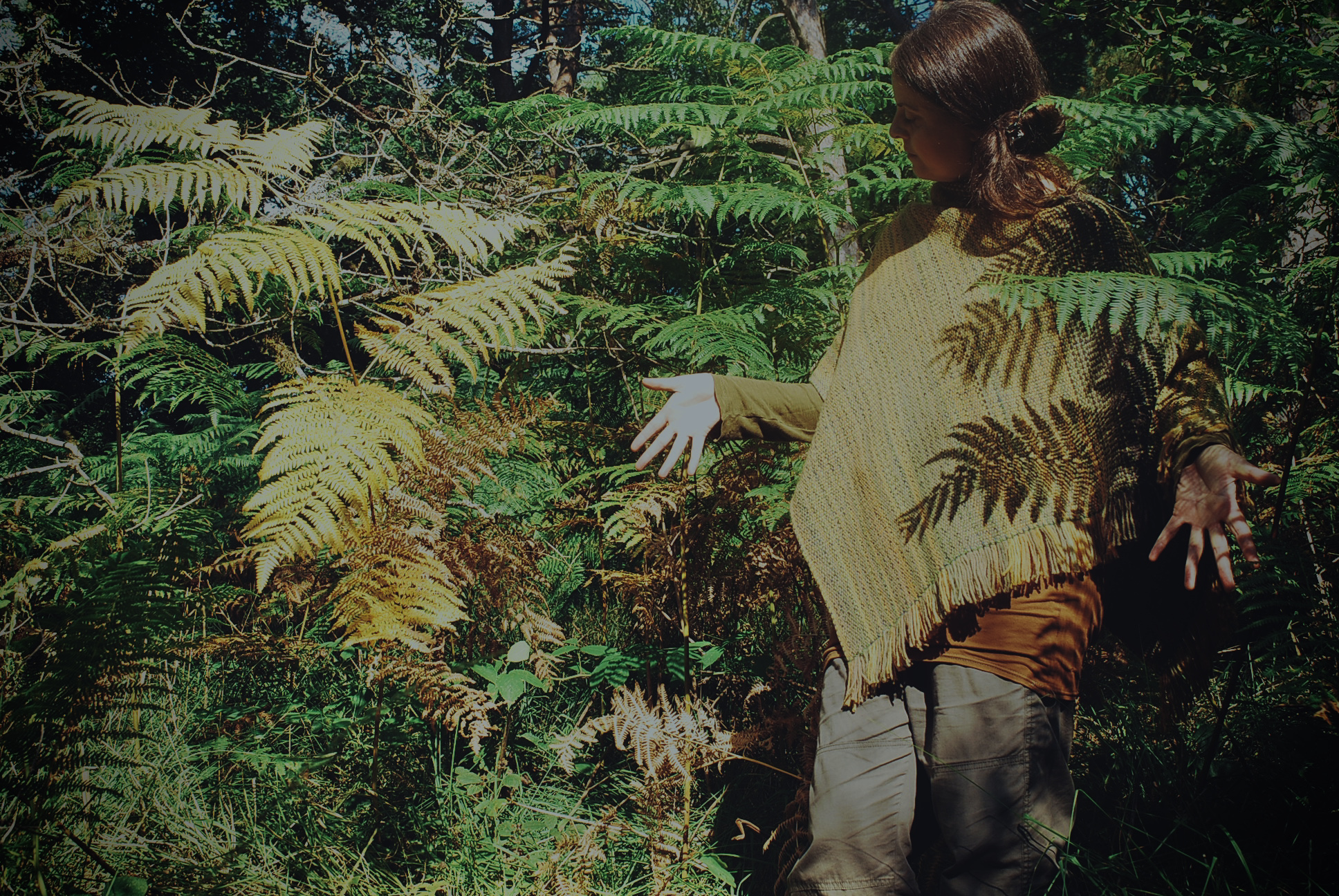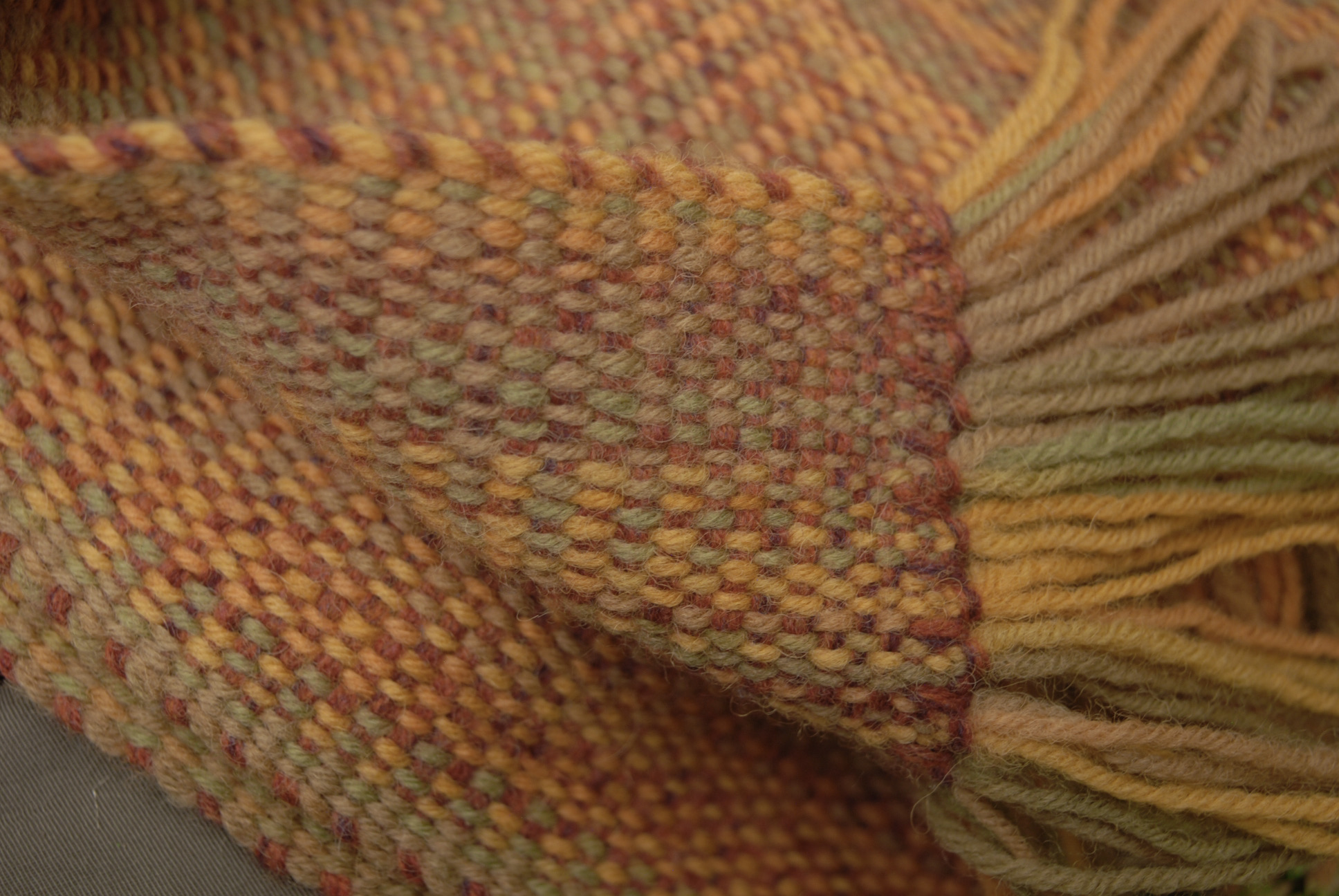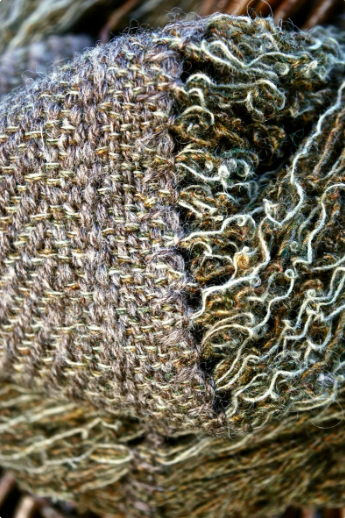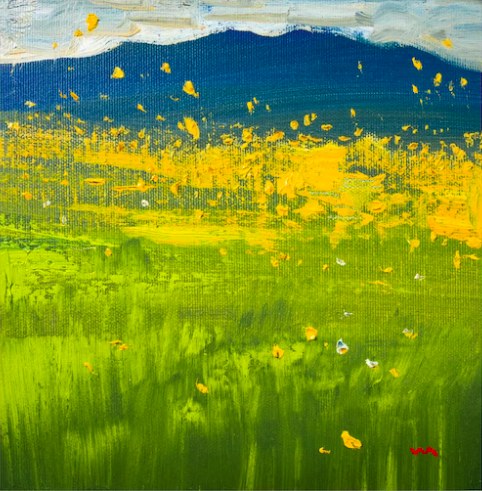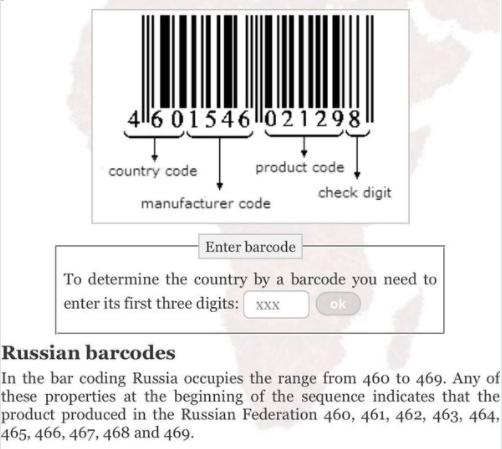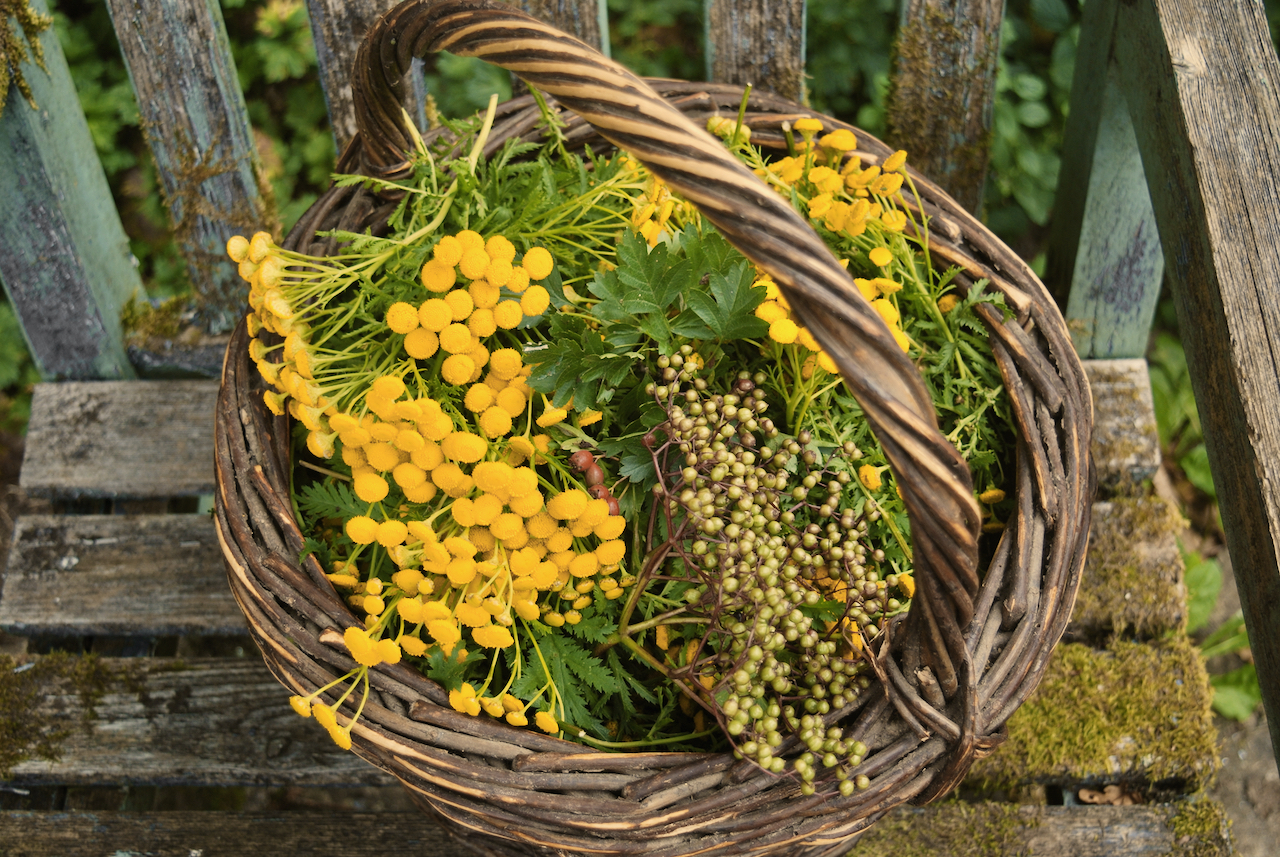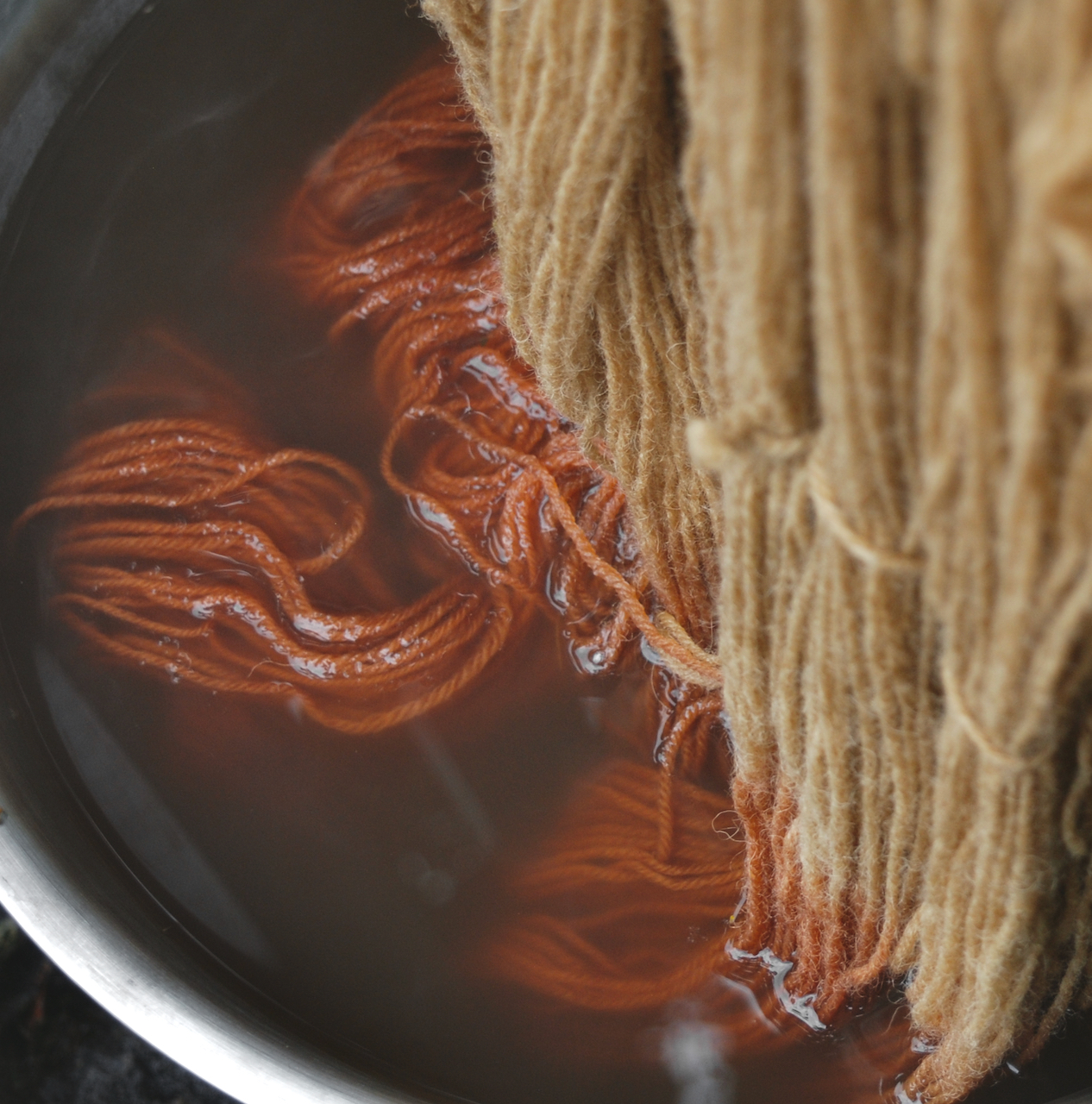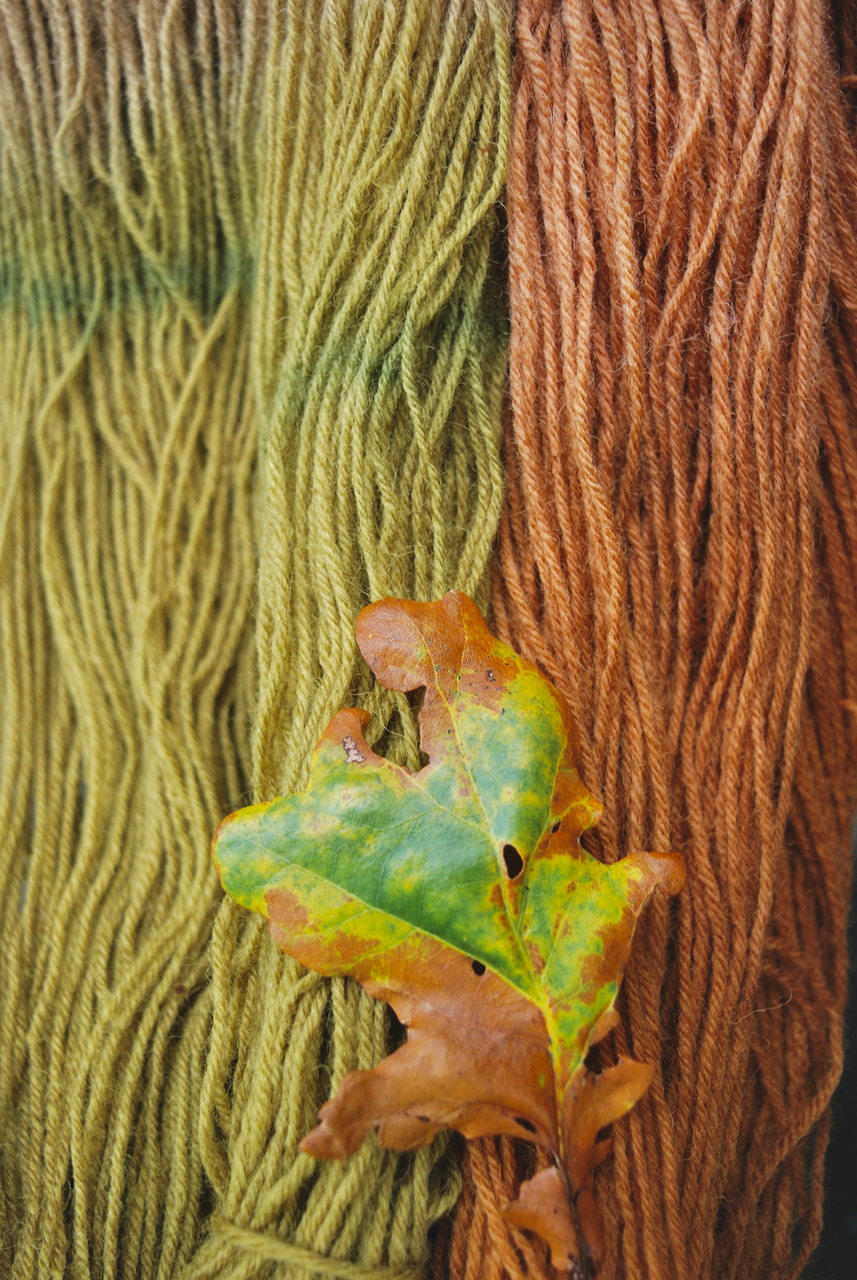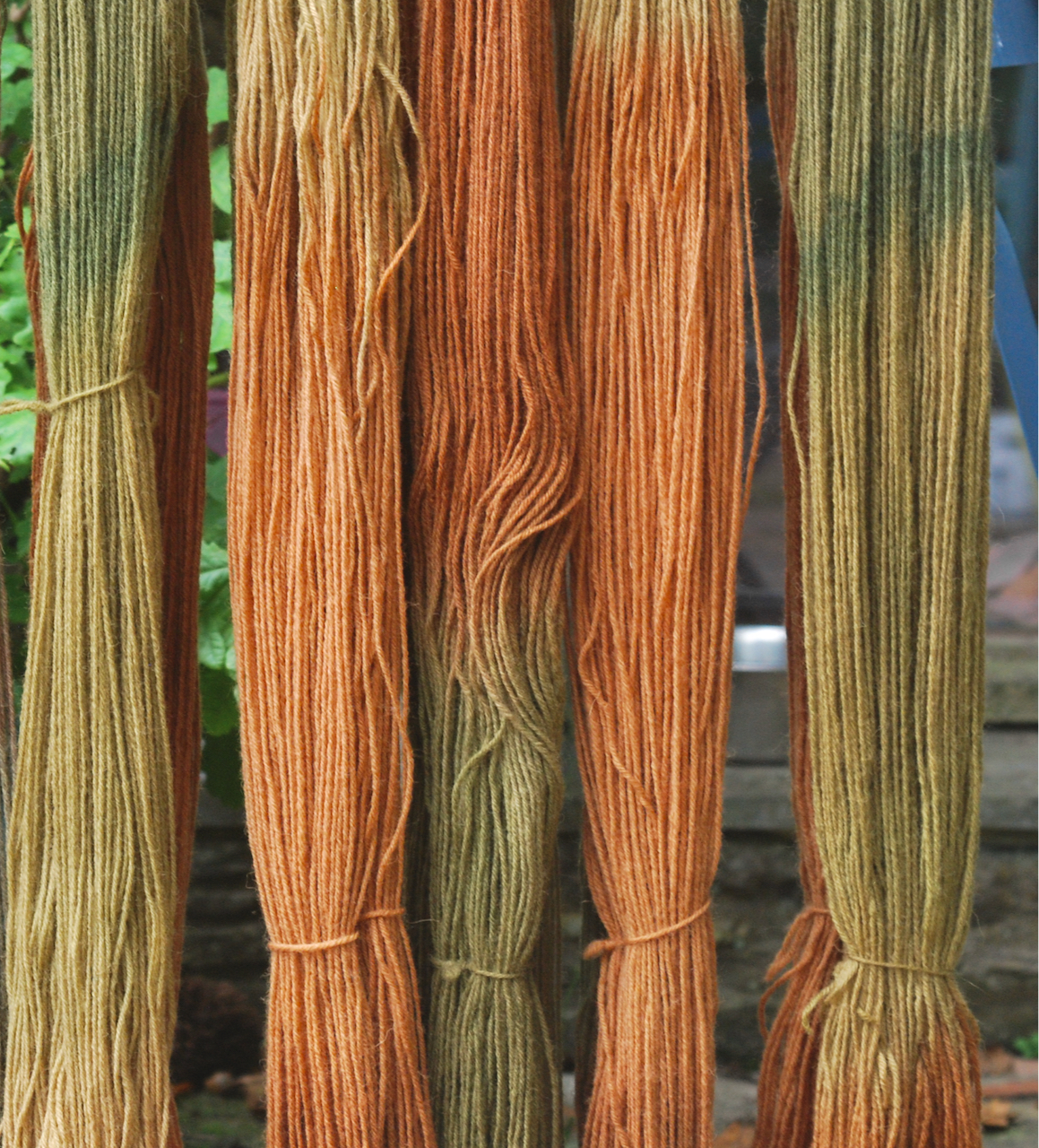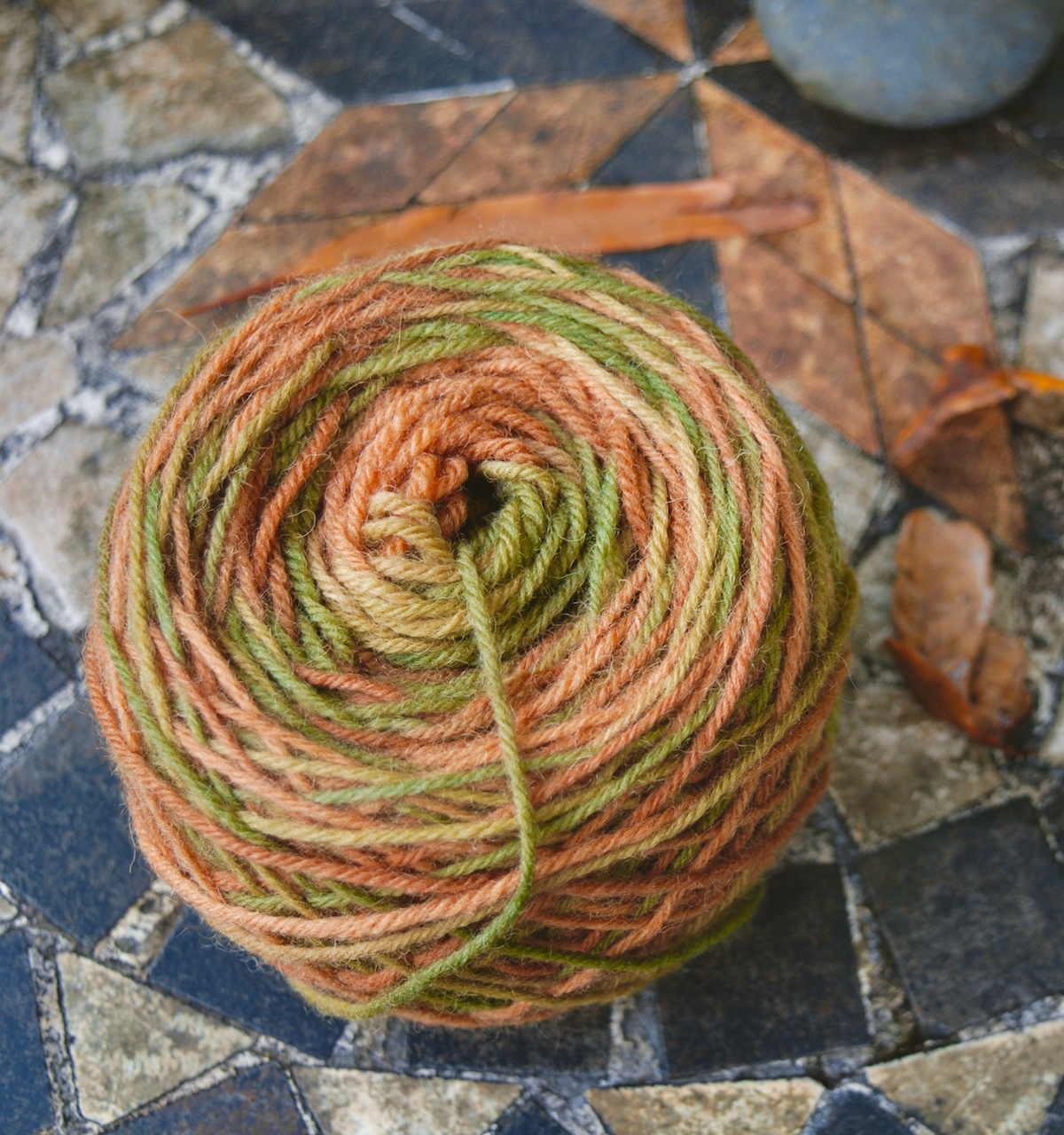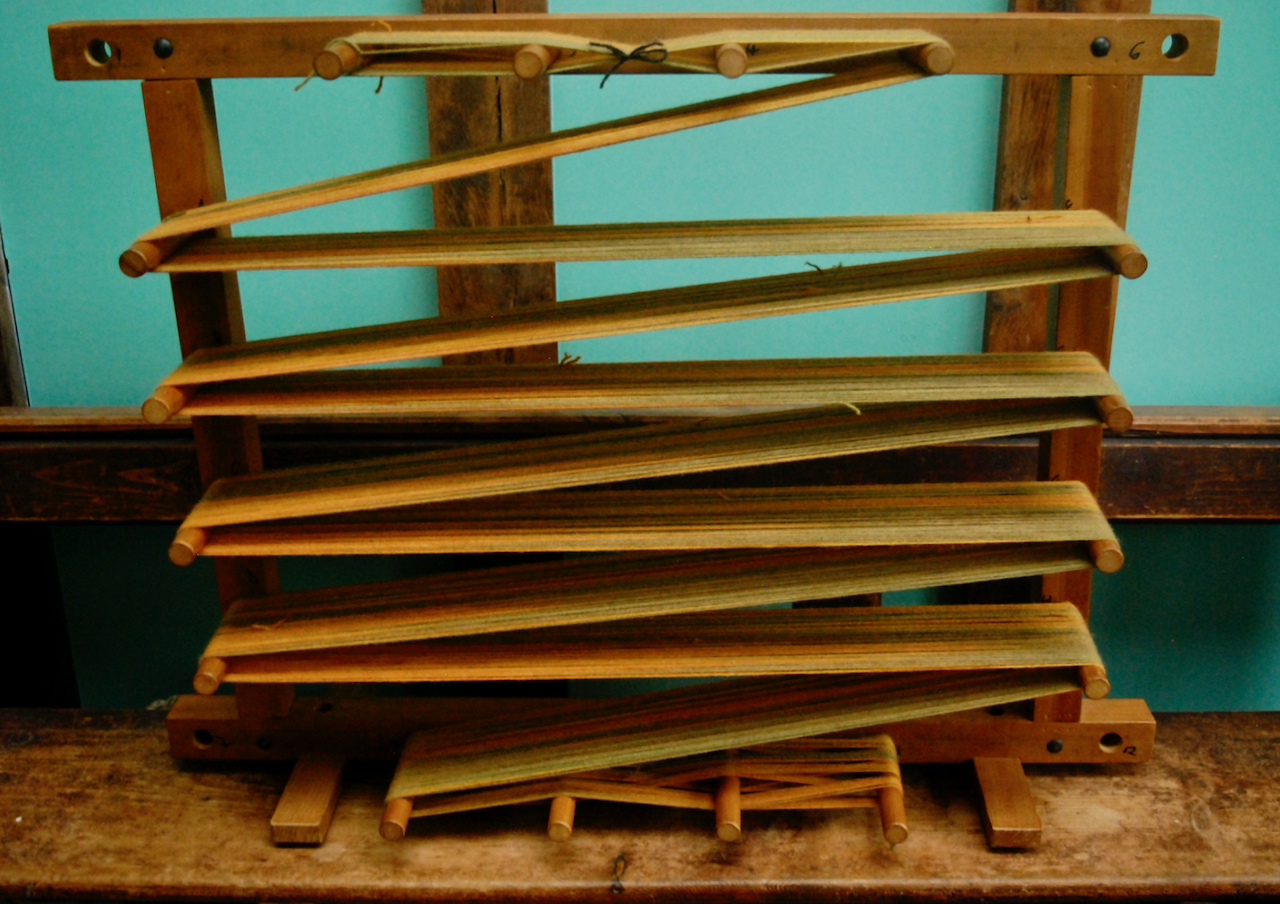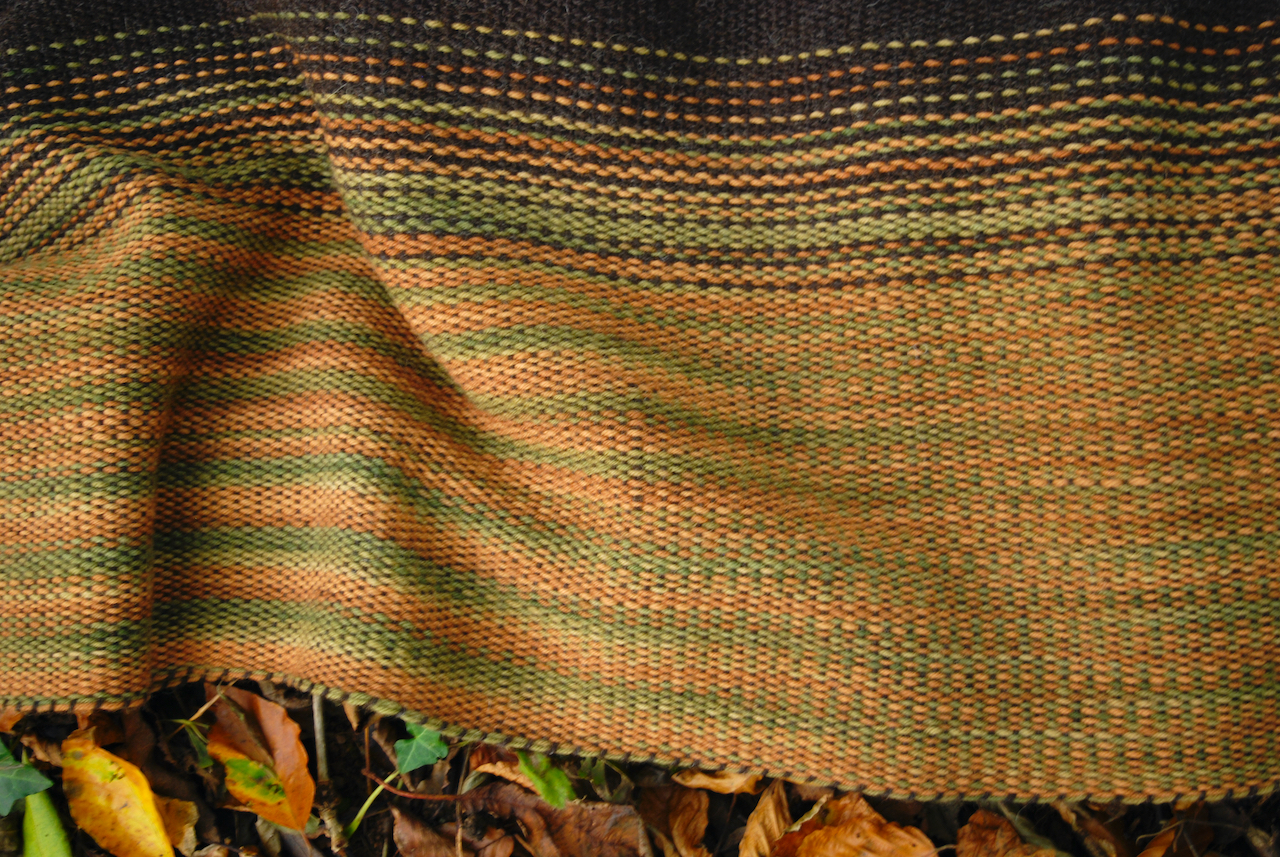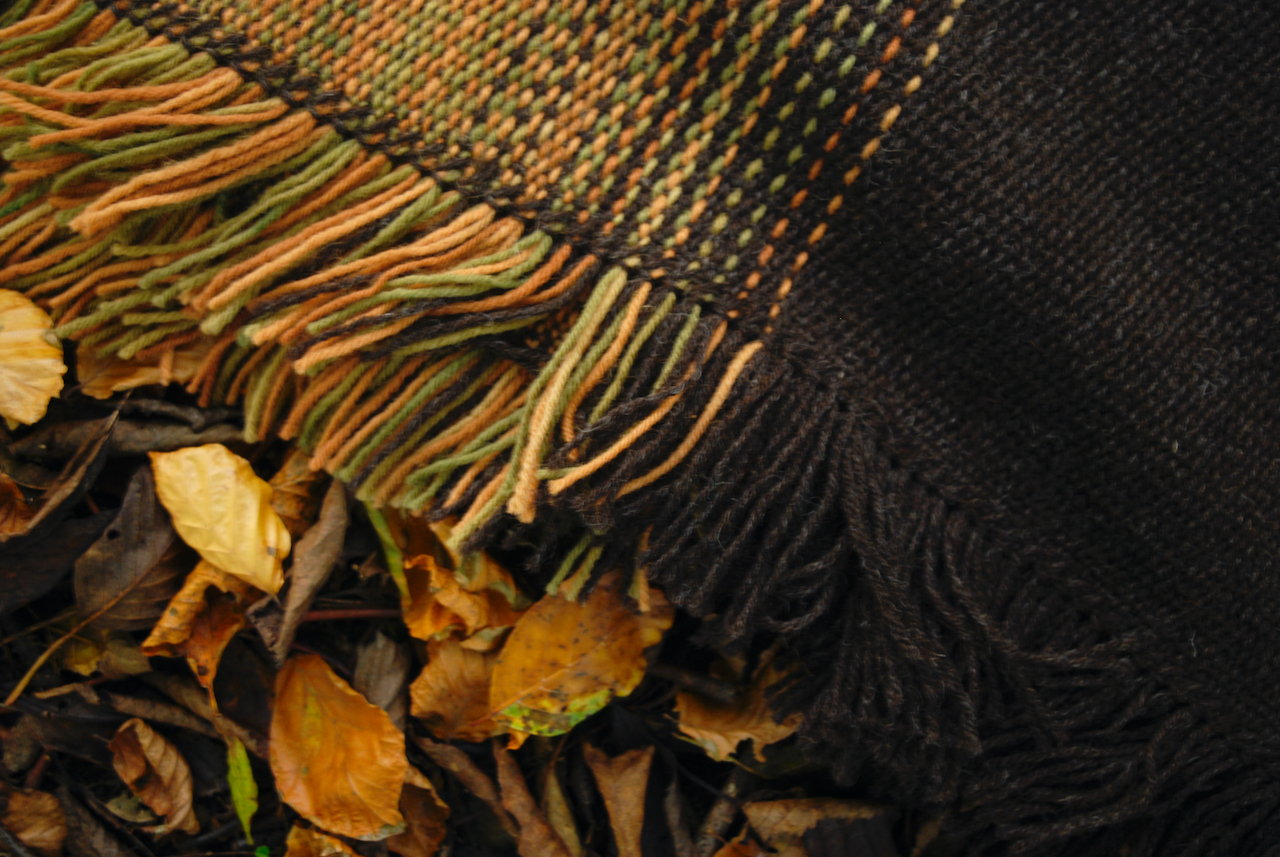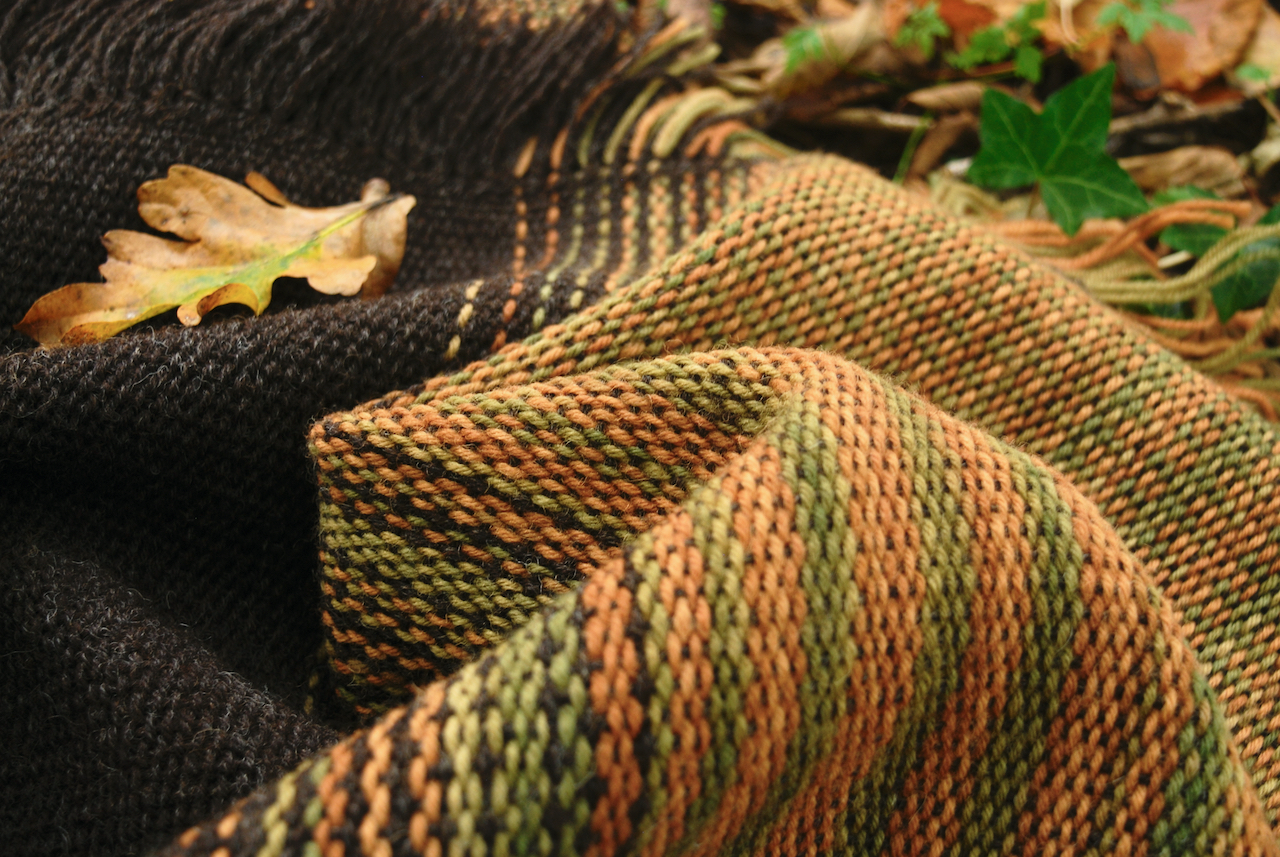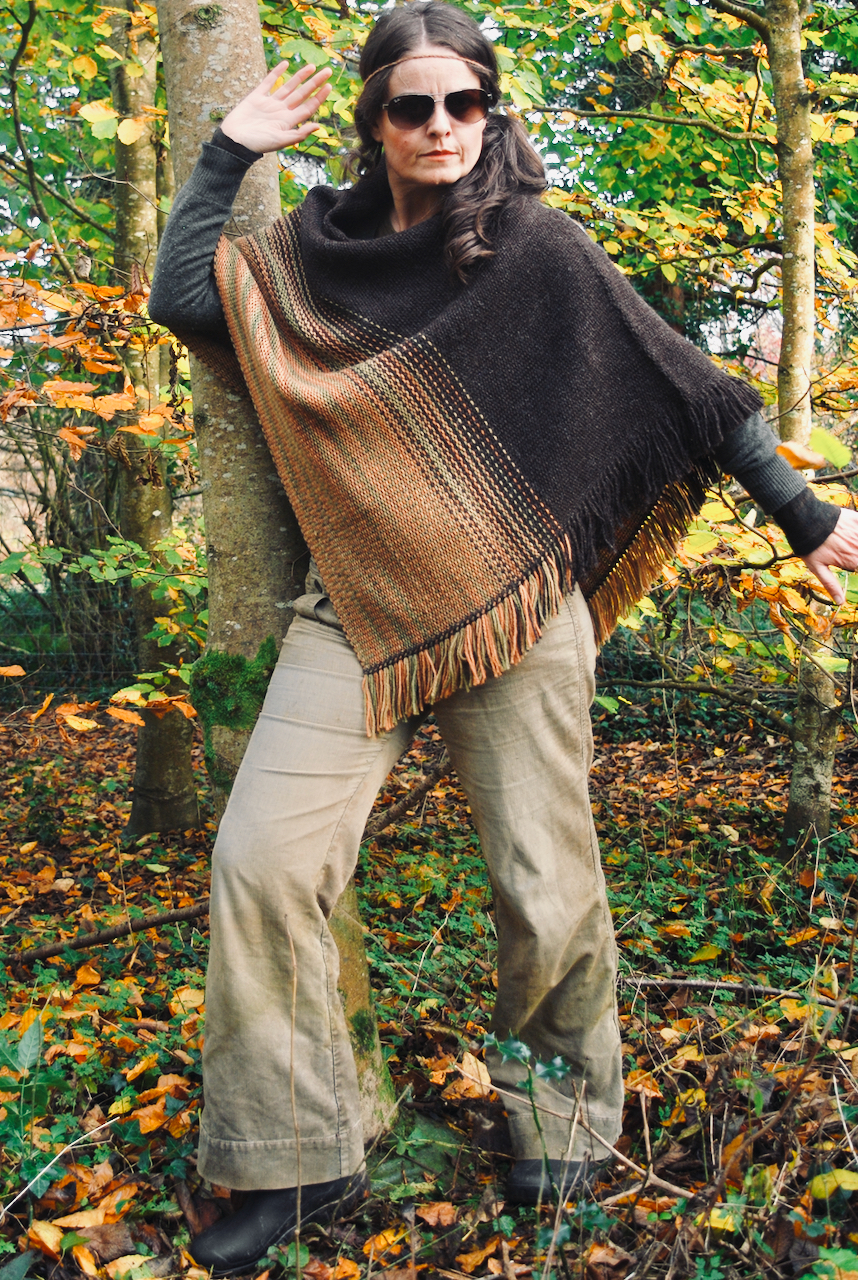Extreme electrosensitivity makes most jobs impossible and has led me on a poetic, eventful, exhausting, seven year journey to find a home, researching and developing sustainable livelihood all the way. Now at last I’ve found somewhere I could live, work and be well. But it’s a daunting undertaking…
The Business
I have woven £12,000 worth of stock these last two seasons. This is not big news, the big news comes at the end of this piece. But it is quite good going for a van-based craft business in a period of even-more-upheaval-than-usual. My new wares are in my shop now, and there will be much more to come through autumn and winter – ponchos and shawls followed by the more strictly wintry warms, the snugs and scarves.

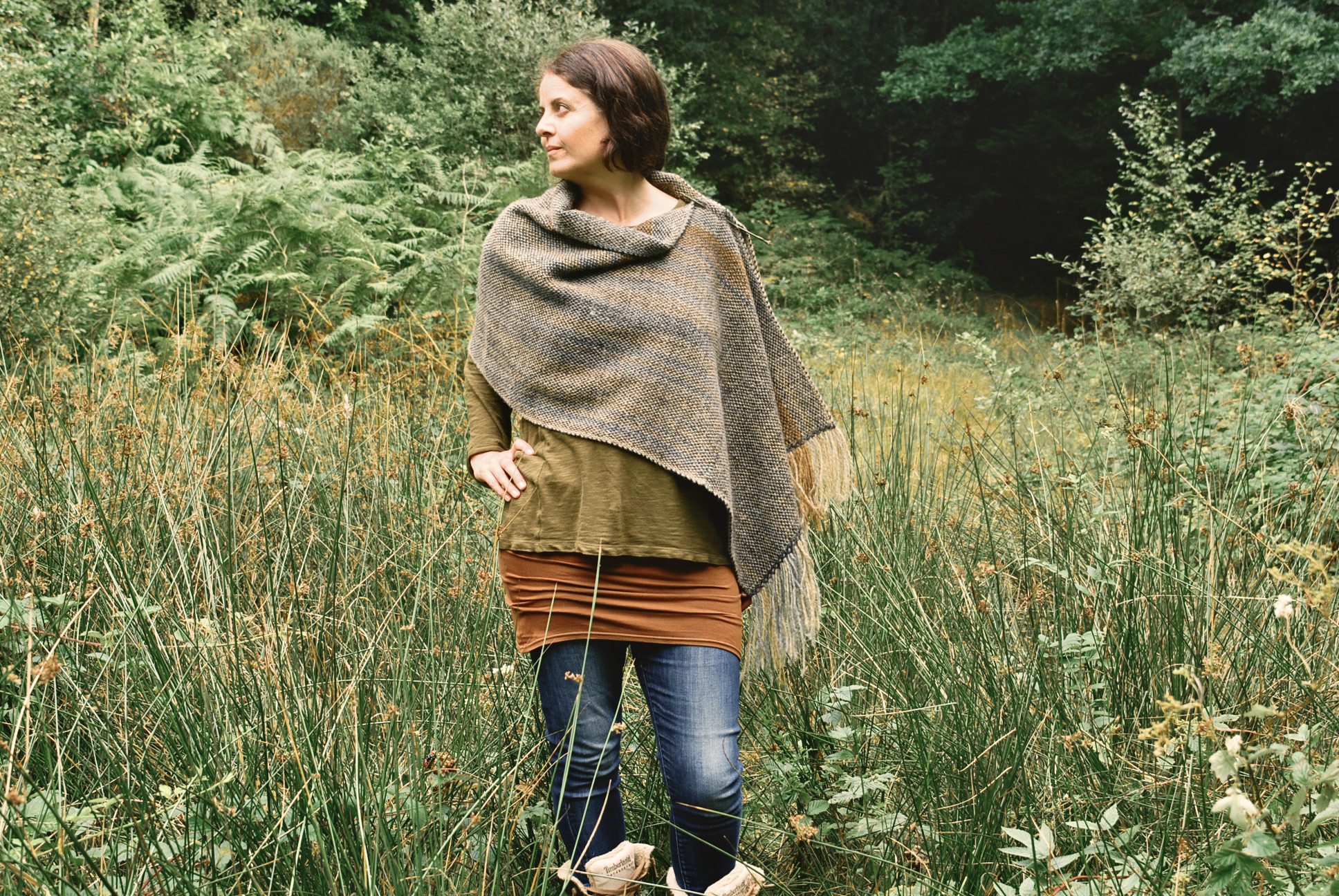
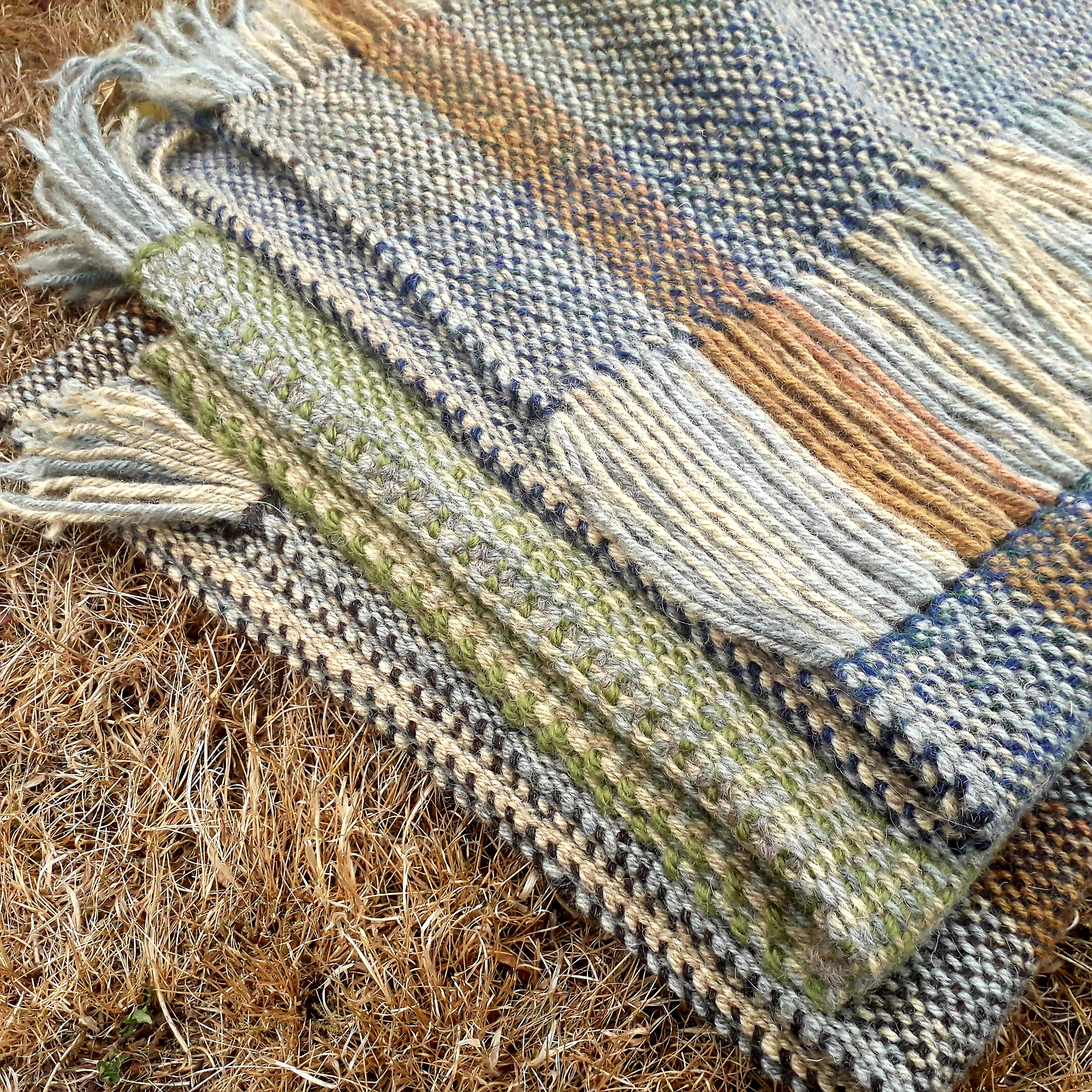
Now, unfortunately that does not mean that I could, with my current super-slow methods and tiny, itinerant workshop, weave £24,000 worth of stock in a year, because in these two seasons I have done next to no blogging, marketing, listing or, dammit, selling, which together require at least a third of my effort over a year. And it also doesn’t mean that I will beat my all-time record to sell £12,000 worth of stock this year. Very unlikely. Especially when limited by small looms in a small space to winterwear in decreasingly cold winters.
But, given that I already had more than £12,000 worth of stock in my shop before this season’s weaving, let’s say that I did sell £12,000 worth this year. I pay Etsy and social media platforms about 20% of that total for listing and advertising; a further 30% of it is accounted for by materials and expenses. So that leaves me with about half of the £12,000 as wages from which to pay all workshop overheads (‘use of home as office’) and living costs – £500 pcm.
The Leap
Seven years ago on the brink of launching, I reckoned that myself and large hound could live on the road in an elderly van and fund business overheads on £600 a month as long as nothing major went wrong.
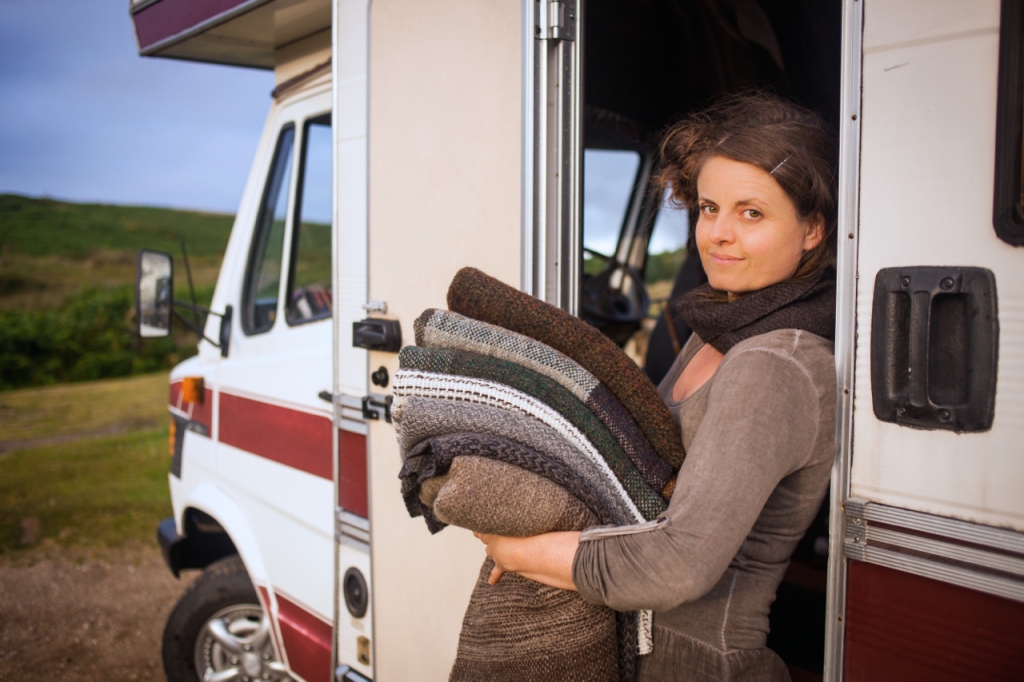
I don’t regret that leap for one minute (and actually I had very little choice). But it was never going to be easy, and of course major things have gone wrong all the bloody way. That and seasonality mean I’ve had to get help (for which I am so very grateful) just to scrape by in these costly big economies of ours.
Naturally I question every five minutes whether local craft can ever be viable, whether my community needs what I produce, or whether there is something better I could or should be doing. And since the answer to all these questions is basically ‘no’ in our current society, I keep on keeping on despite the contradictions.
I like what I do: it’s relatively autonomous and low-impact, essentially peasant/resilient; it’s creative; it inspires others; it warms others; it’s politically significant, since in our economic context makership is an act of resistance. It’s as much challenge as I can cope with nowadays, and, lastly, I can’t think of a single, meaningful alternative that a landless electrohypersensitive could actually survive. (I can’t even go fruitpicking as long as every other picker carries their damn phone on them, or there’s a mobile phone mast in sight.)
The Grit
Electrohypersensitivity is classed as a disability in some European countries – in France that qualifies you for disability benefit. This makes me feel both relieved and angry: relieved because the predicament is understood in some places; angry because getting sick from diesel particulates does not make you ‘disabled’; getting sick from tobacco smoke does not make you ‘disabled’; getting cancer by glyphosate or asbestos does not make you ‘disabled’… getting sick from artificially high background radiation levels does not mean that I’m ‘disabled’, it means that there’s an environmental toxin being sold as a public good that’s become a public dependency. A post-industrial necessity that is as much a public harm. And the cruellest aspect is that the most sensitive among us (including wildlife) are the least likely to be able to communicate effectively to the wider community because our society’s prevailing means of communication is micro wave digitech, the very thing that causes our problem, so we are often cut off from the wider community, struggle overly with bureaucracy, etc. etc.
To illustrate how my susceptibility to environmental radiation affects my lifestyle and relationships:
I effectively have a ‘budget’ of about six hours’ a week of artificial electromagnetic field (EMF) exposure, after which my body becomes over-aroused beyond quick recovery (aka relaxation) so that I cease sleeping altogether and, chronically wiped and wired and stretched and anxious and over 40, become ill. (The number of six hours can be more or less depending on how high the levels of exposure are, e.g. from zero inside a granite building in a wooded valley with all lights, appliances switched off 95% of the time to minimise effects of poor earthing in old electrics, to moderate on an exposed hillside where there’s some mobile reception, through to extreme every time I connect my phone – often my only internet access, get a zap from someone else’s device, go into town, or pass a mast.) Just shopping, essential comms and keeping my work going uses up that budget. Going out at all always costs me a few days’ recovery, which I often can’t afford. To actually enjoy any time with friends, they have to be up for switching off and wildy walks in wooded valleys. Very little else.
And I fear how many others are suffering in far worse surroundings than me, and without knowing the cause to be able to make changes, and without means and connections to pursue the crazy workarounds that I pursue; how many will resort to zombifying sedatives, or beating their wives, or psychiatric wards, or drinking themselves to death, or just experience steadily worsening health; how many of us are expendable in the name of ‘progress’, when ‘progress’ means perpetuating and protecting wealth concentration among a few in a hyper-tech ‘arms race’ to the bottom; how many sick people a straining welfare system and diminishing workforce can carry; how far behind the times the medical profession is in their knowledge of this; and how many will have to get sick before national norms for safe levels are reduced and adhered to. (As often, some European countries are ahead on this, thank goodness, namely Austria, Germany and Italy, last time I looked at the stats.)
The Nacre
So, as ever in so many ways, I’m one of the lucky ones. And against the backdrop of housing crisis, gig economy, digital nomadry and pandemic, with help and your moral support and custom, I have woven a beautiful cloth of the silver lining. I have spent much of the last five years combing the furthest reaches of these isles and Brittany for some affordable little nook I can settle relatively autonomously to quietly grow my own food in as much voluntary simplicity as anyone not-quite-hermit can feasibly achieve in this wretched ‘civilised’ world. The quest has been necessary, and it’s been romantic, in between the struggle and the mundane. It’s been dangerous and empowering, as all quests should be, but also confidence-shaking and debilitating.
I have expended immense amounts of energy – energy that I should have been using to change the world, and to work, grow food, exercise and otherwise look after myself and my community – searching for and researching possible housing solutions in four countries (One Planet Development schemes, co-housing, eco-villaging, shared equity, building plots, planning laws, building materials, ruins, barges, squats, husbands), all of which I ultimately found I simply could not achieve as a feral, lone-female, anarchistic electrohypersensitive on a tiny income.
The Pearl
At last I’ve found a small, very roughly habitable, rubblestone cottage buried in a quarter acre of eight foot high brambles, with another half acre of tree-fringed glade, in a pocket of properly rural countryside, with no mobile phone coverage and friendly neighbours, that will be mine for a very modest £55,000. It has a new roof, a new woodburner, free water, and a very basic bathroom and kitchen. Crucially, there’s space for a proper workshop with larger looms, and for a dye garden, and possibly even a couple of fleece animals.
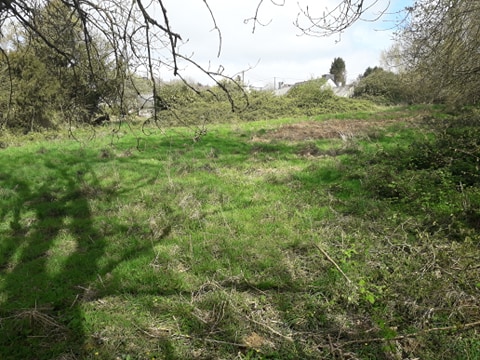
As well as the normal surveying process, I’ve had both a builder’s and an architect’s advice on it (friends in the right places, thank you Chris and Chris). It is structurally sound enough but there is work to be done to deal with damp and lack of use; it has old, skeletal electrics, no boiler, and an old, legally obsolete, septic tank.
But I have tools, skills, books, contacts and courage; I know how to rough it, wing it, mend it and make do, and anyway ‘modernising’ isn’t really in my vocabulary; my way is more romantic – grow wax myrtle and make my own candles; rig up a bicycle to power my laptop and eventually go without; shun even photovoltaics – if I can.
It’s not perfect. Drawbacks include a not-very-walkable route/distance to the nearest market town but advantages include land that gently slopes to the south west; the house being at the top of the site, not overlooked; the property having its own spring as well as the shared village one piped into the house. The house itself has some nice features among the less nice ones, and ticks the essential boxes (especially no mobile coverage) where in five years of searching nothing else has.
The Next Step
I’m researching forest gardening, regenerative micro-agriculture and permaculture. Fleece animals and dyestuffs from my own dye garden would build on my existing livelihood, as well as developing food production in case of community need. In fertile lands like these, and in the face of climate catastrophe, we need all the primary producers we can get in our precariously obese ‘service’ economies. Keeping earthskills alive is a matter of survival of the species.
No falling in love until it’s signed for, though it’s mine for the signing. I hope to move in this month or next, after putting down the deposit – the vendor knows I’m in sore need of a home before the nights get cold and dark.
The only problem is that I don’t have £55,000. Nor am I ‘mortgageable’, an advisor told me. I’m terrified, as ever, but I do have a plan.
The Plan
- The bank has, irresponsibly, offered me a normal loan of up to £30,000. Repayments are scary as hell on a tiny, erratic, arts income. And in my analysis, since my bank calls itself a mutual but is not, this money-created-as-debt-at-interest-by-those-privileged-with-a-license is a locking mechanism for our society’s material ills. But so much less choice than we like to think: shoulder the poverty tax and compromise my principles in the short term the better to keep fighting in the long term.
- Blessedly, there are some family funds I can draw on in addition.
- I have things to sell: my retro Mercedes; a yurt (currently backup accommodation but soon unaffordable luxuries); lots of handwoven garments and many more to come; plus two very fine musical instruments (if I can content myself with lesser versions).
- Once settled, I can be more productive: in the last seven nomadic years, there are seasons when I work a steady 45 hour week, months when I work a 50 or even 60 hour week, but times of upheaval in between where I barely work at all: beyond my control, exhausting and disruptive. (Life on the road is not a steady amble from one beautiful hilltop to another; there are vast swathes of inhospitable terrain – hostile territory, even – in between the very few remaining wildy refuges. Especially if you’re electrosensitive. Also, too often I have had to rely unsustainably on family and friends, who can barely accommodate my electrosensitivity themselves.)
- There’s a gap in the local market for lawnmowing for secondhomeowners, which I could risk destroying my soul to do if bank loan repayments became really scary in my low season – a scythe would make it less environmentally loathsome and more of a campaign stunt. There’s also a gap in the local market for holiday cottage changeovers, ditto…
…and finally, you.
The Solution
Given the vagaries of a craftsperson’s income, to reduce the amount I have to borrow, I’m appealing to you. I’m launching a crowdfunder. This is hard to ask in our society (though in the Once and Future Village, friends, neighbours and family would all help each other build their homes if they could)…
Please would you help me buy a safe, stable, longterm home from which to further my (I hope you’ll agree) worthwhile activities?
The Crowdfunder
If so, if you’re reasonably comfortable/secure yourself, and not stretched too thin in over-giving, or stuck renting and resenting, or debt-stressed and floundering, as so many are… if so – and I can’t type a heartfelt enough ‘THANK YOU in advance’ – if so, please go to my crowdfunder page to make even the tiniest donation. I hope to raise £20,000 before November 30th, but sums will still be invaluable after that as I deal with poor drainage, decrepit septic tank, lack of boiler, rotten floorboards and stairs and so on. Your gift would make it work where without you it’s very, very touch and go. You can donate here: Rerooting: a home for Eloïse.


